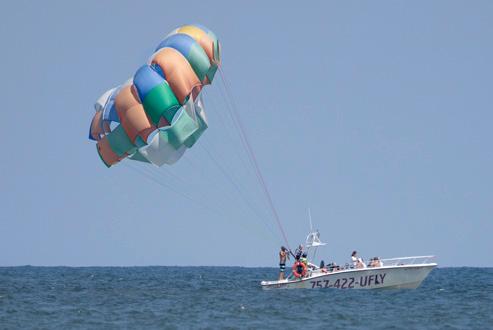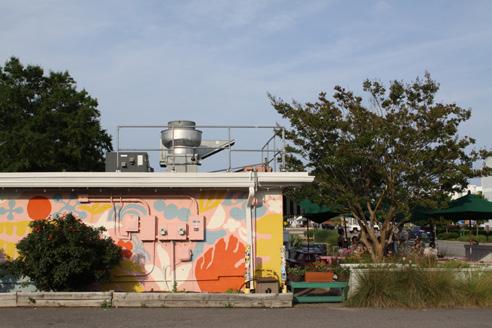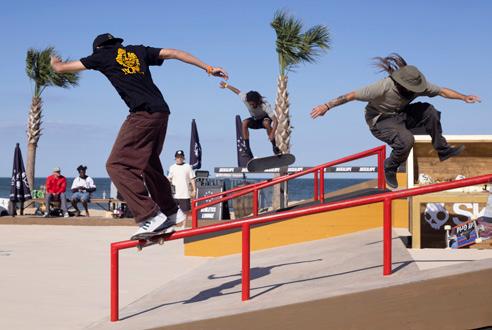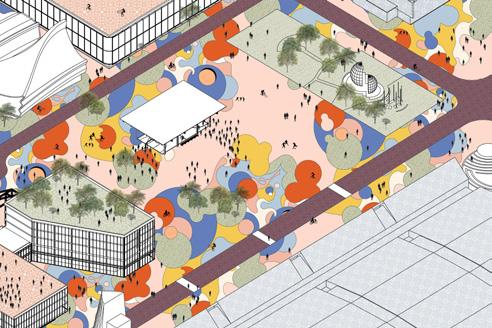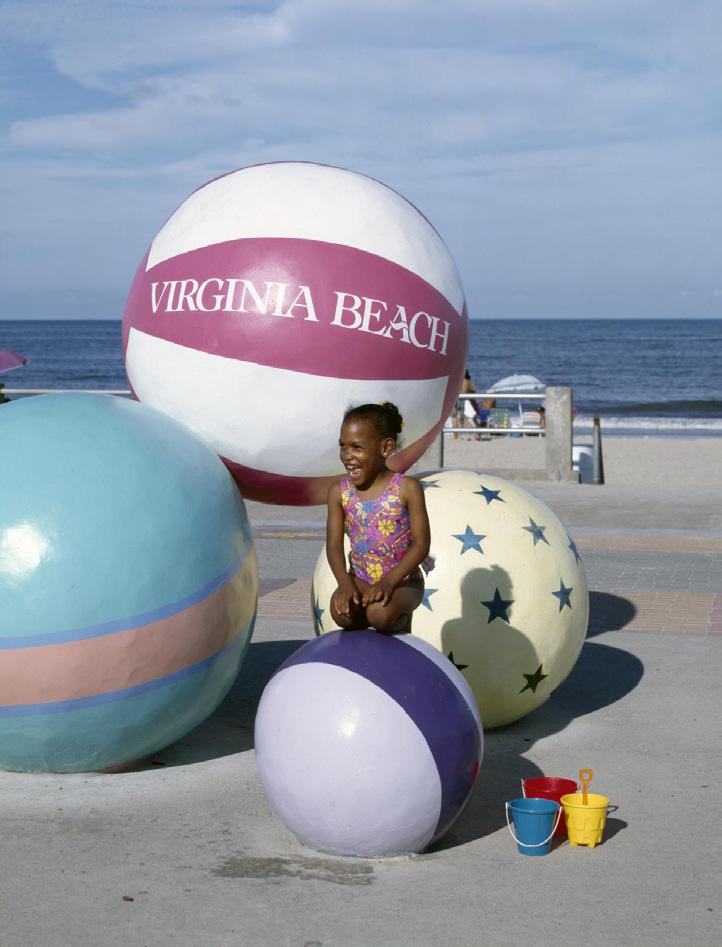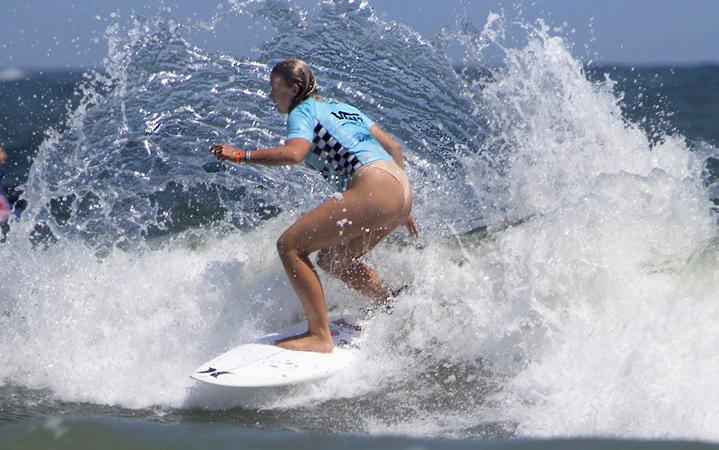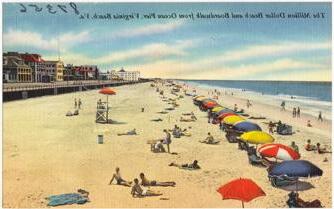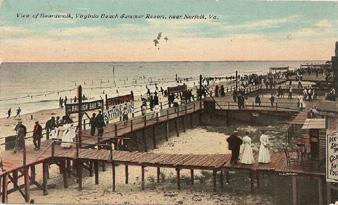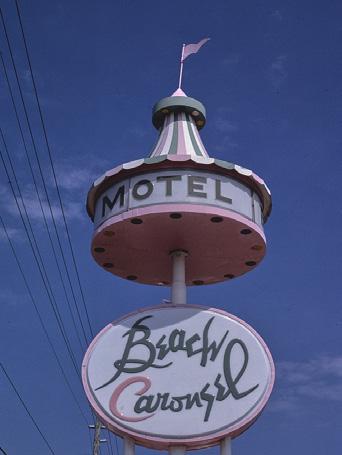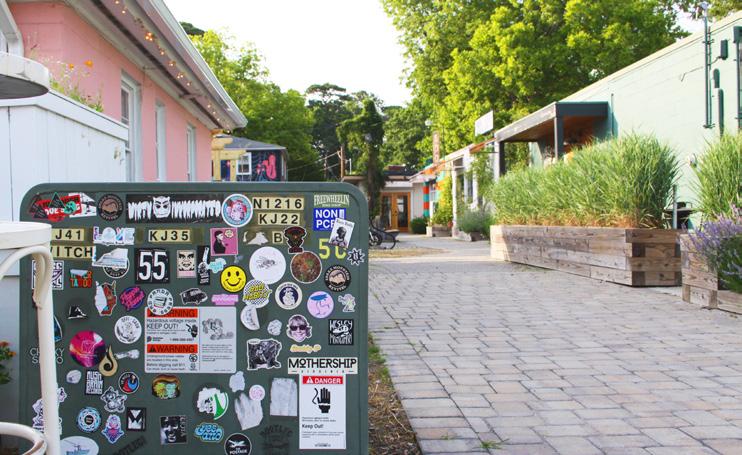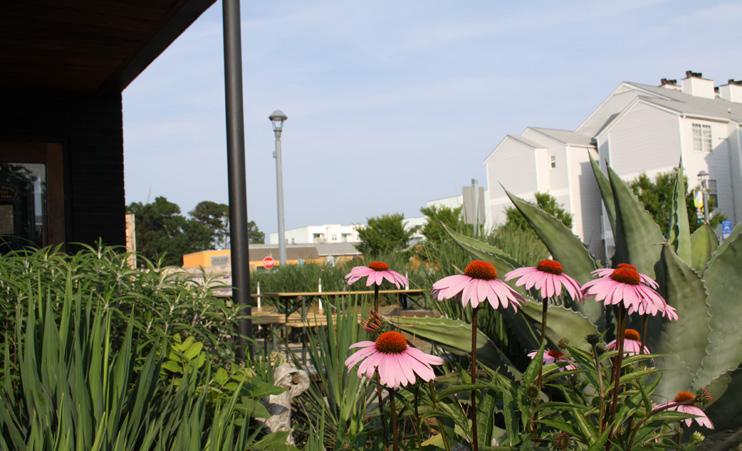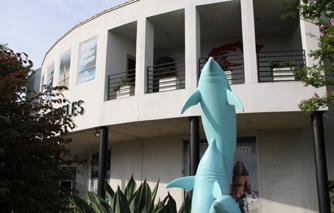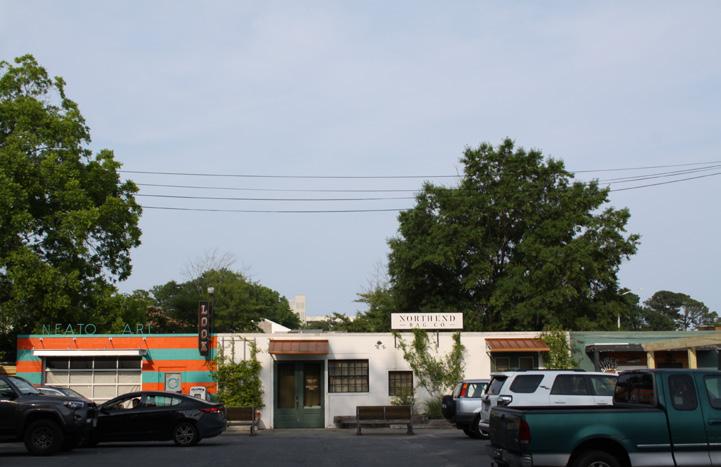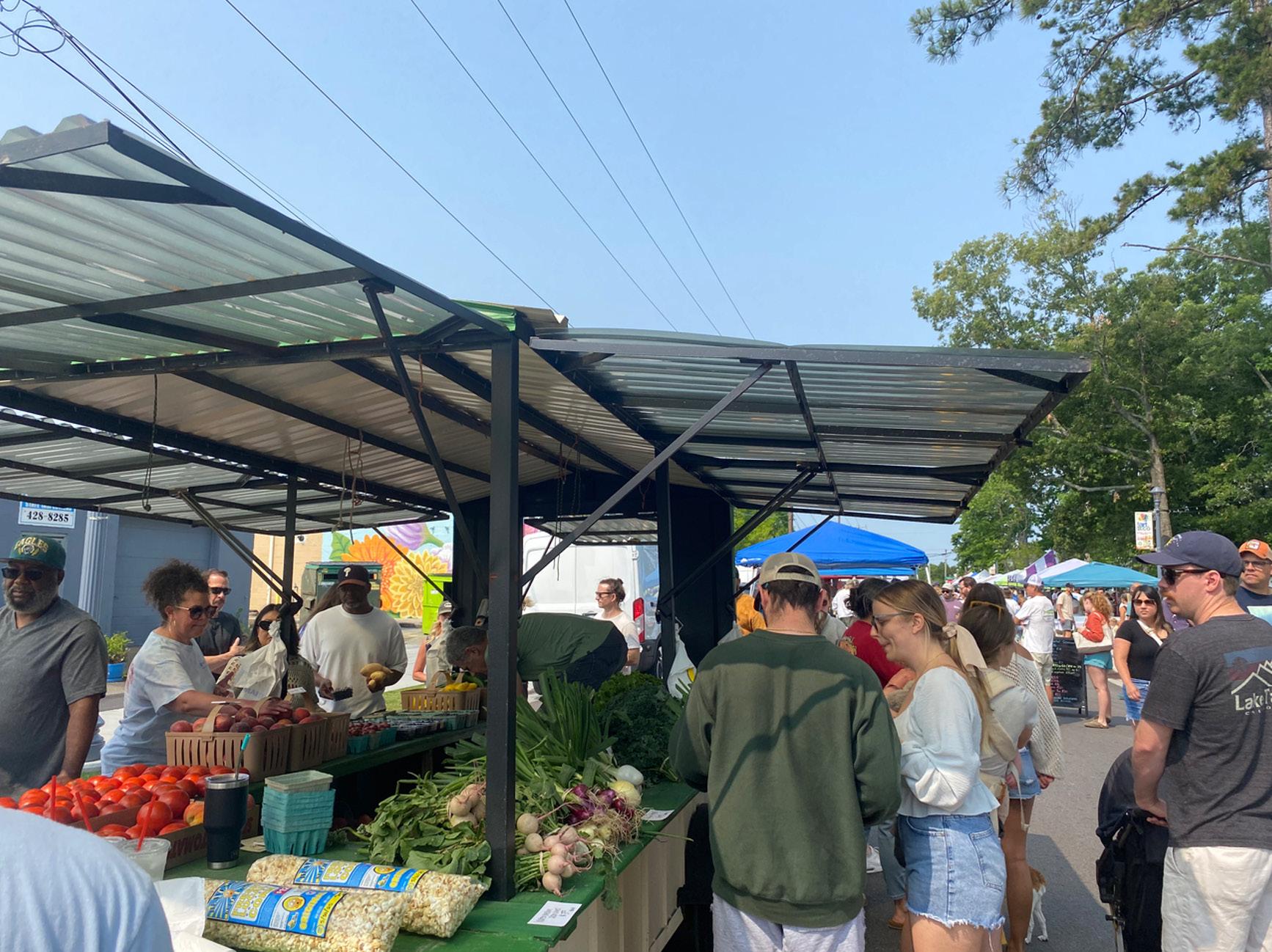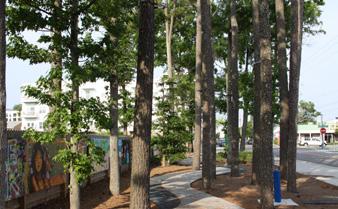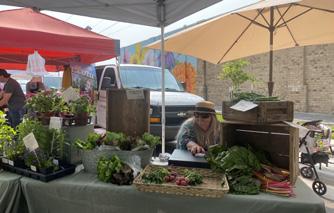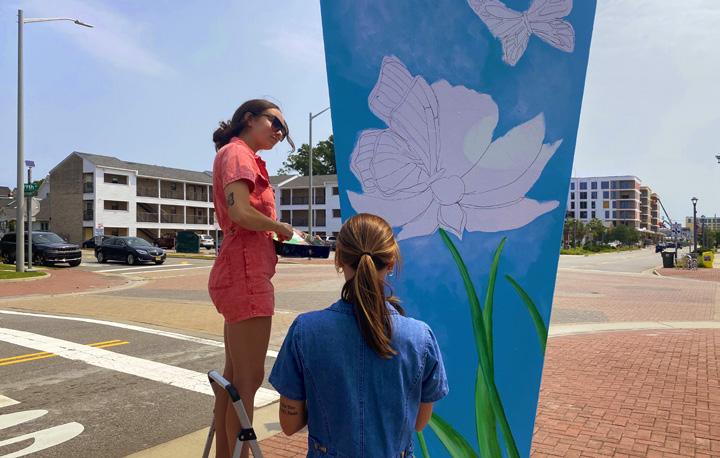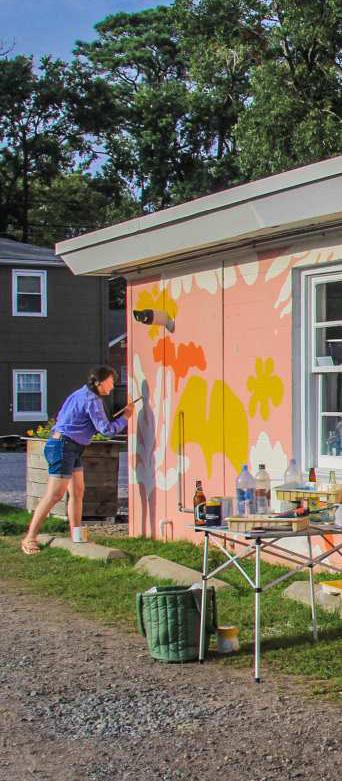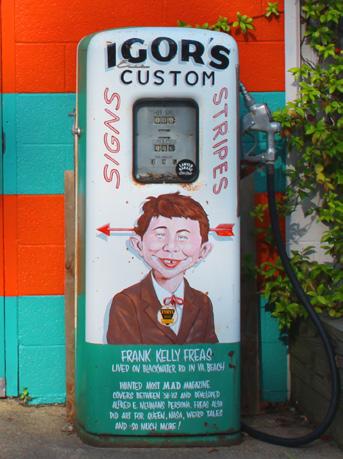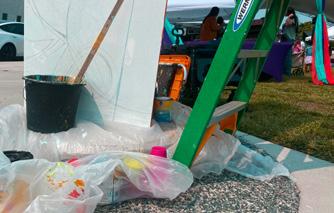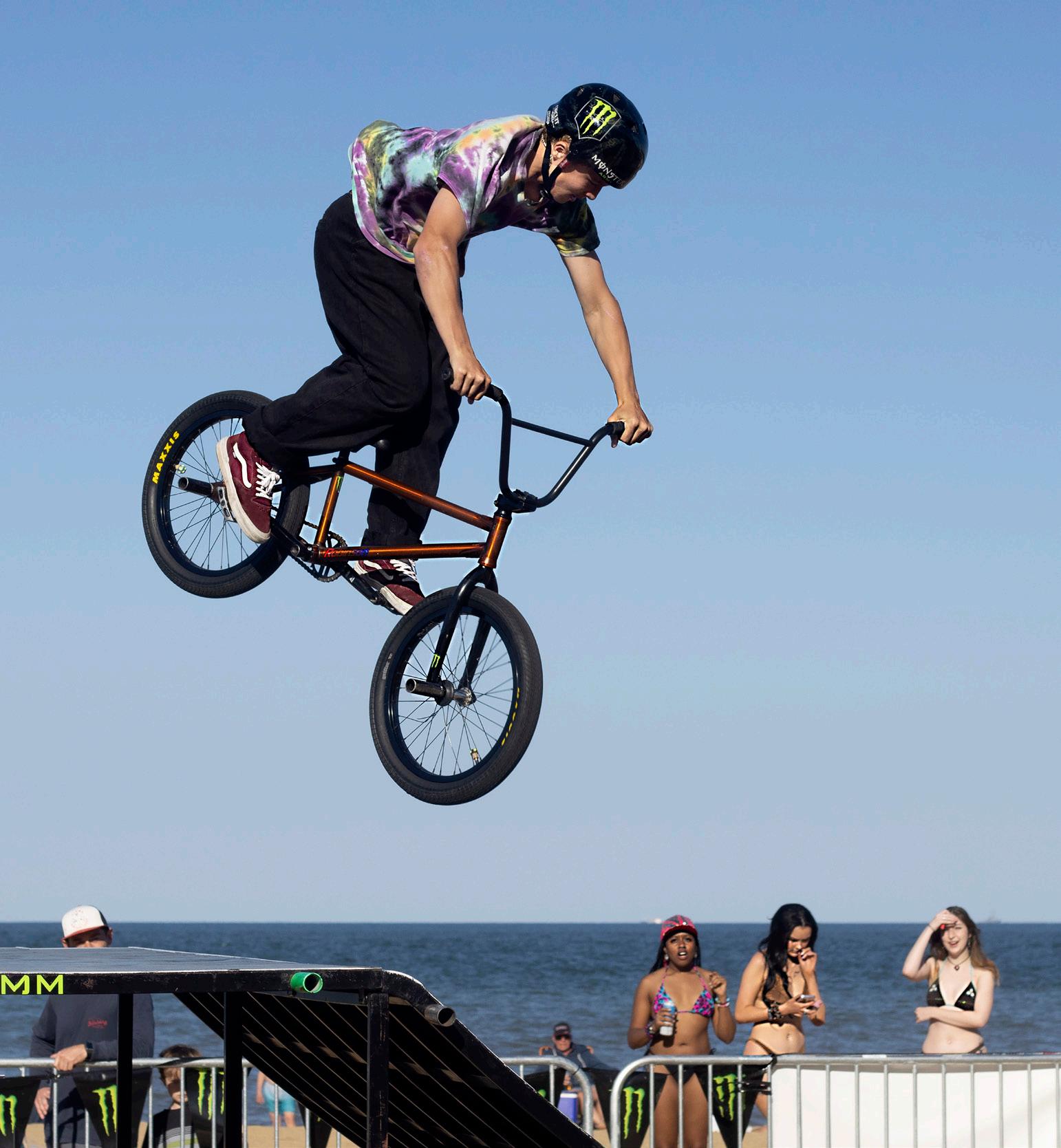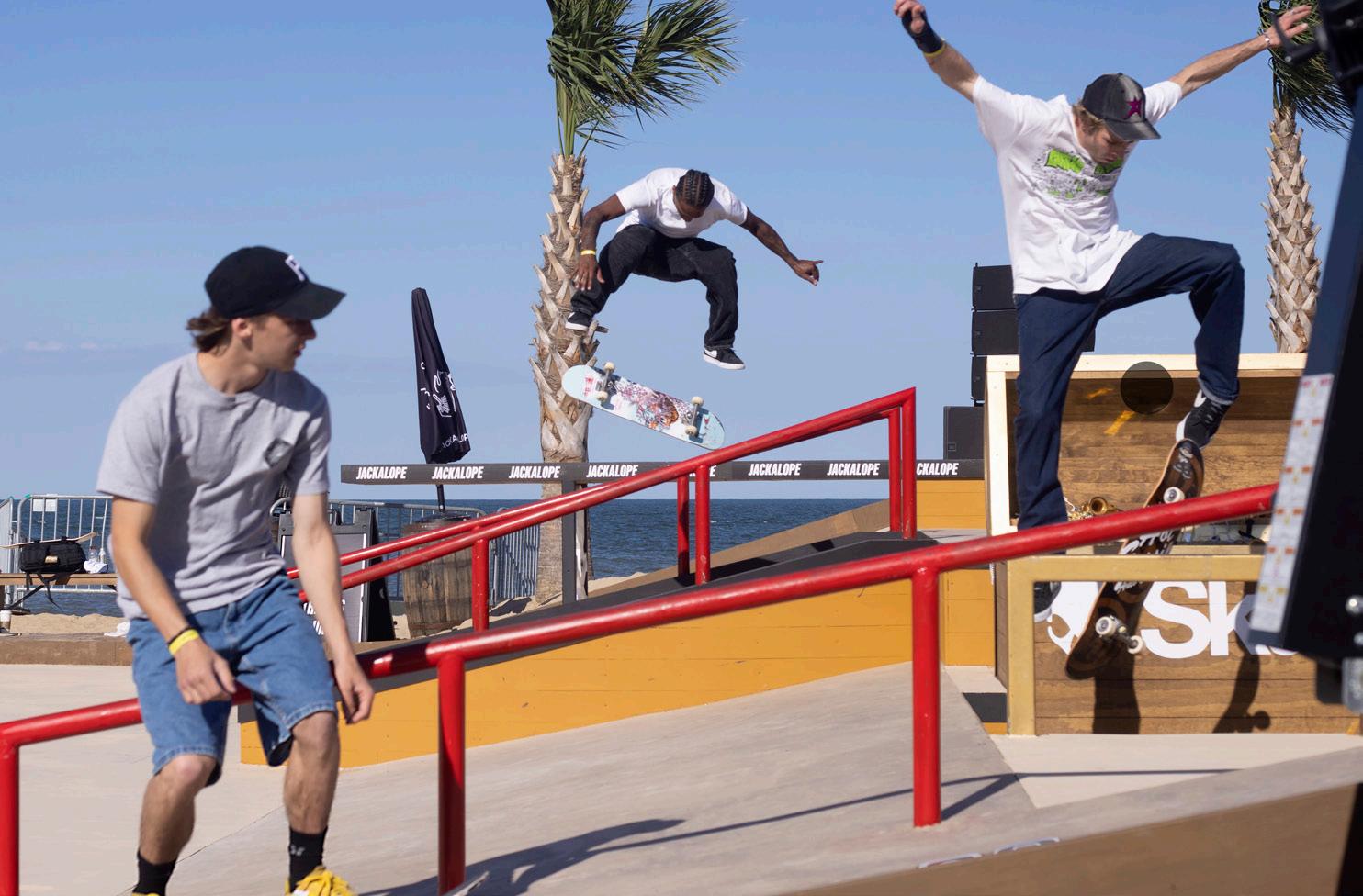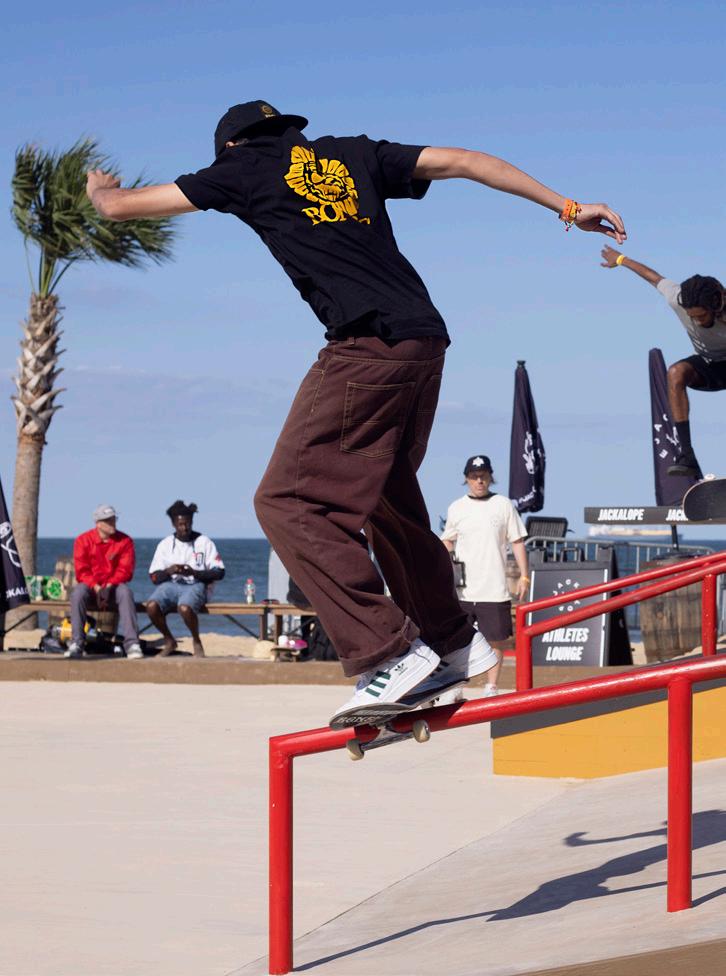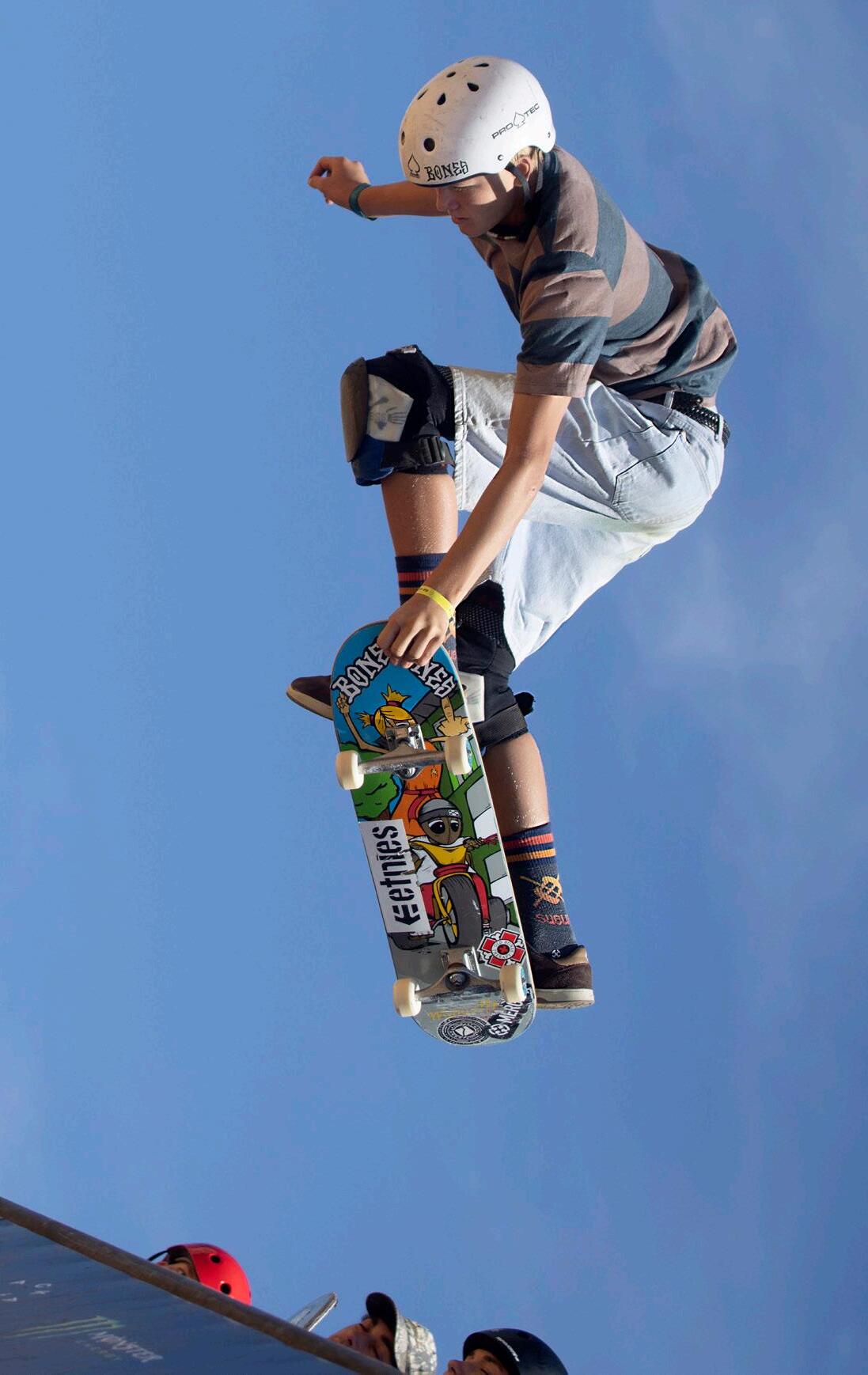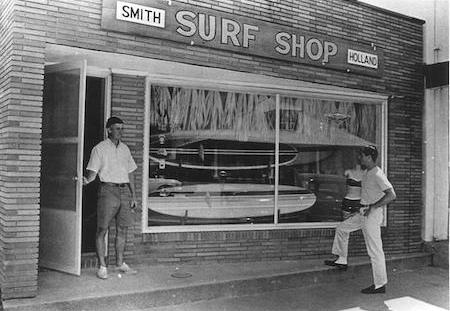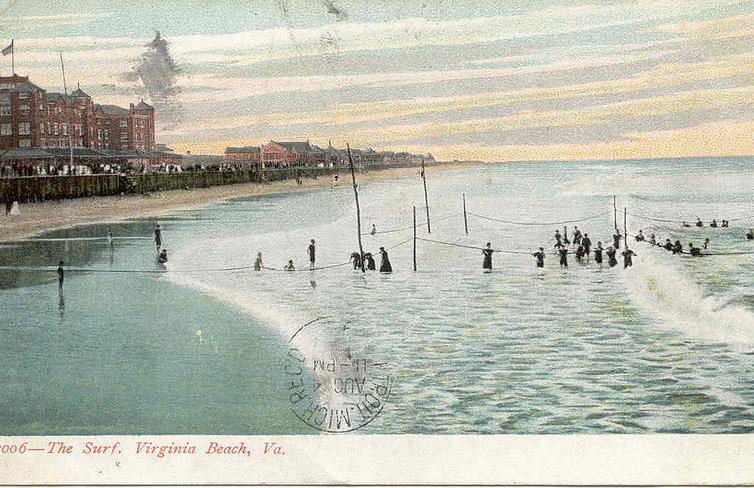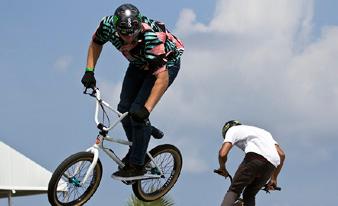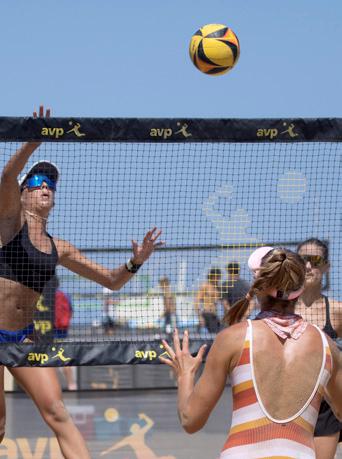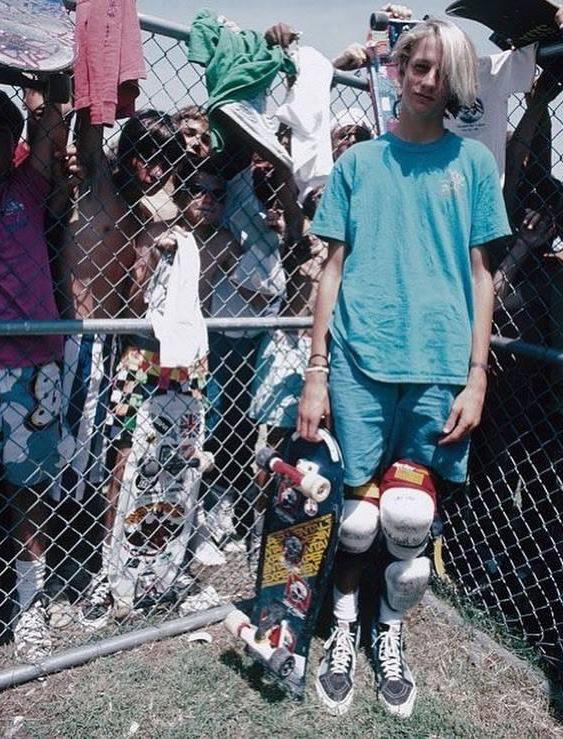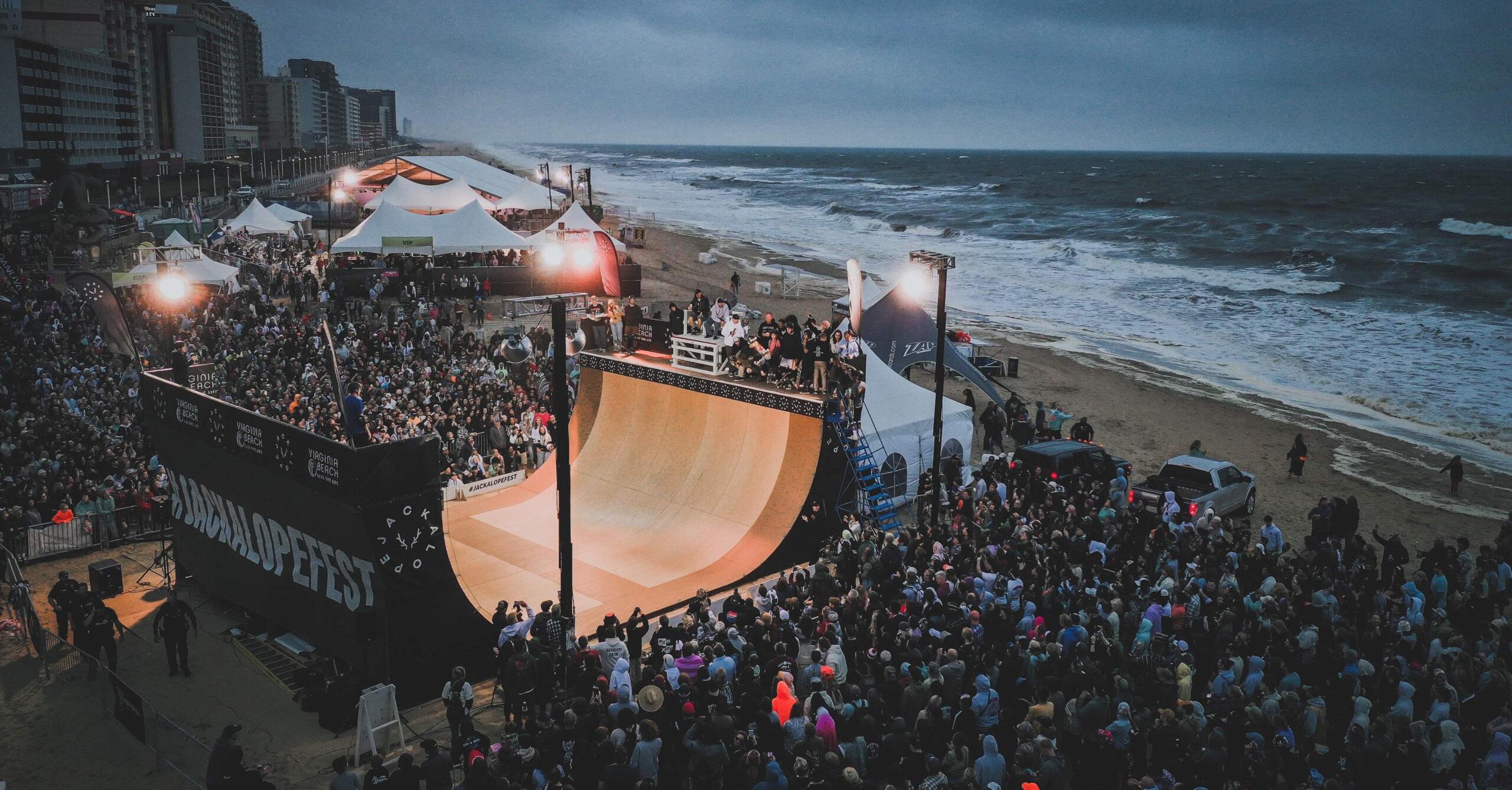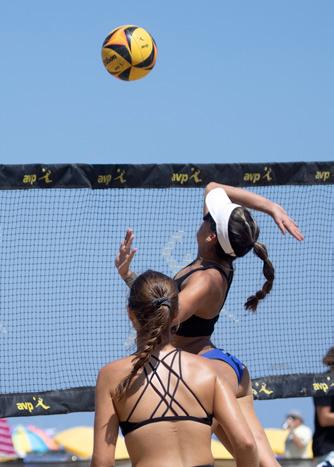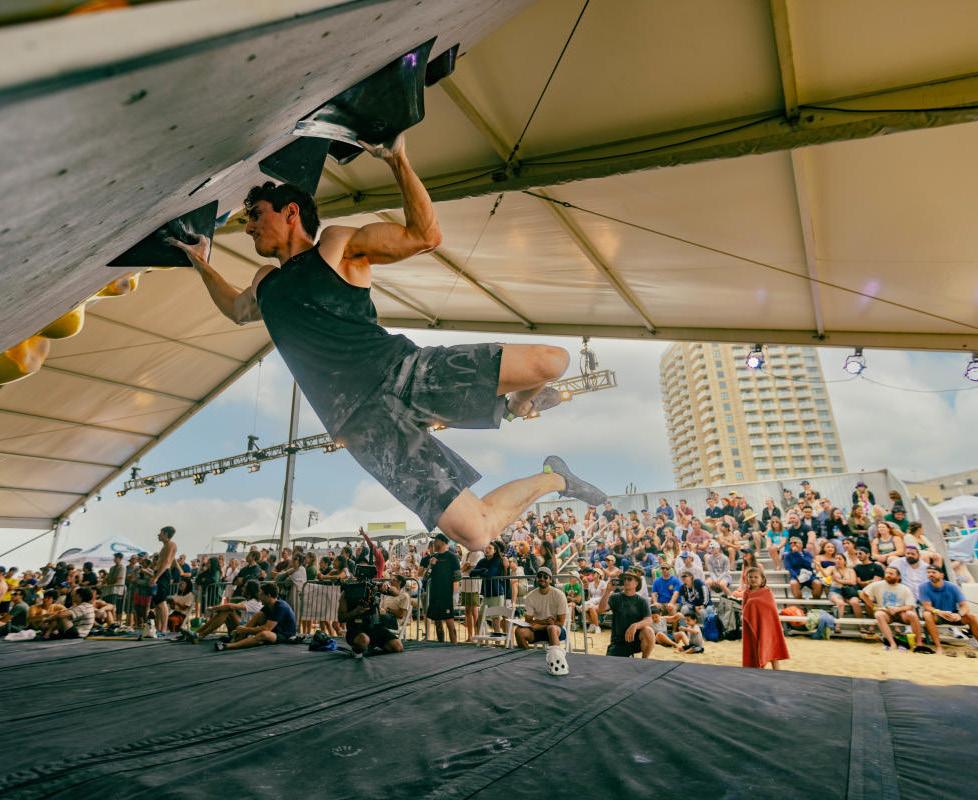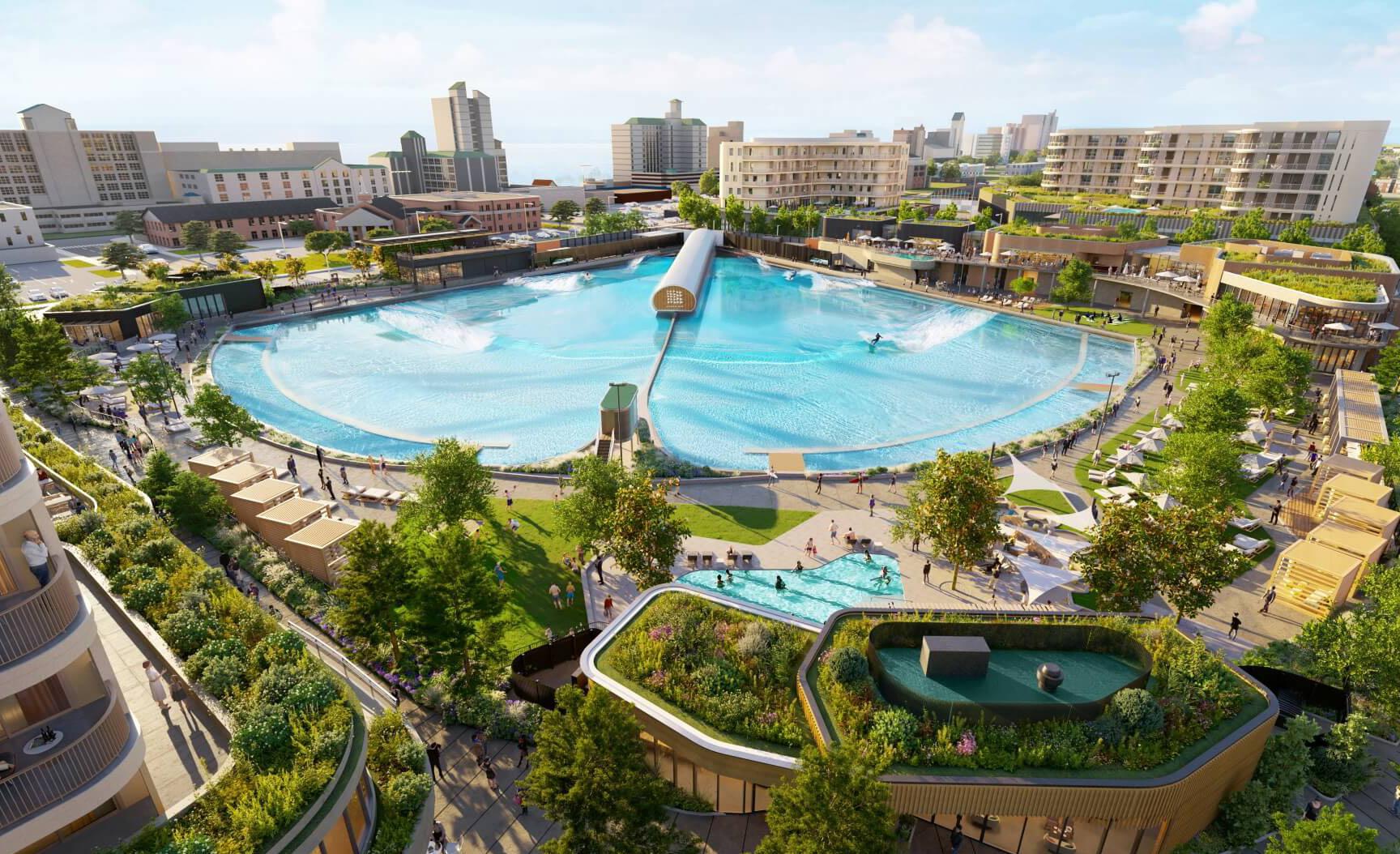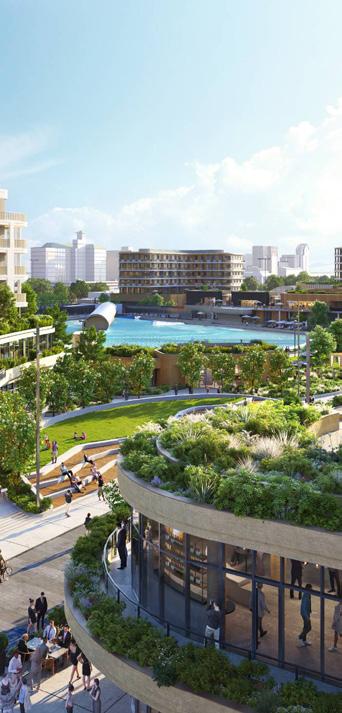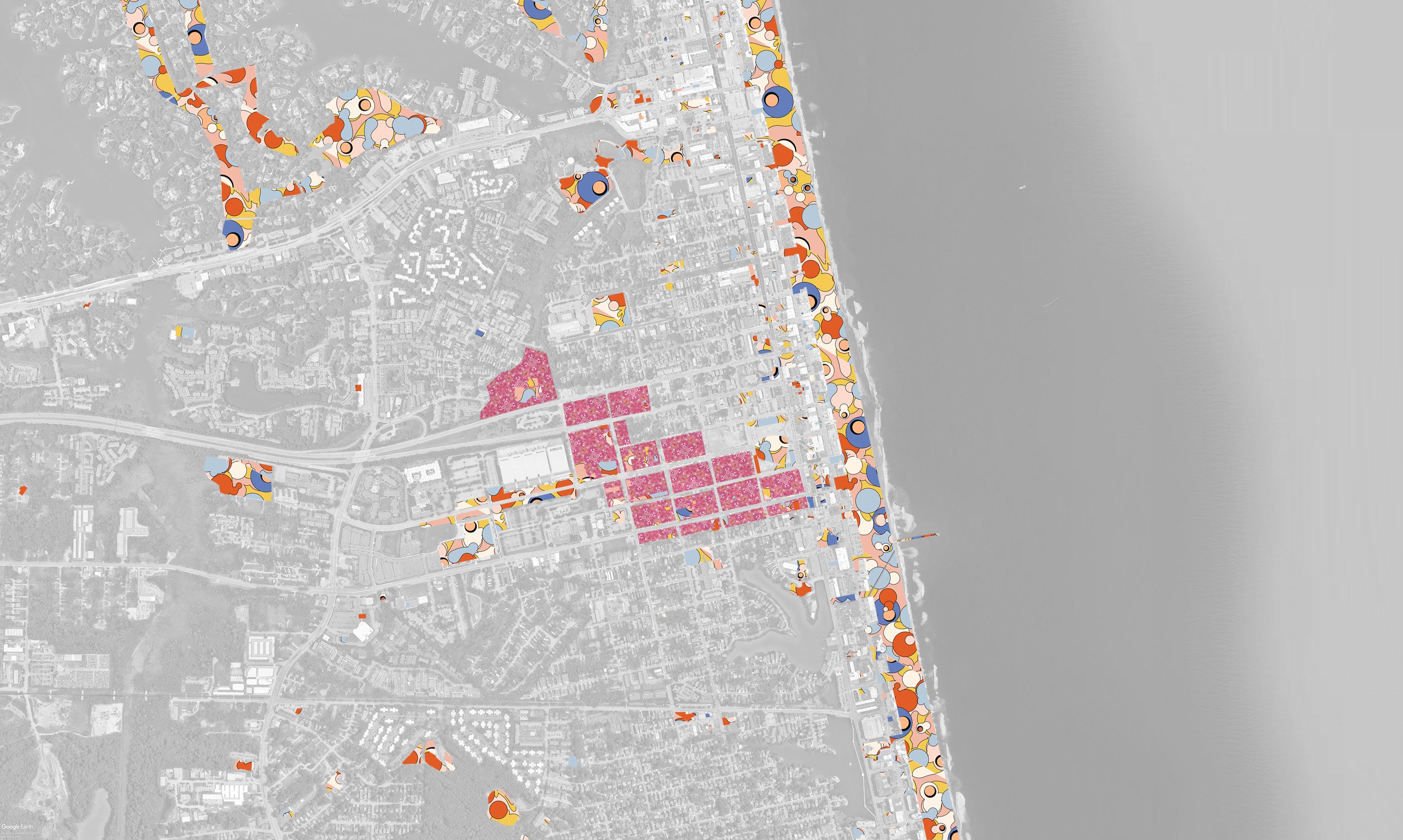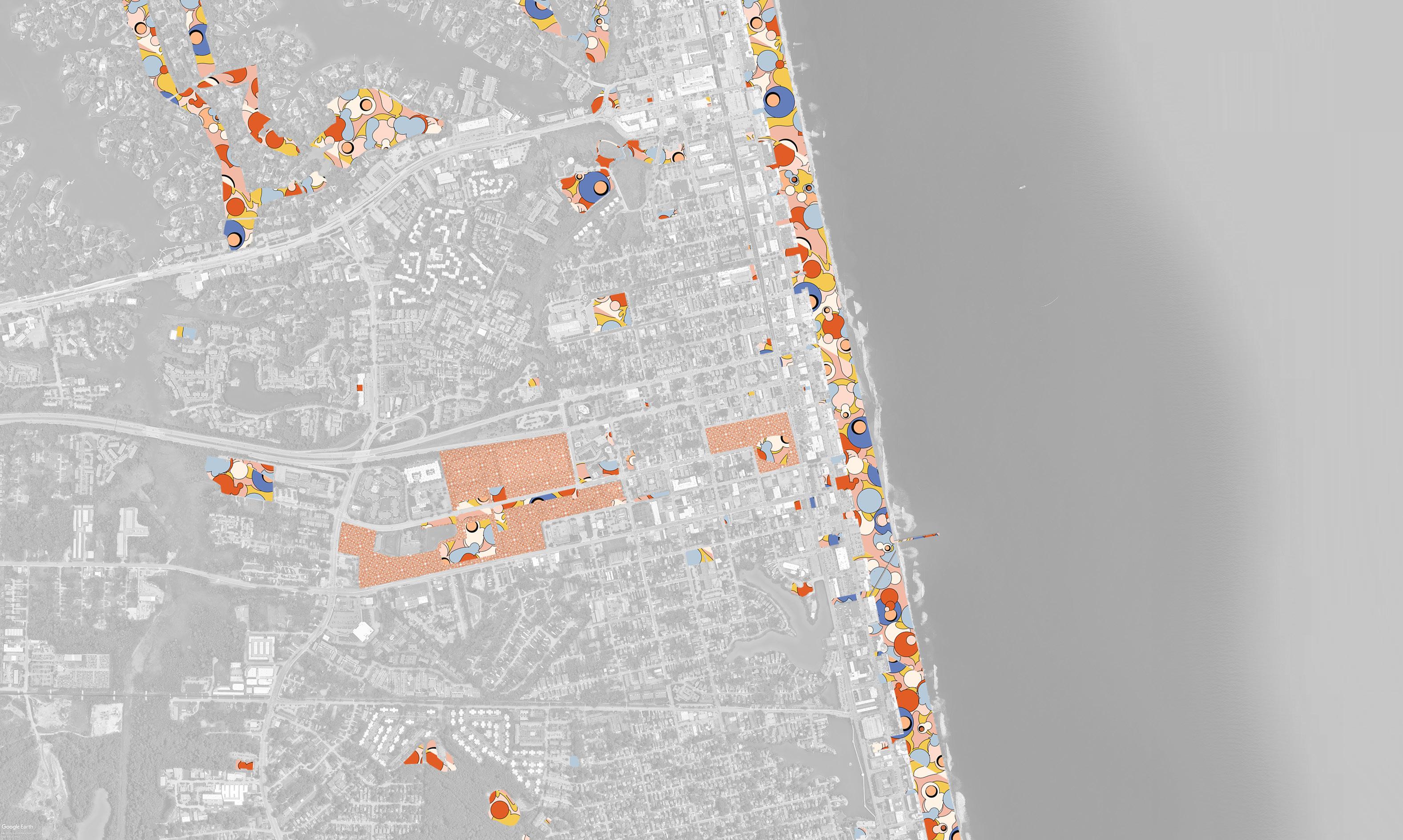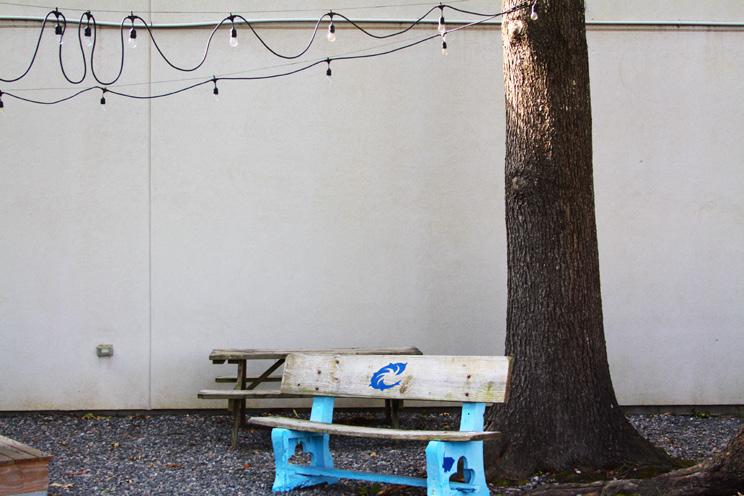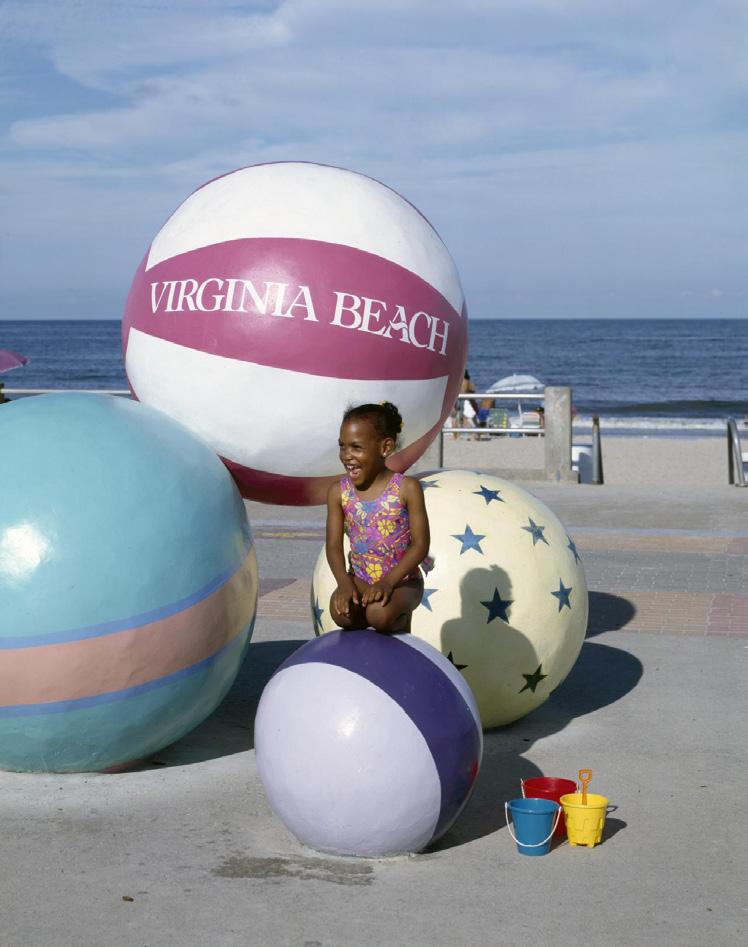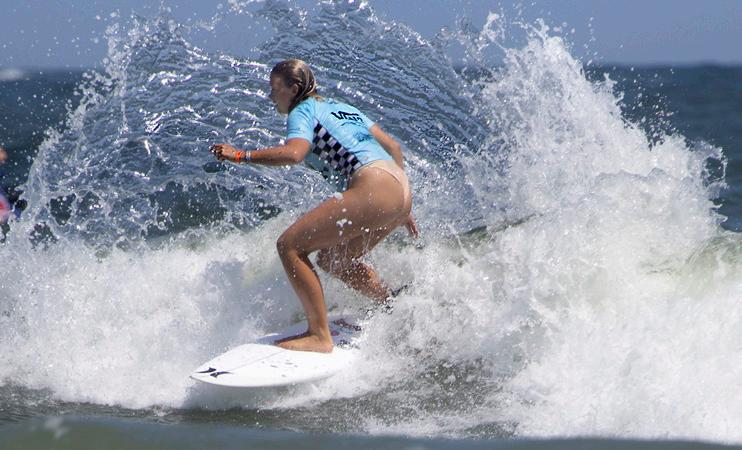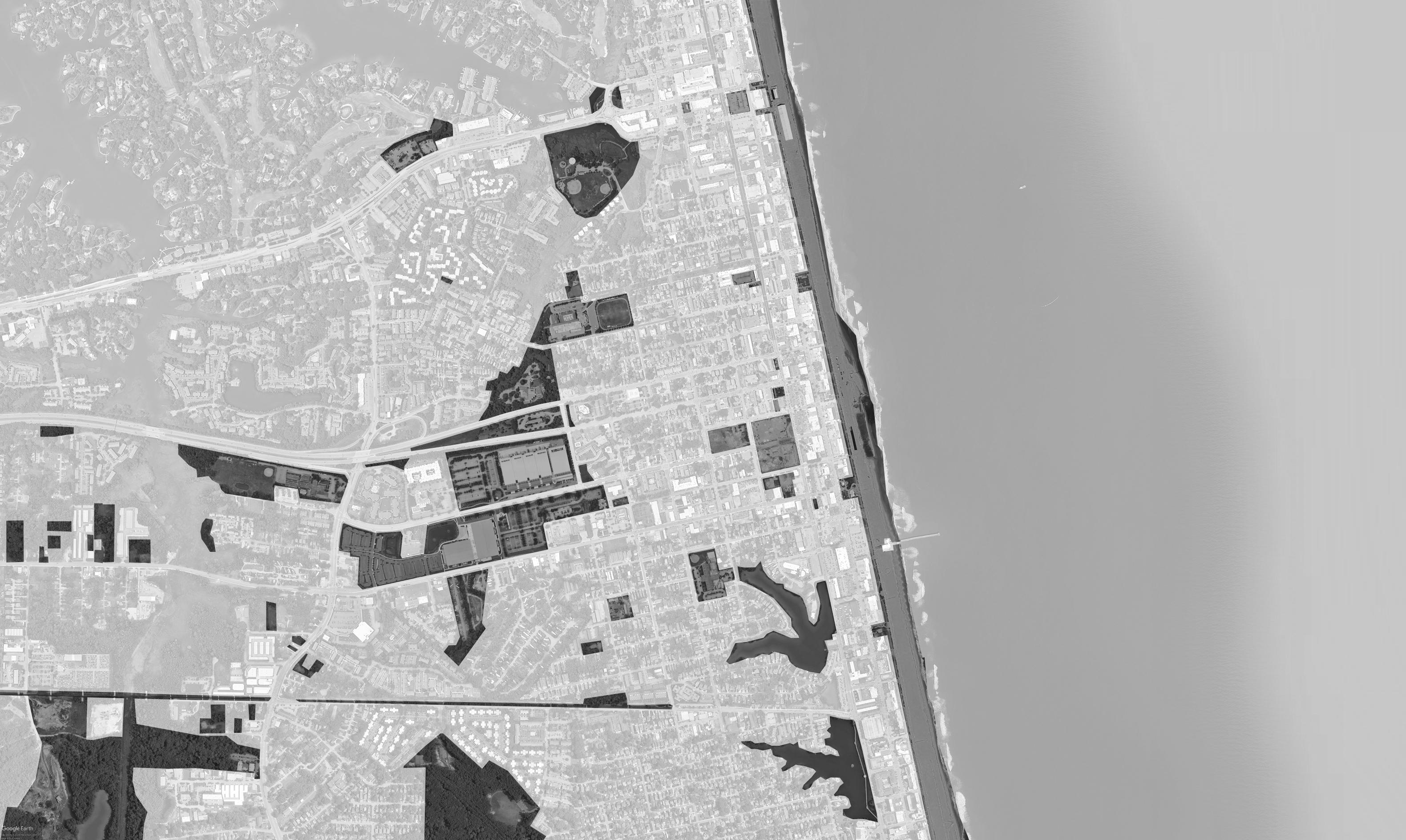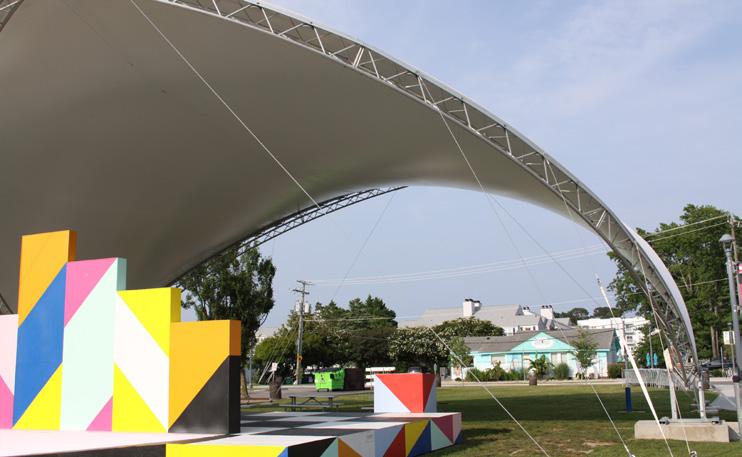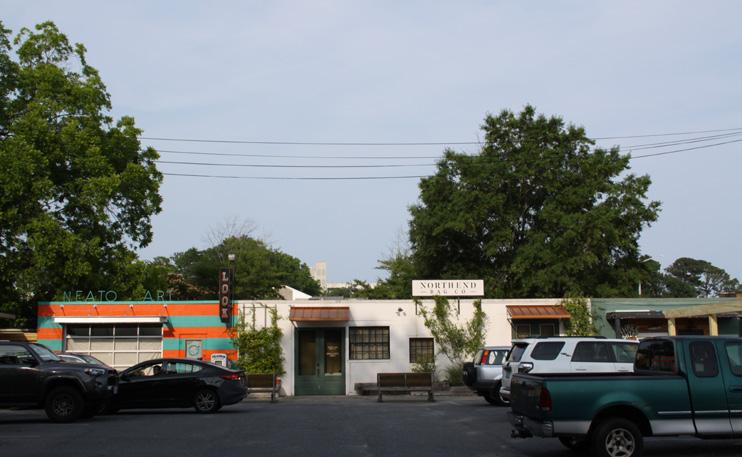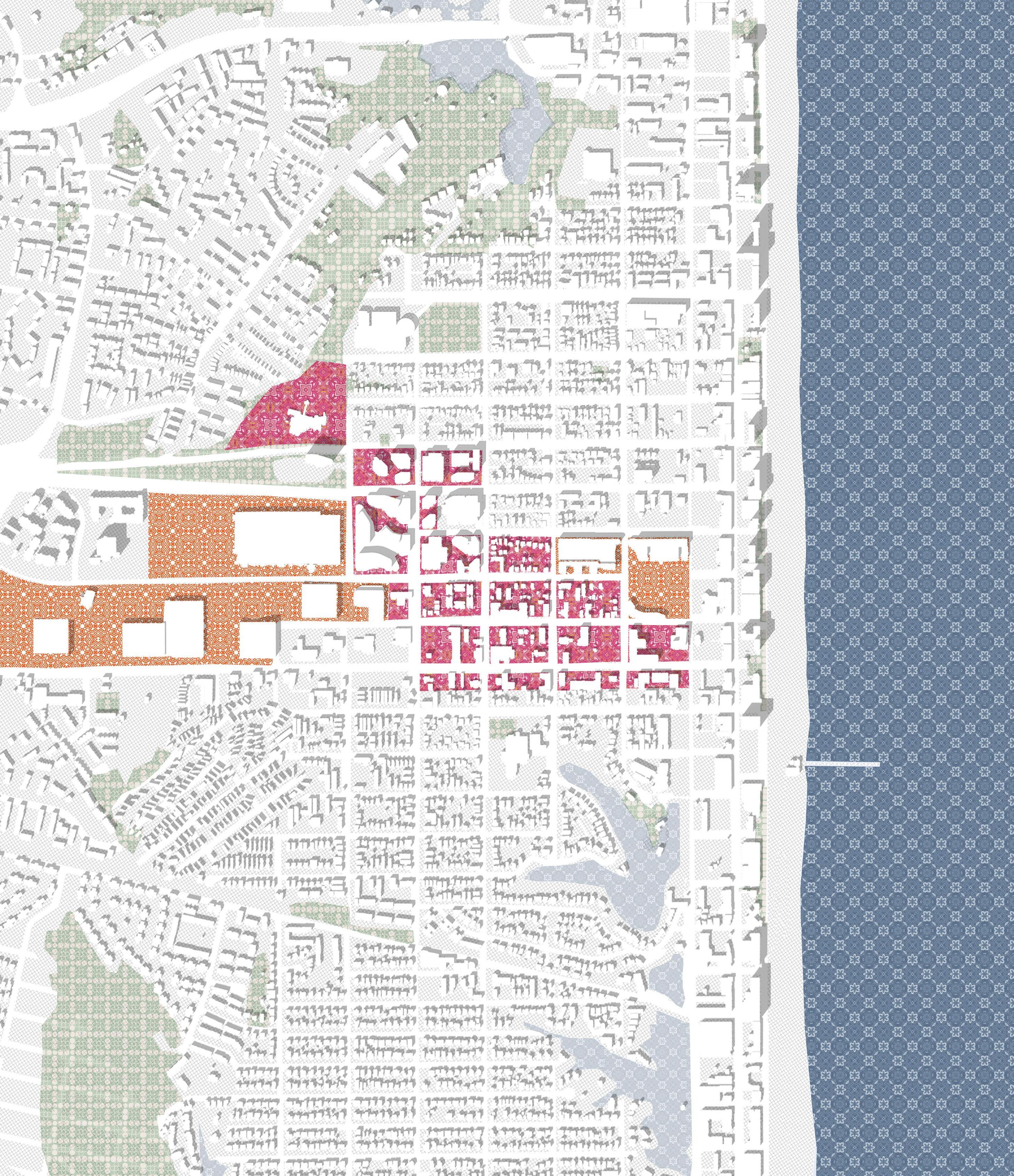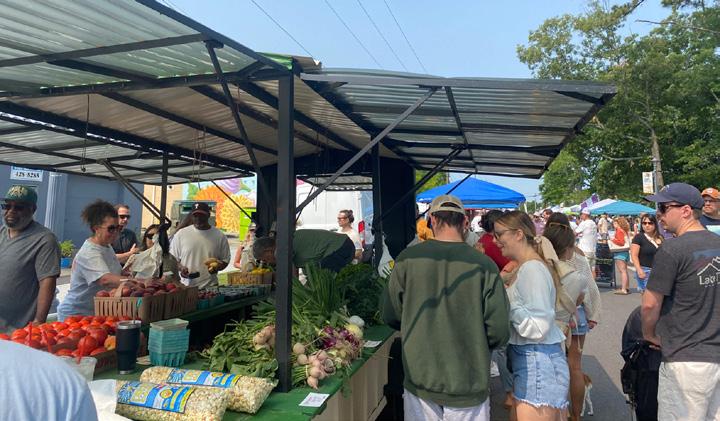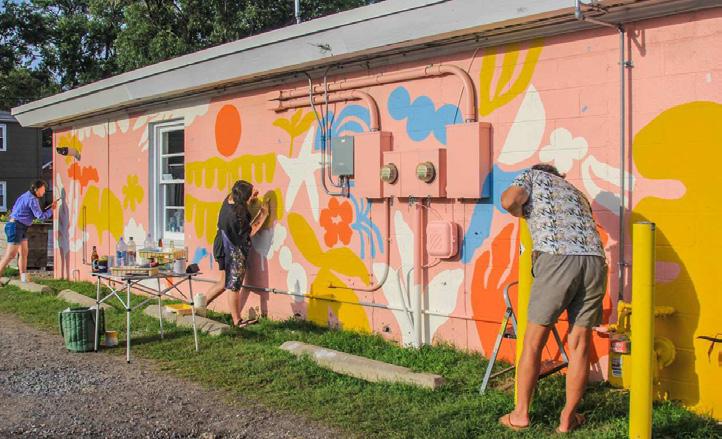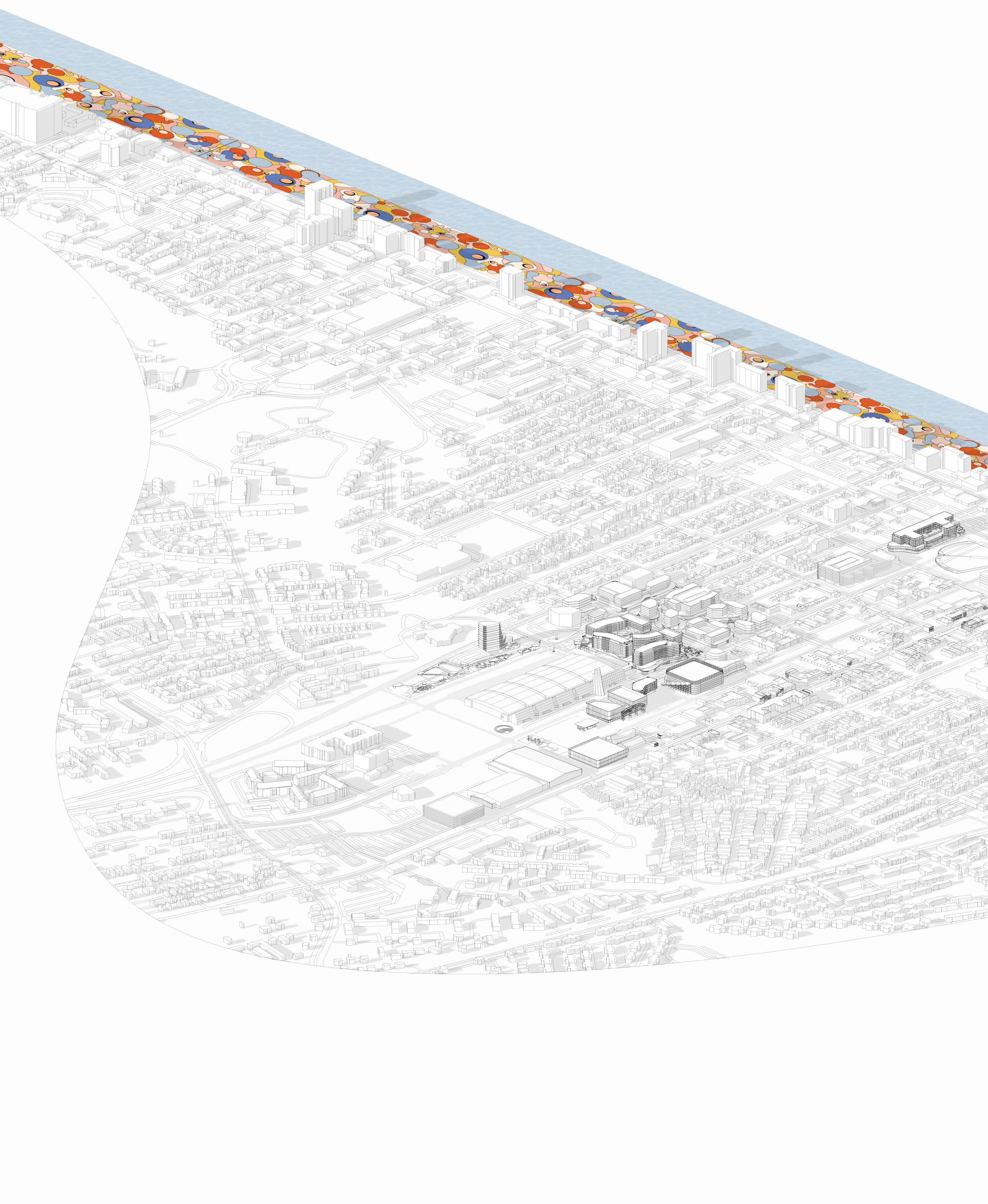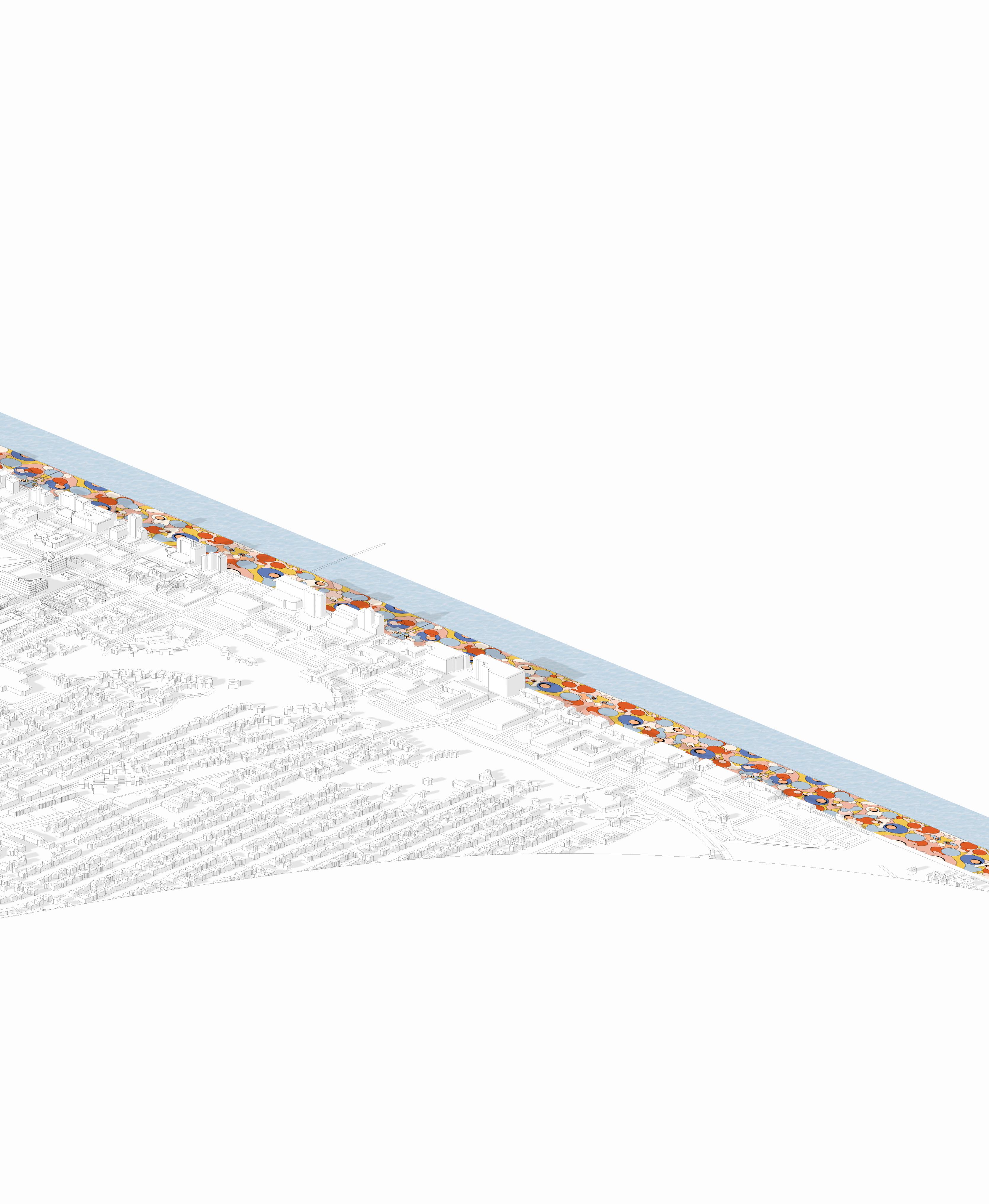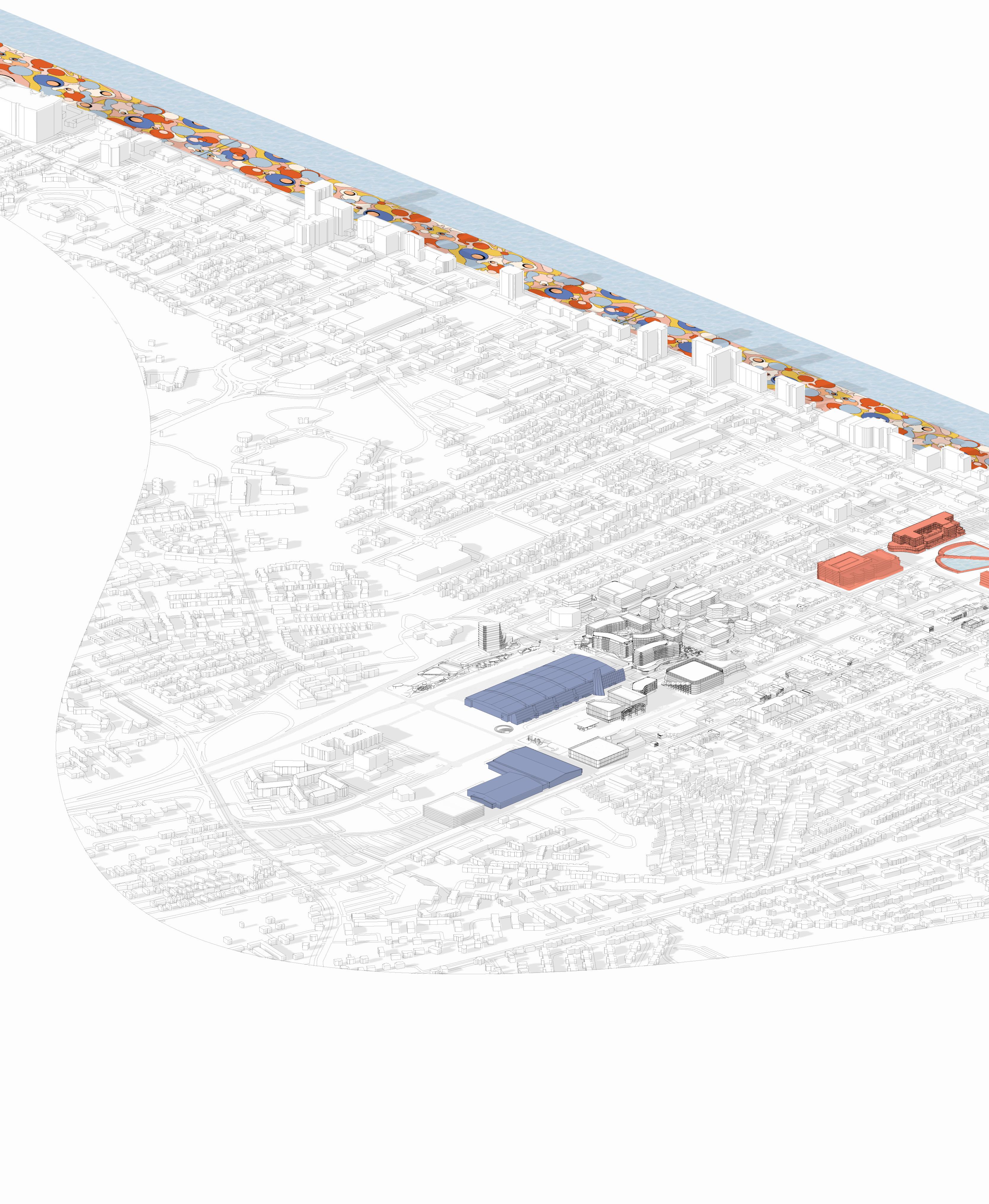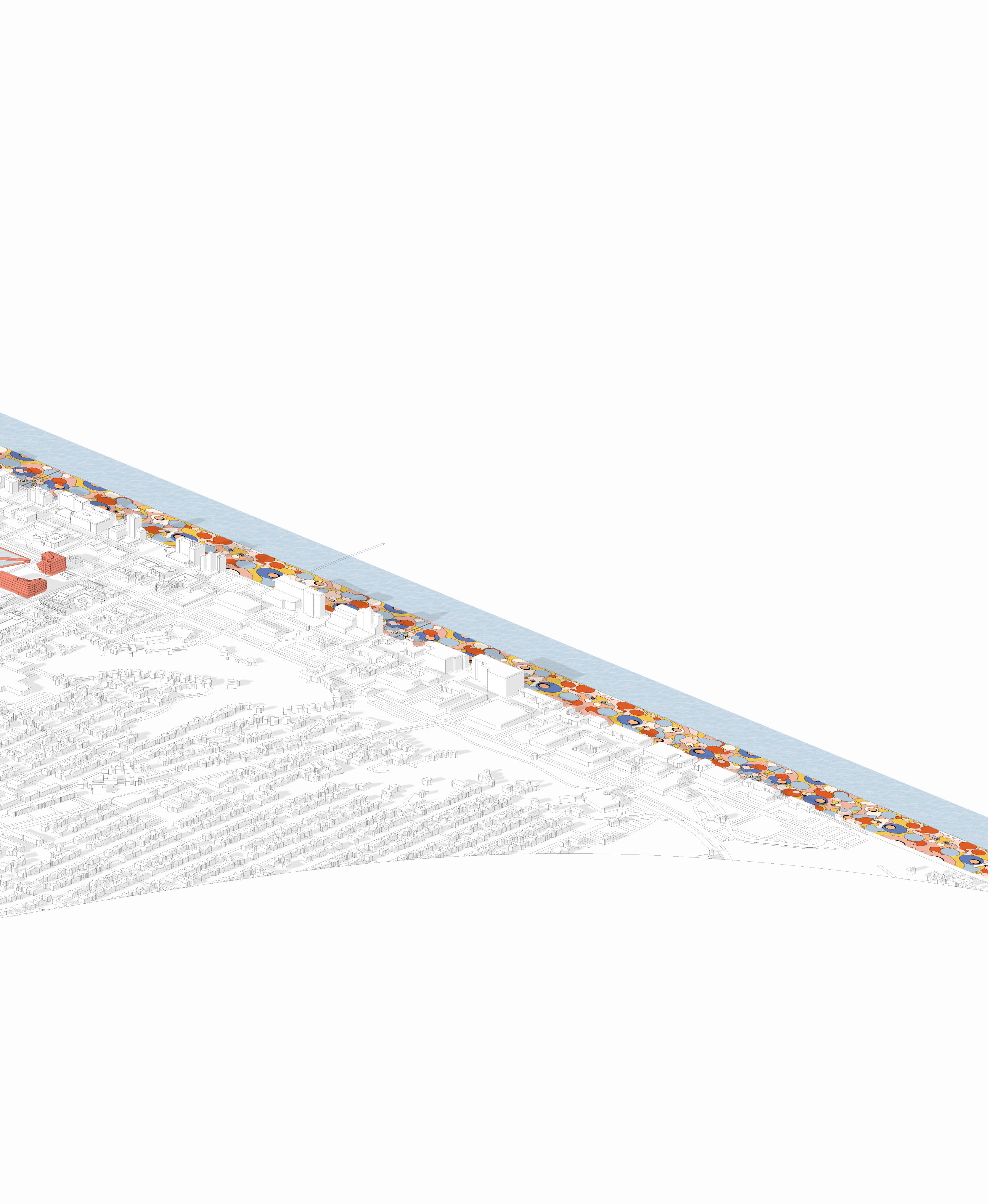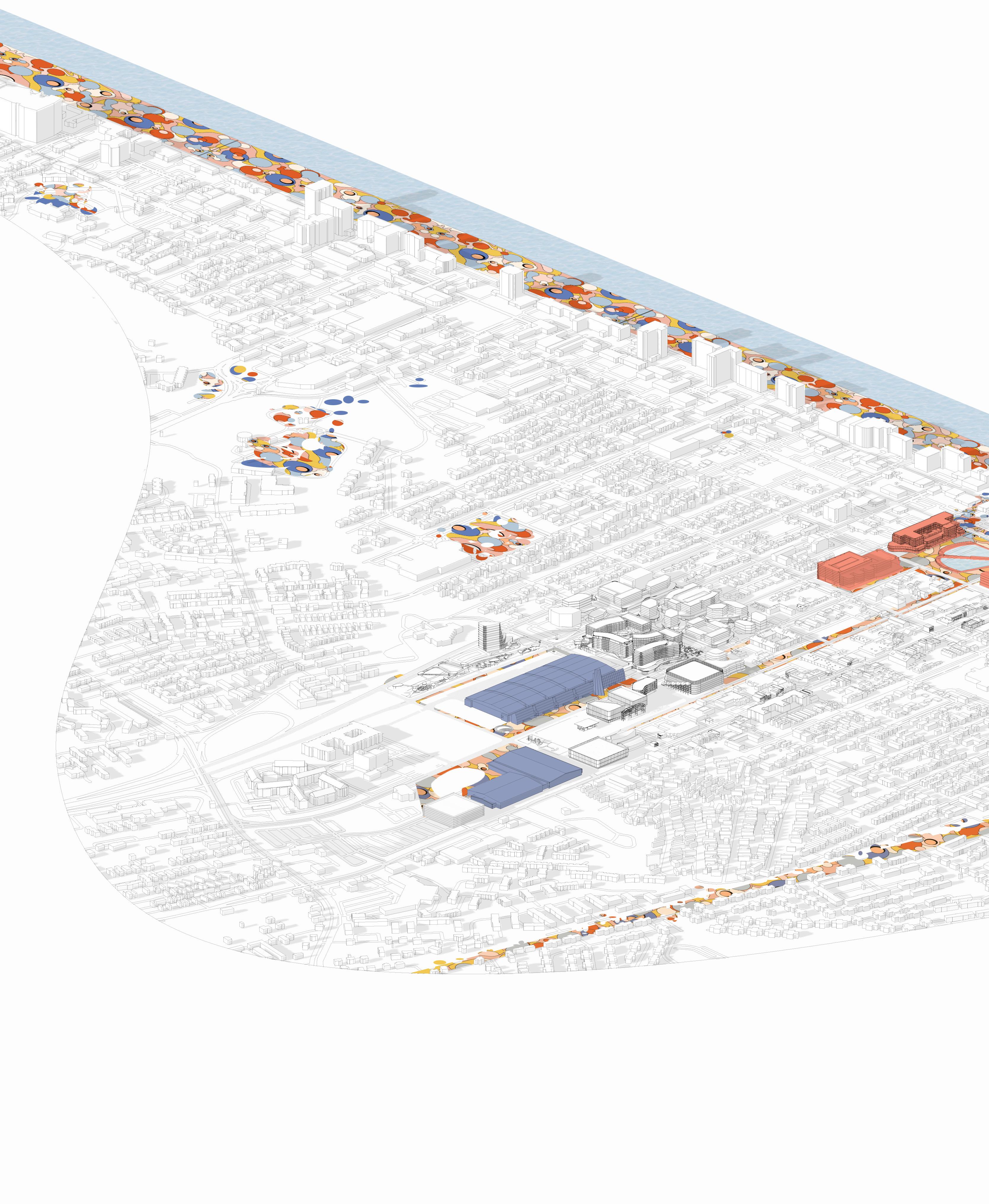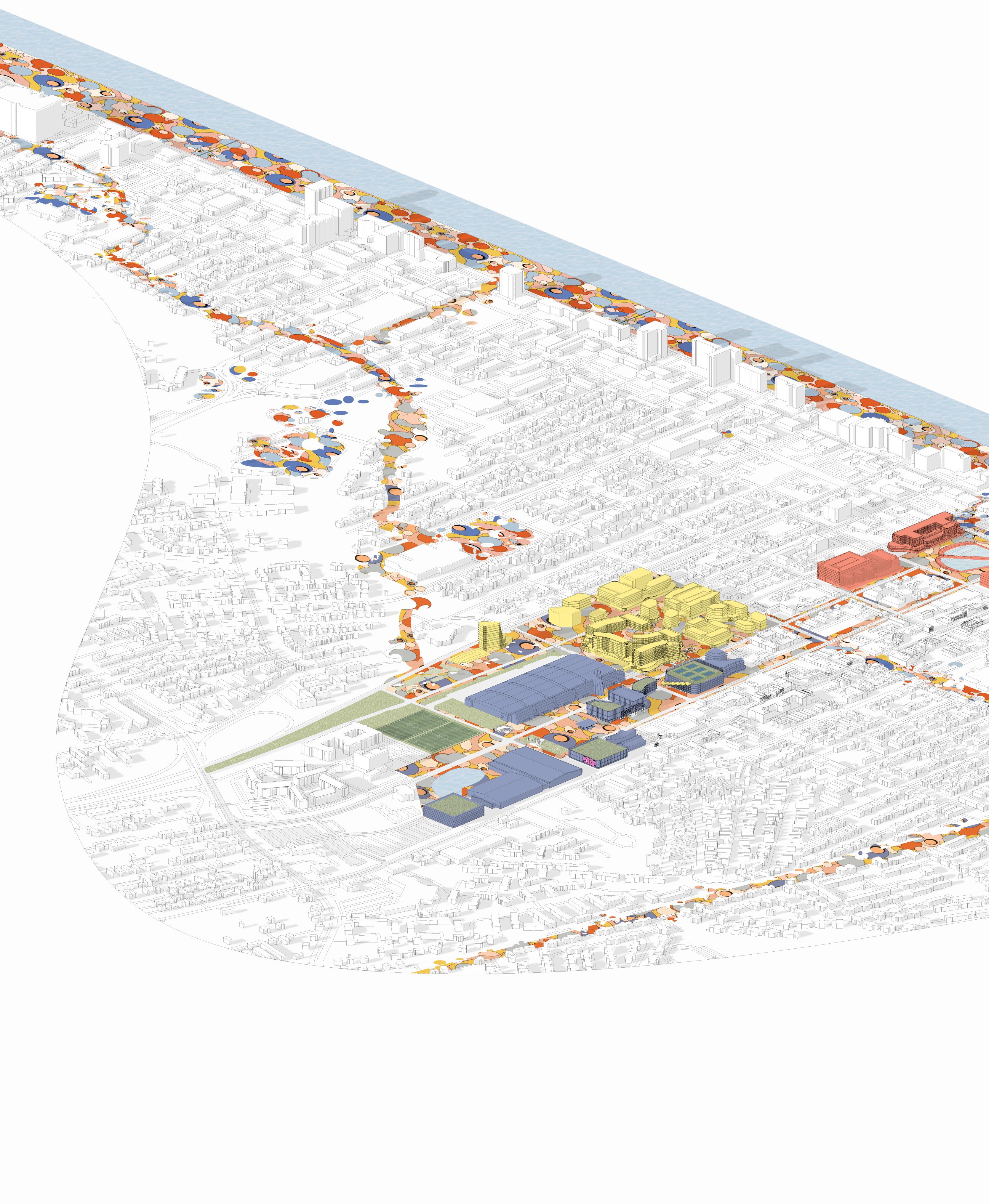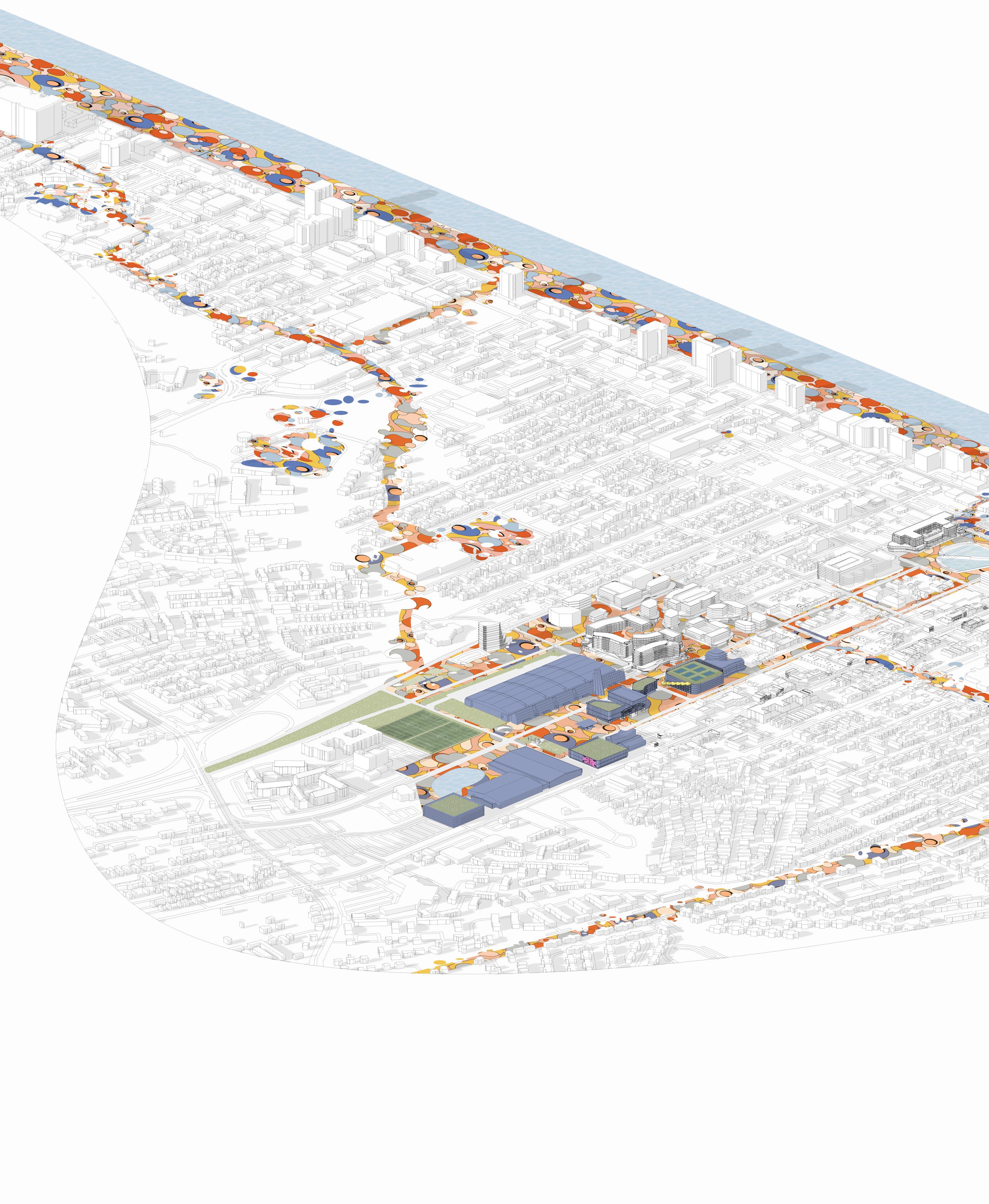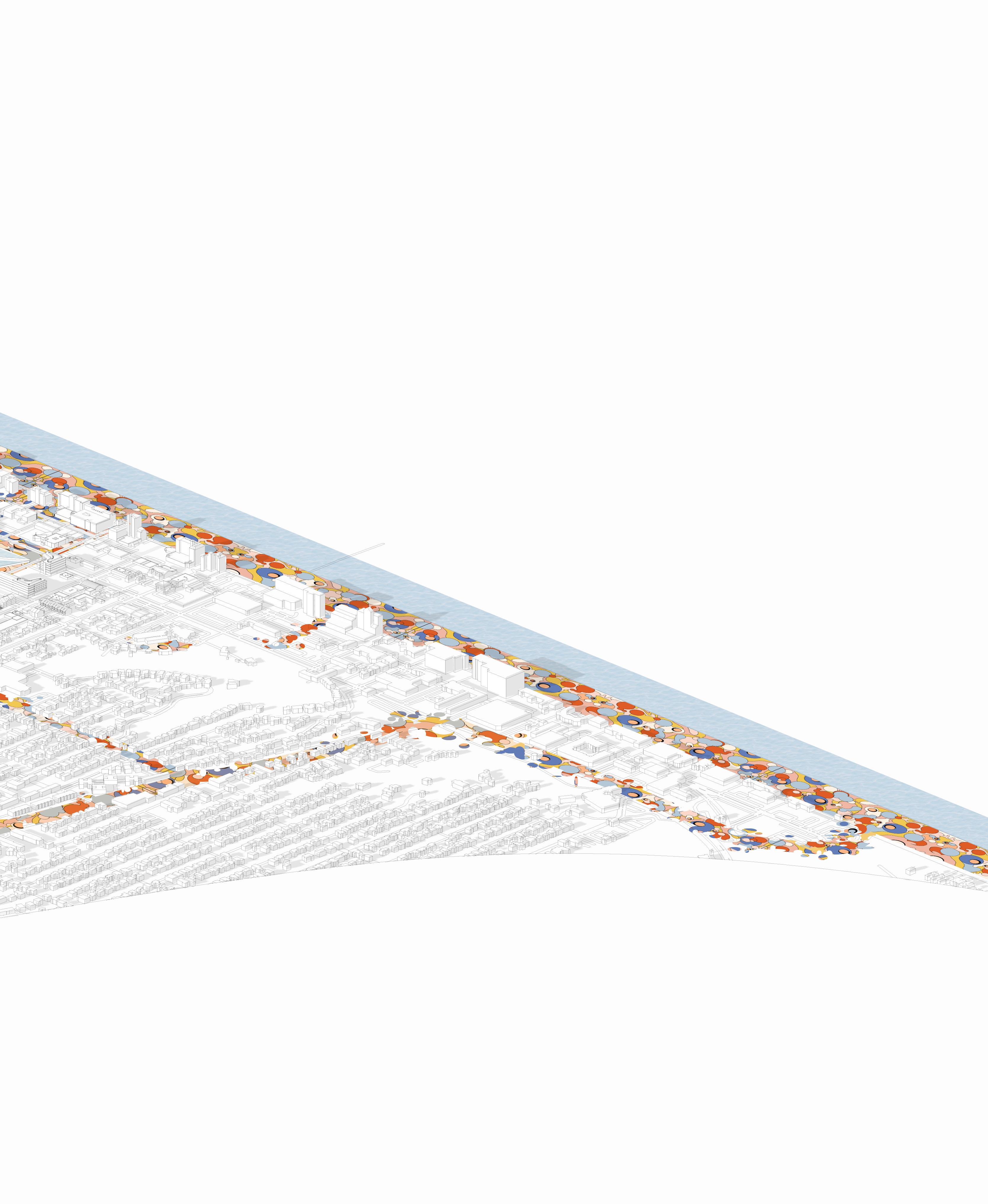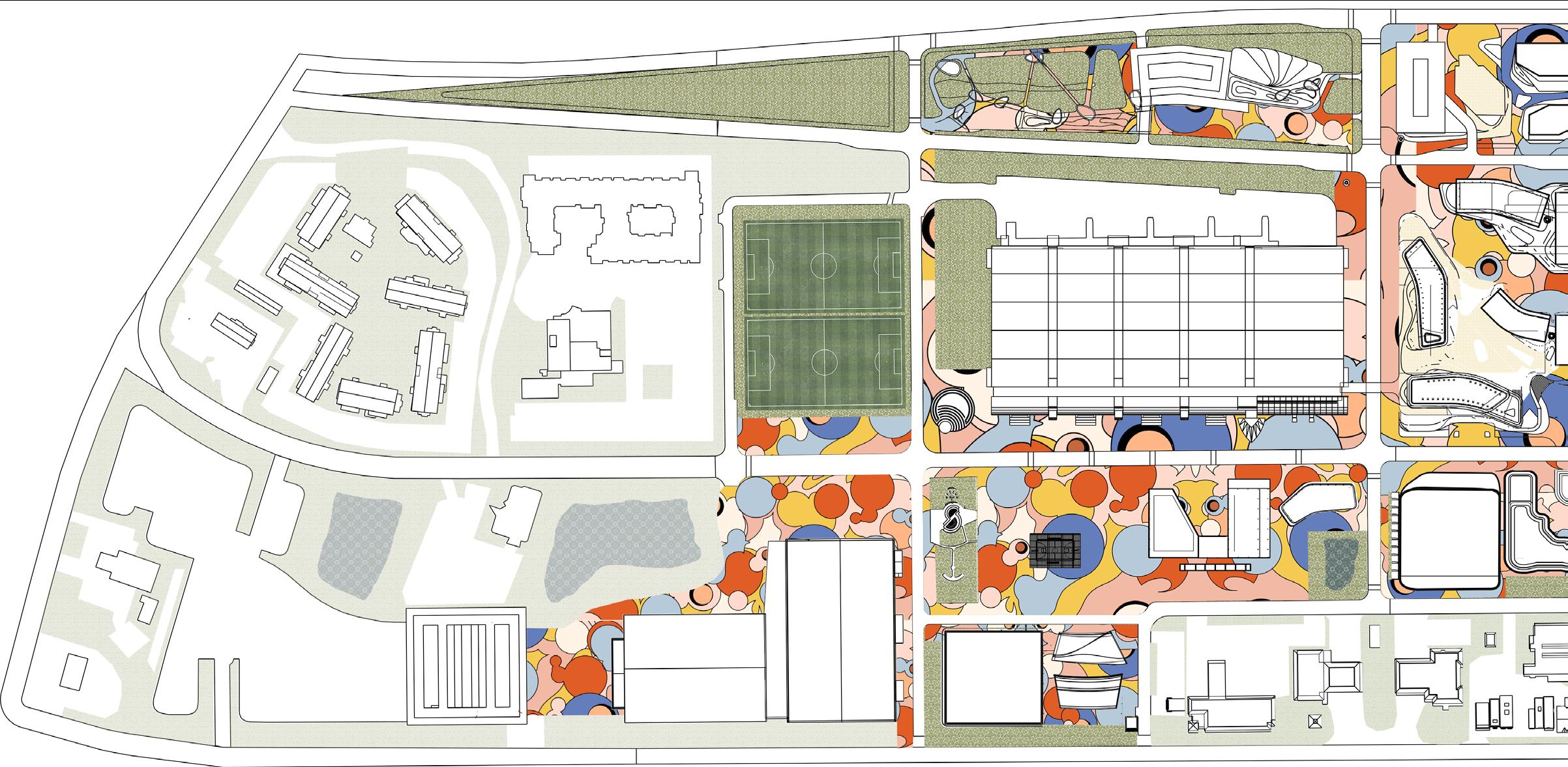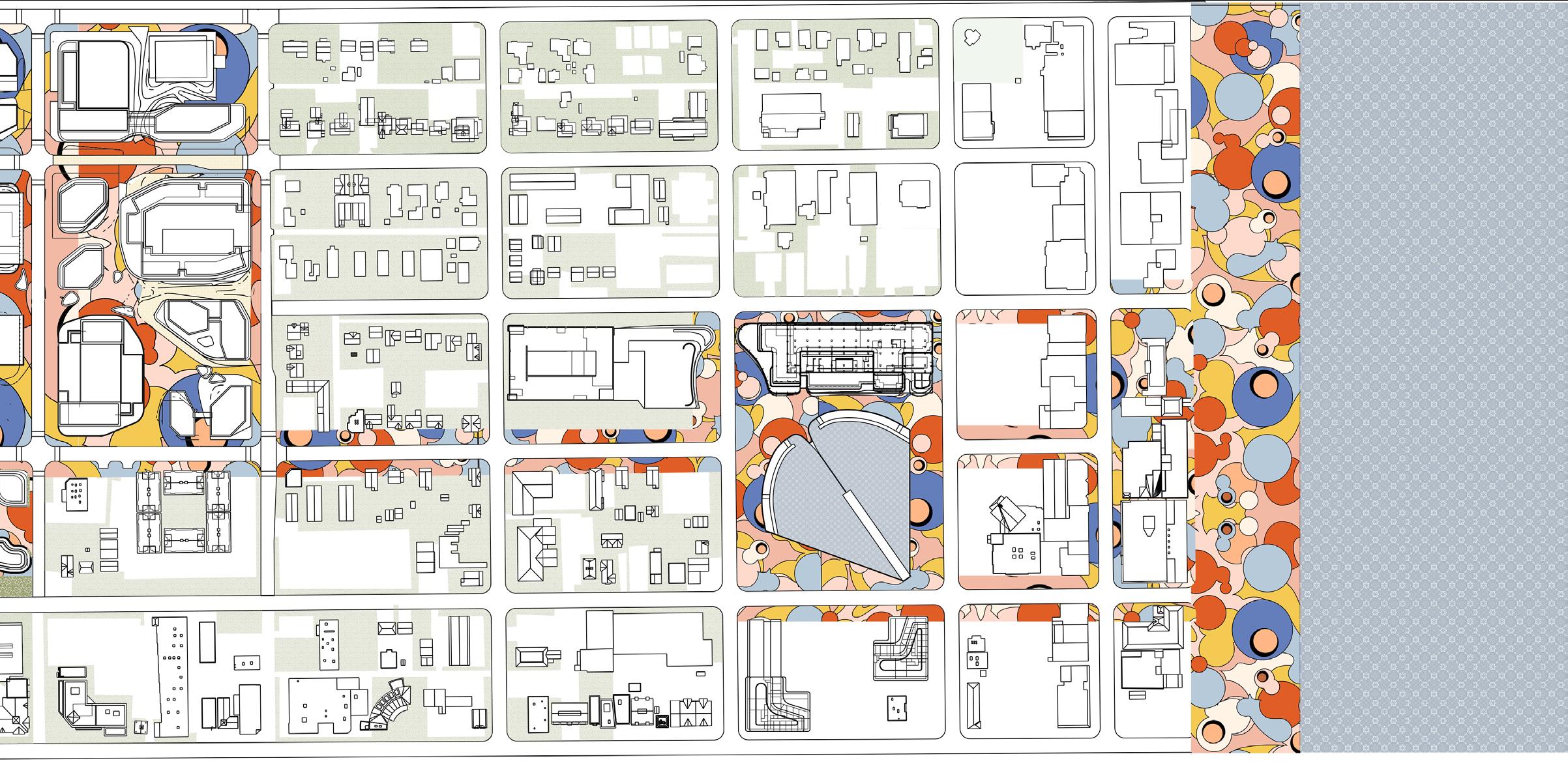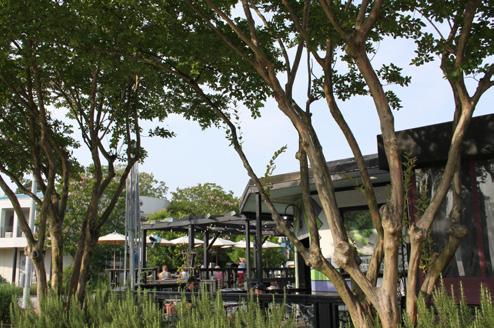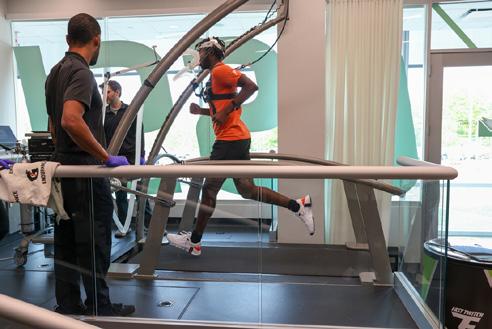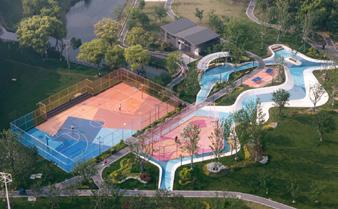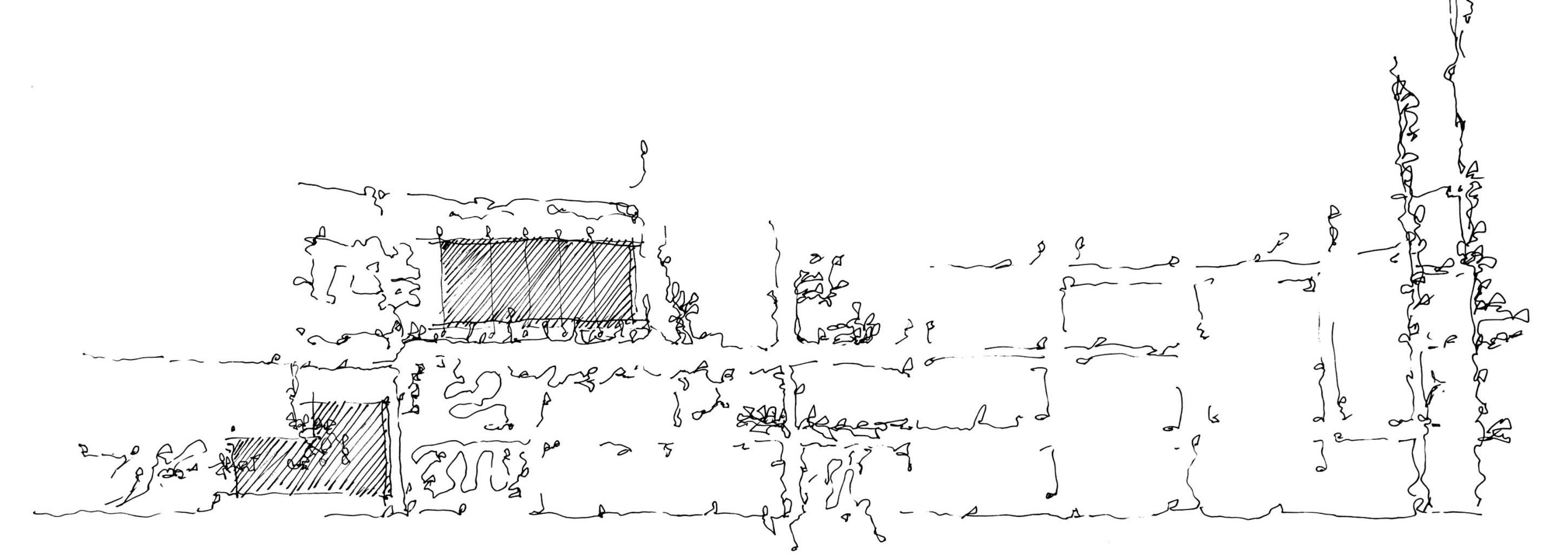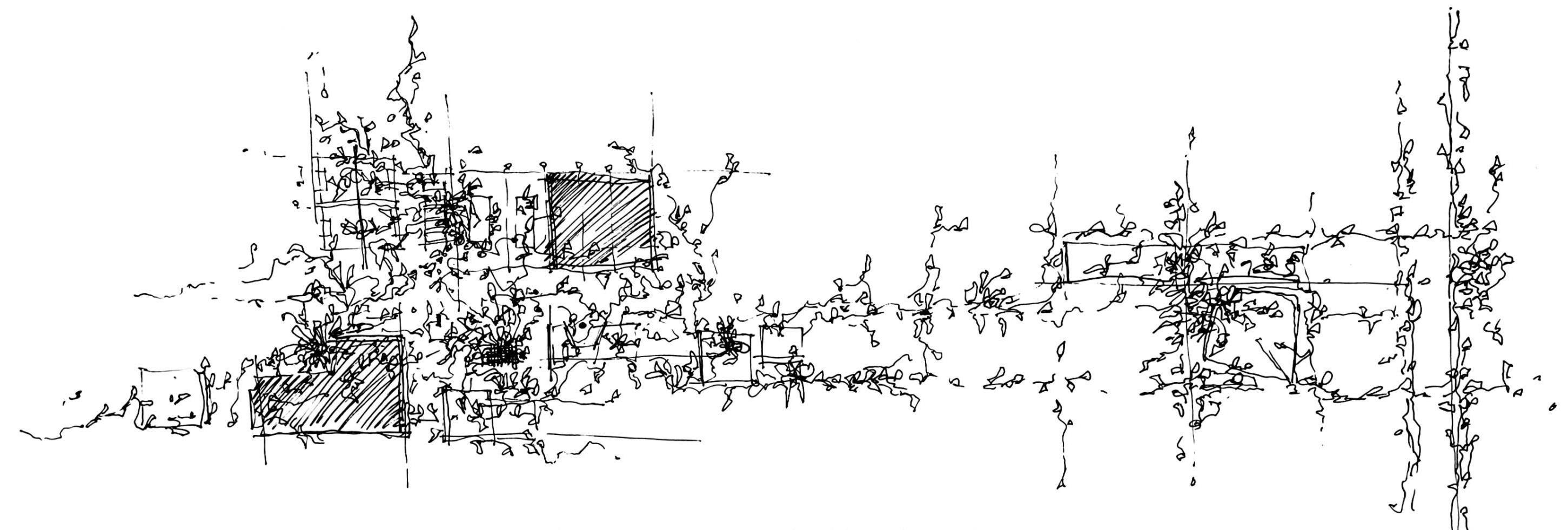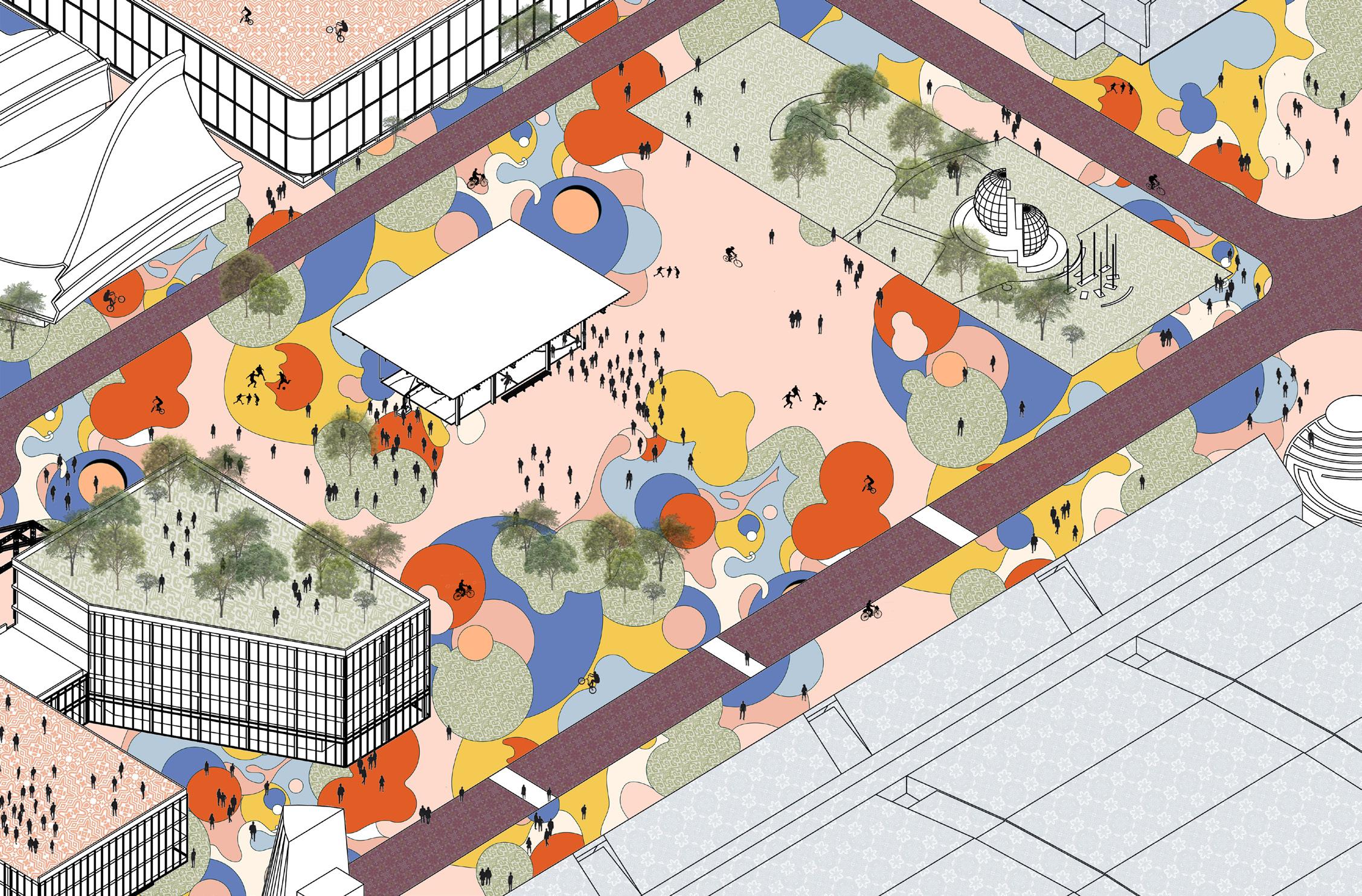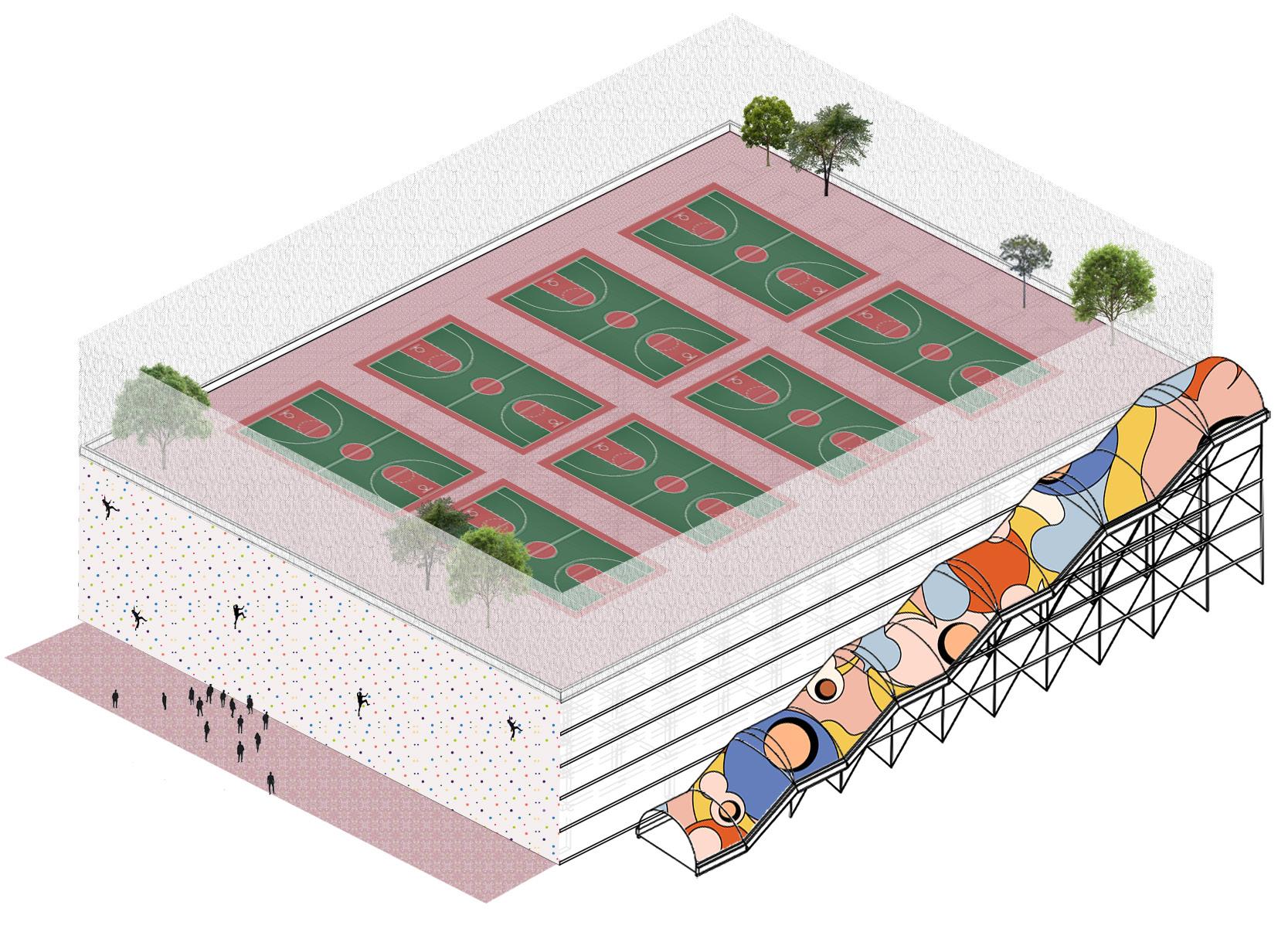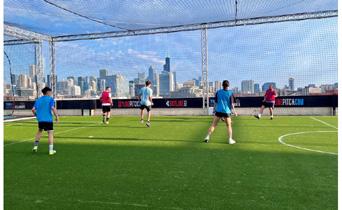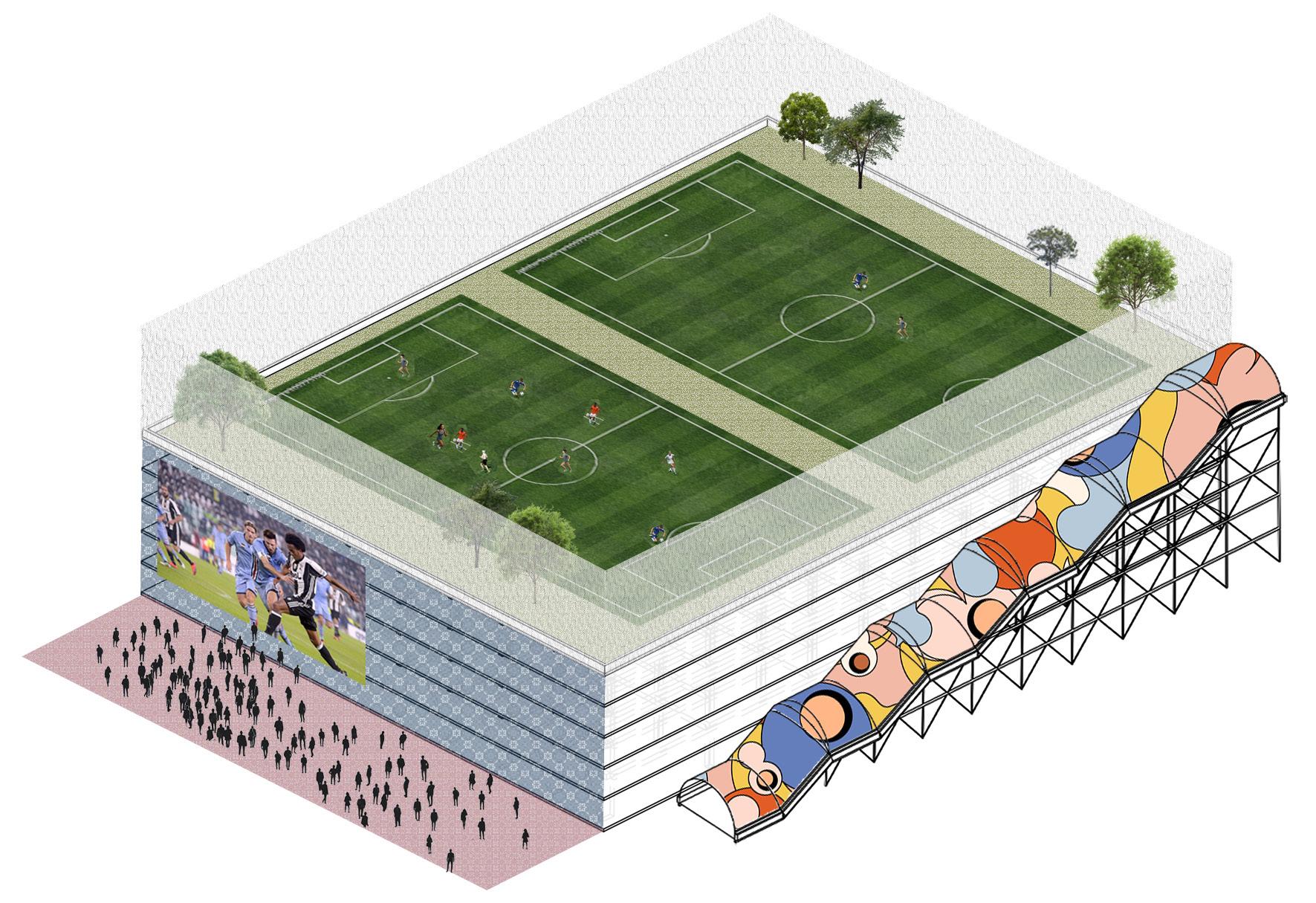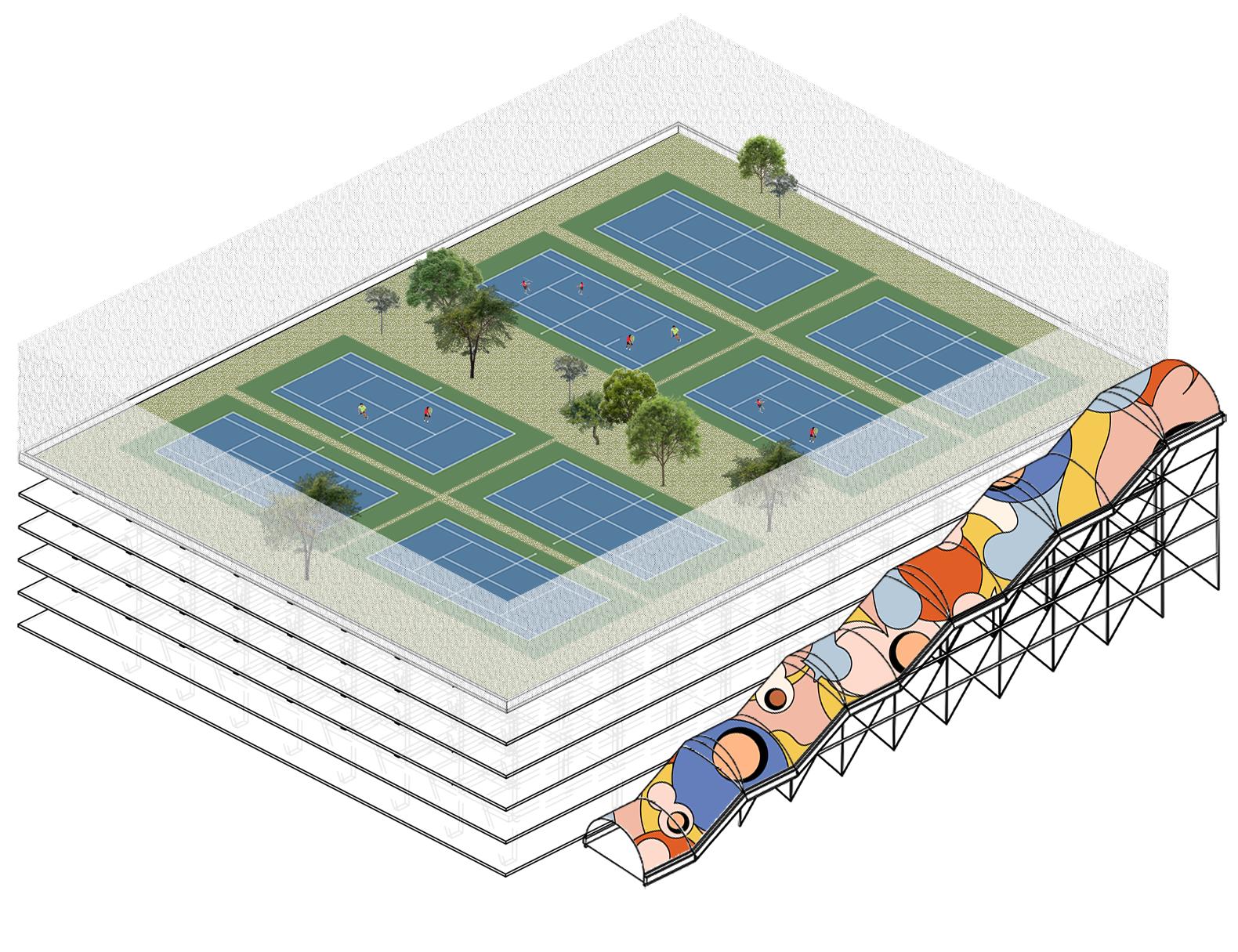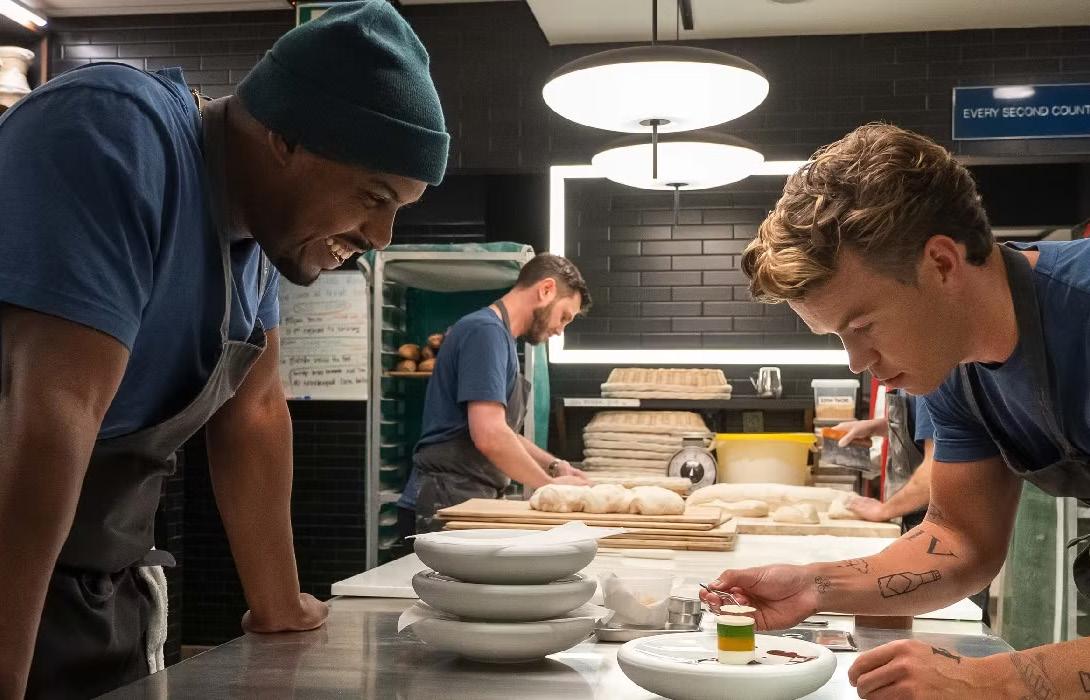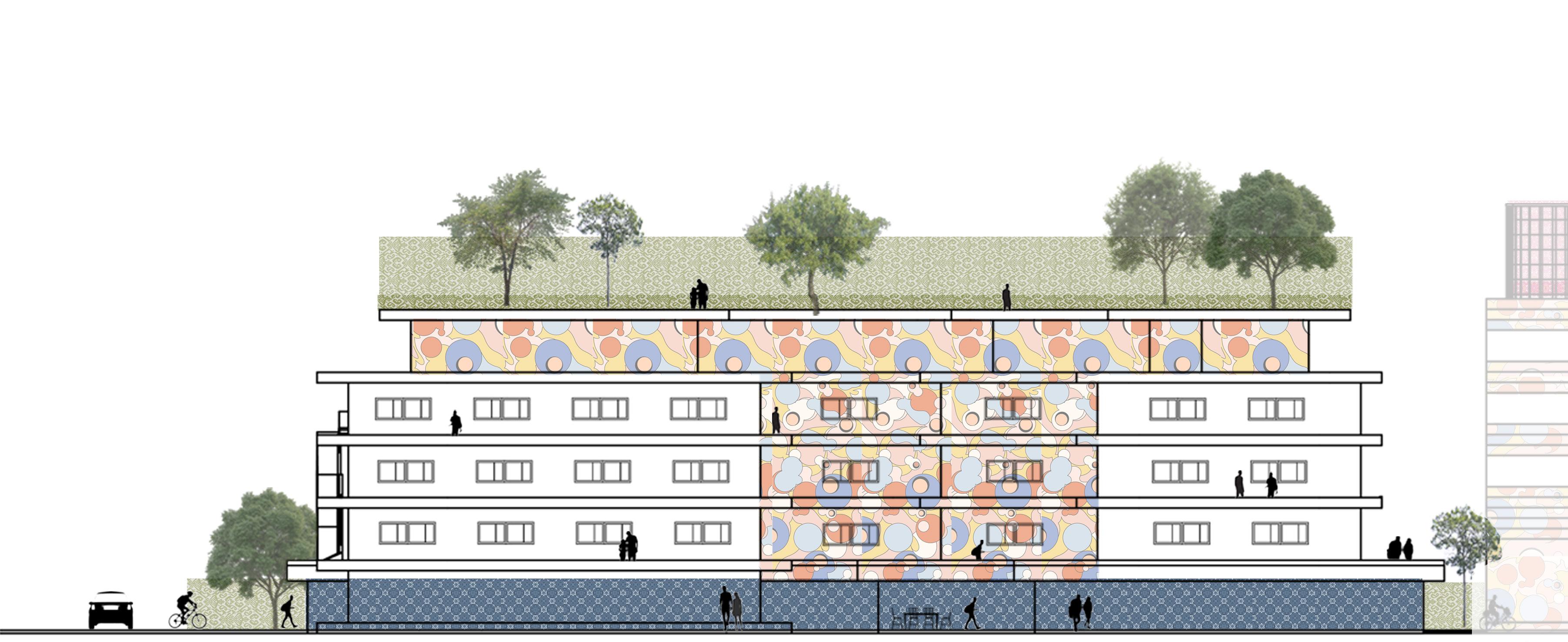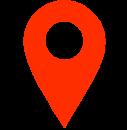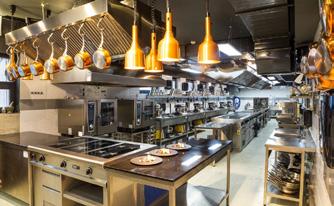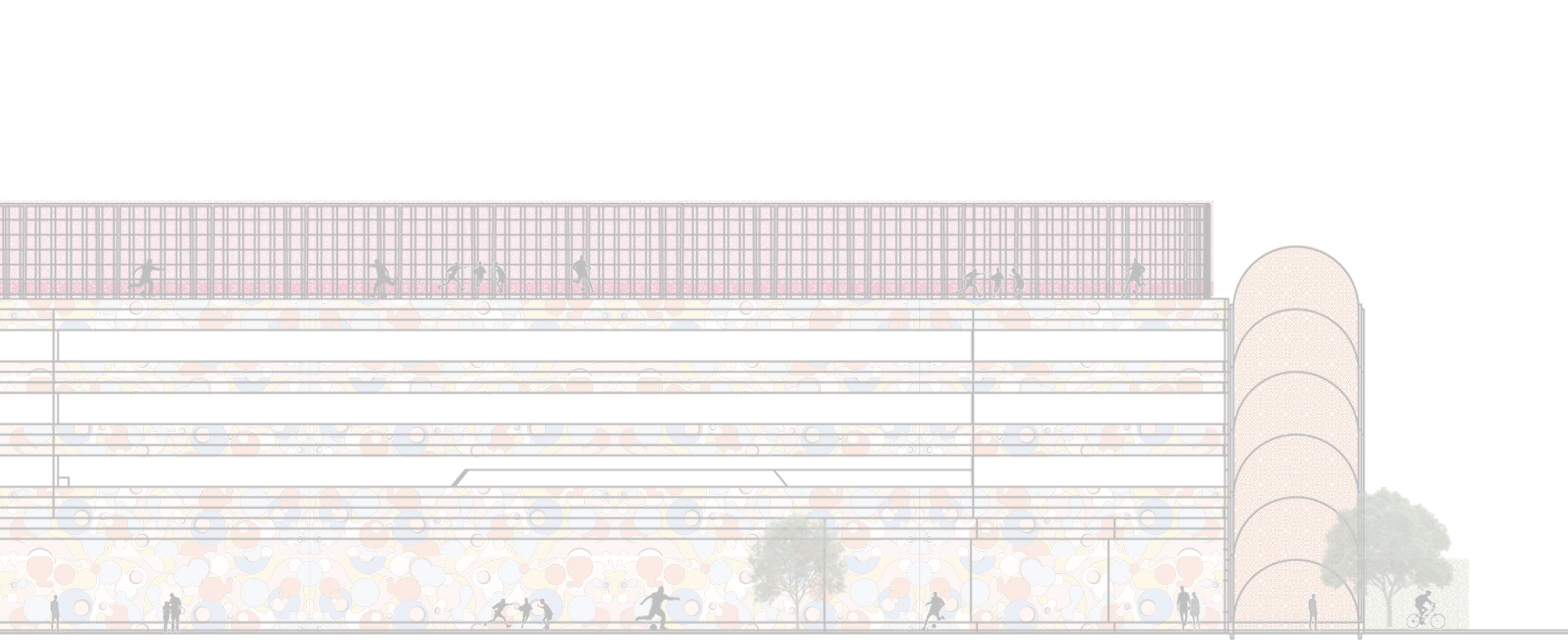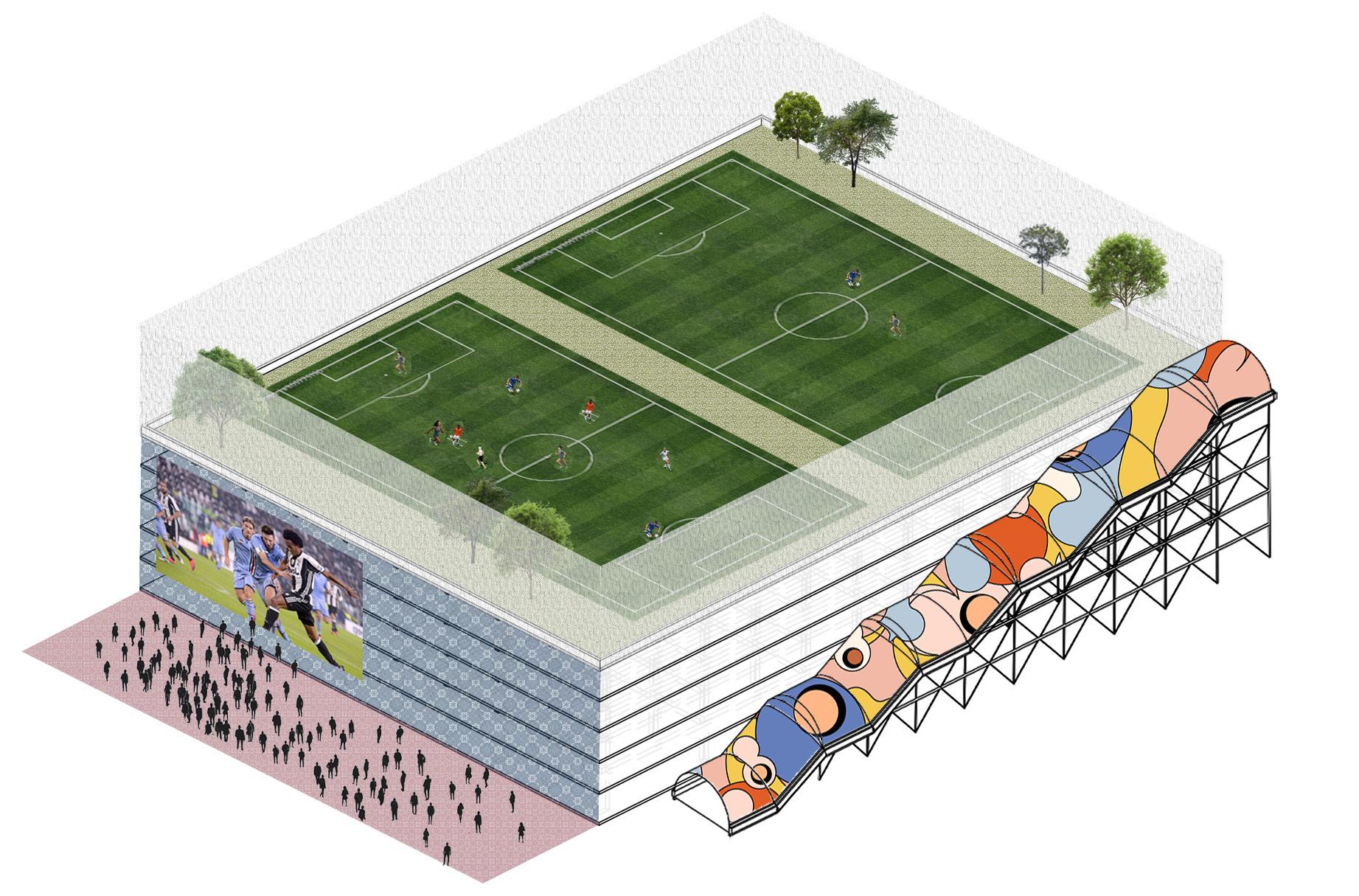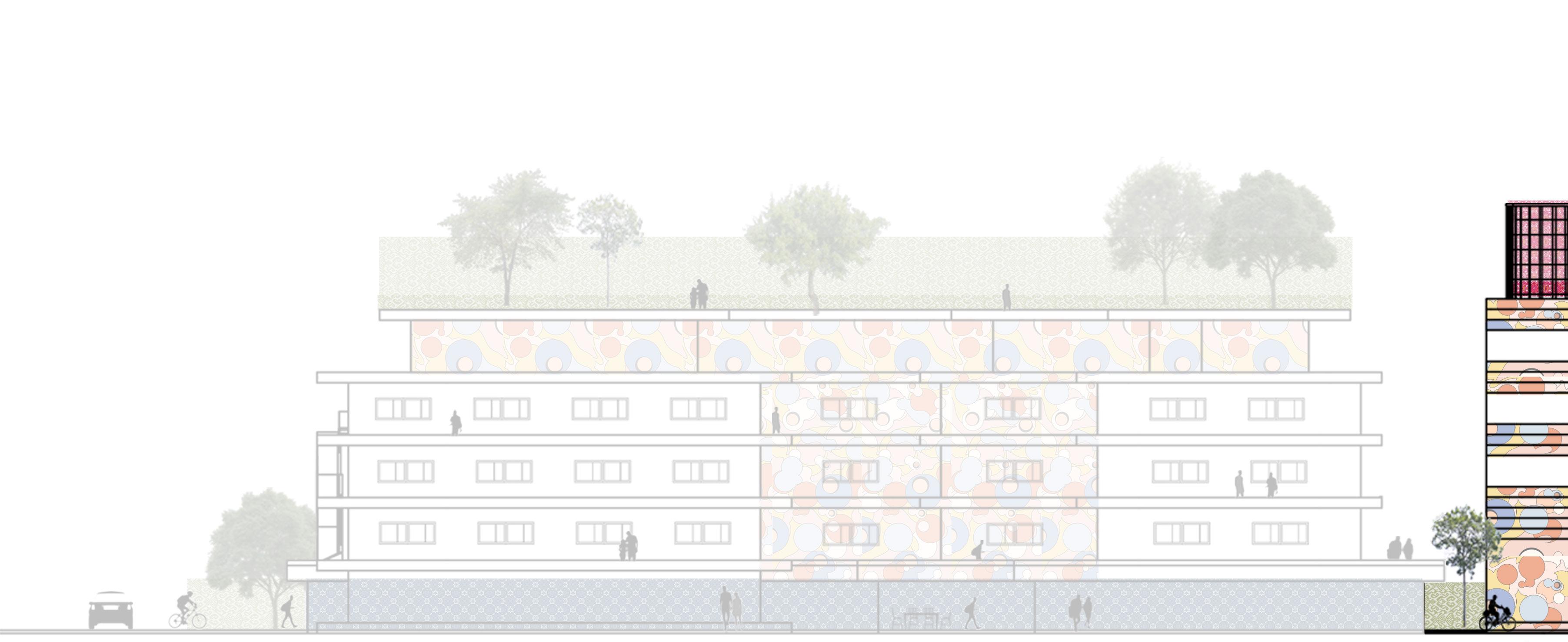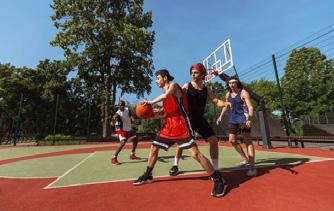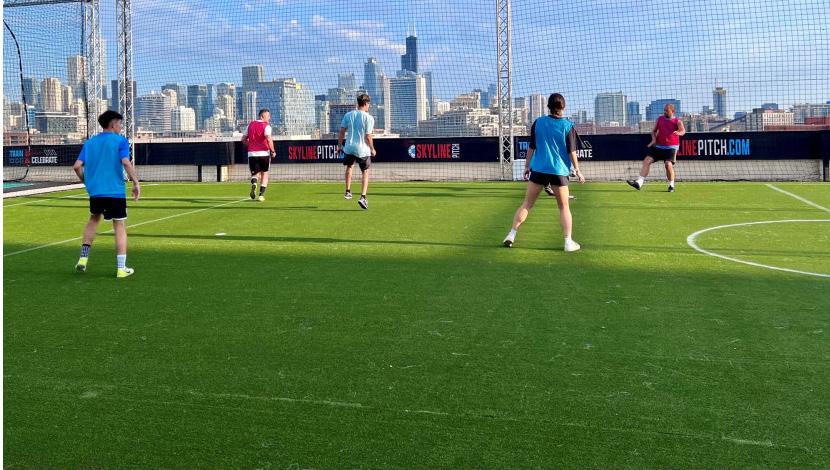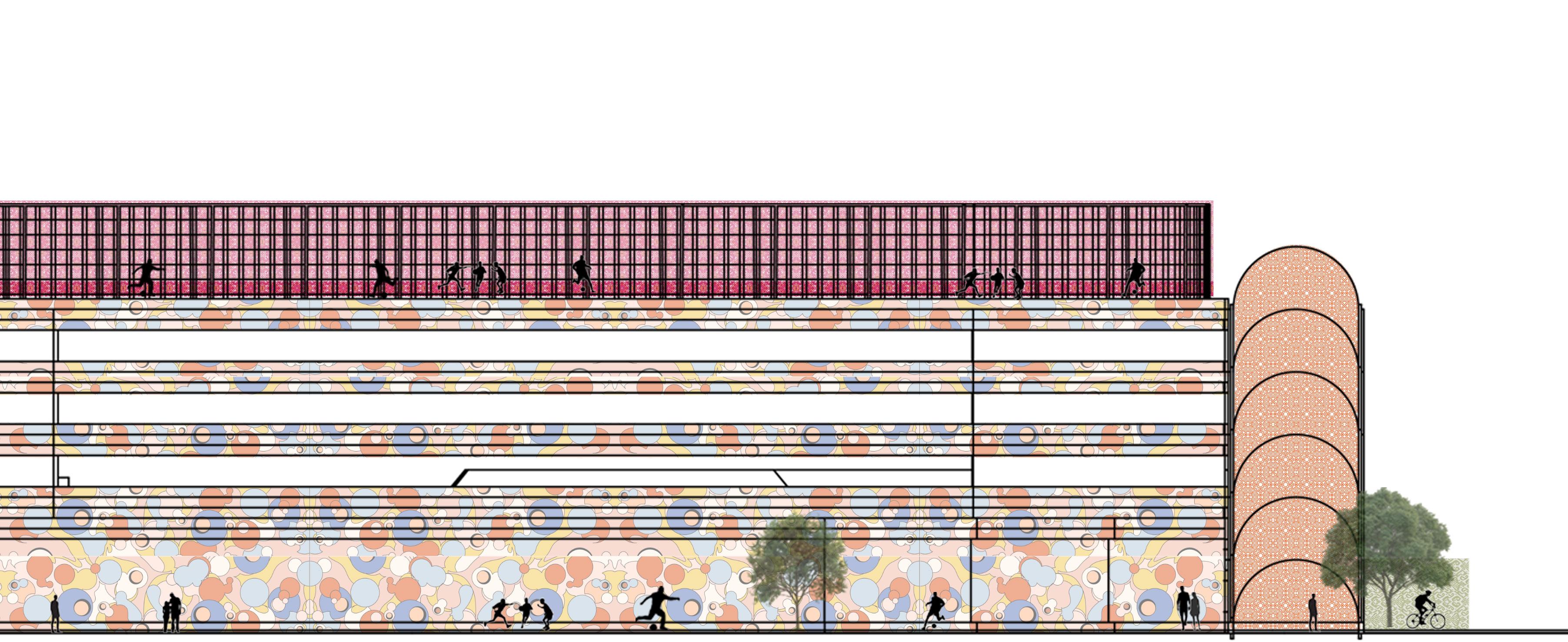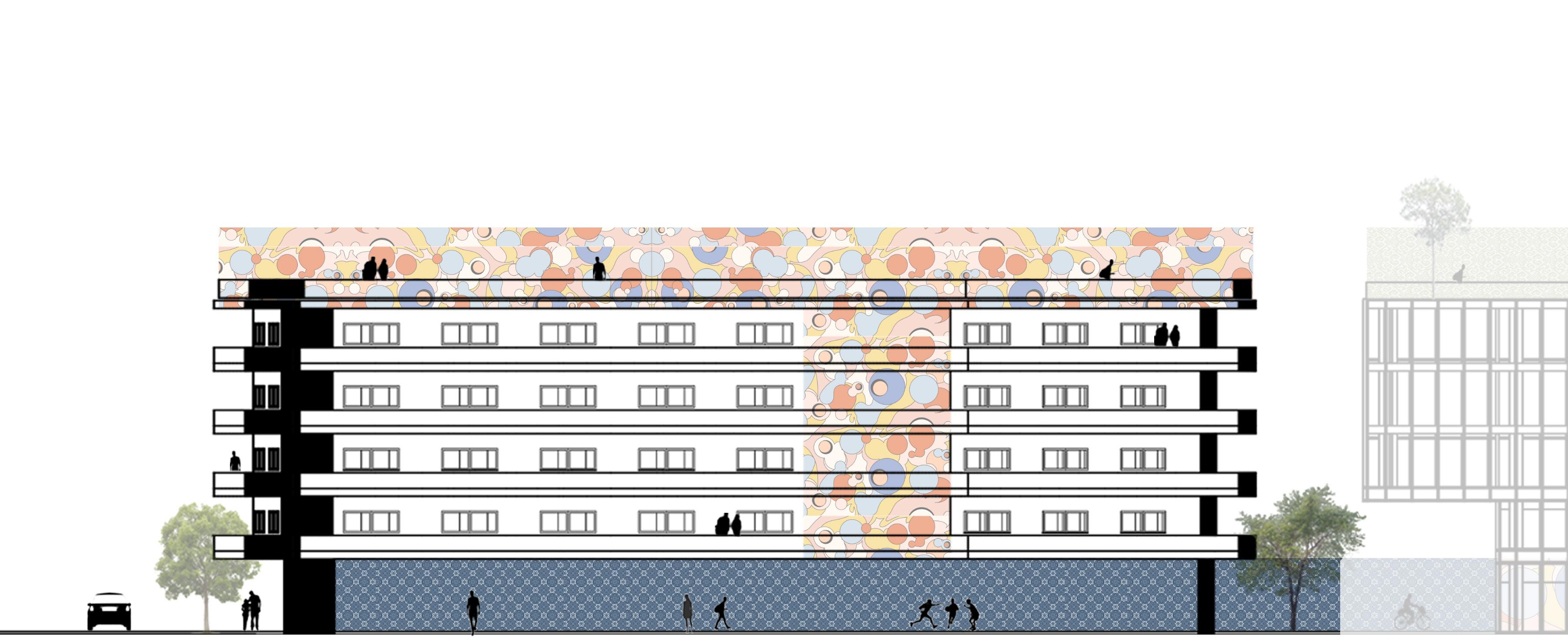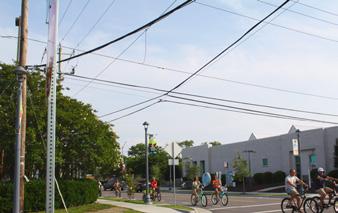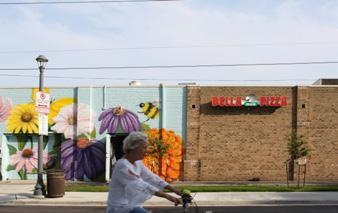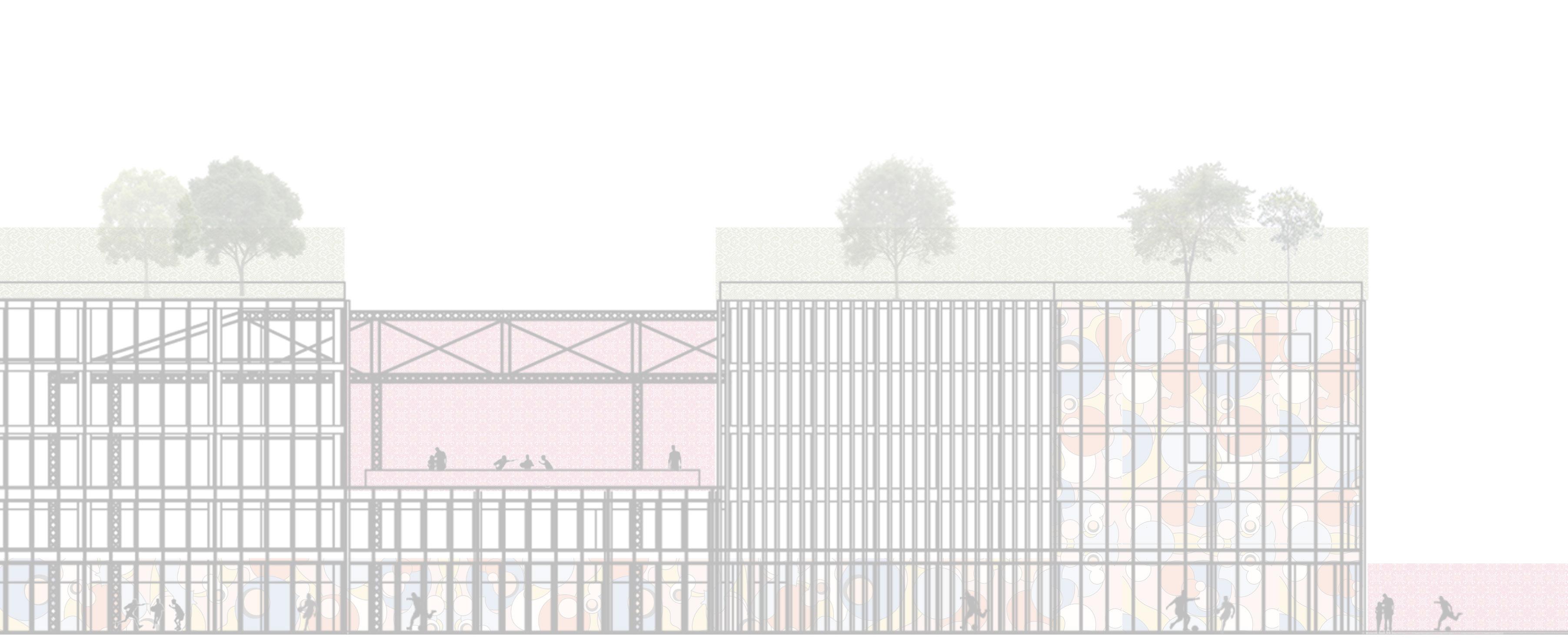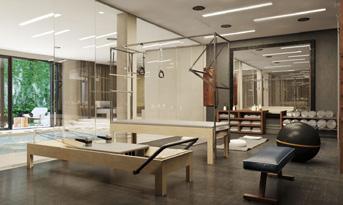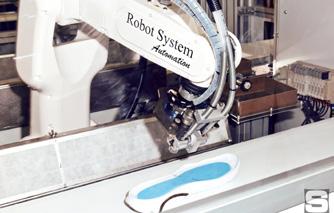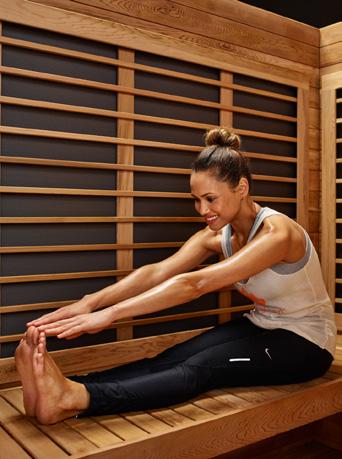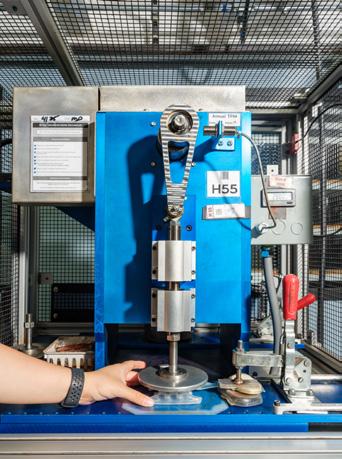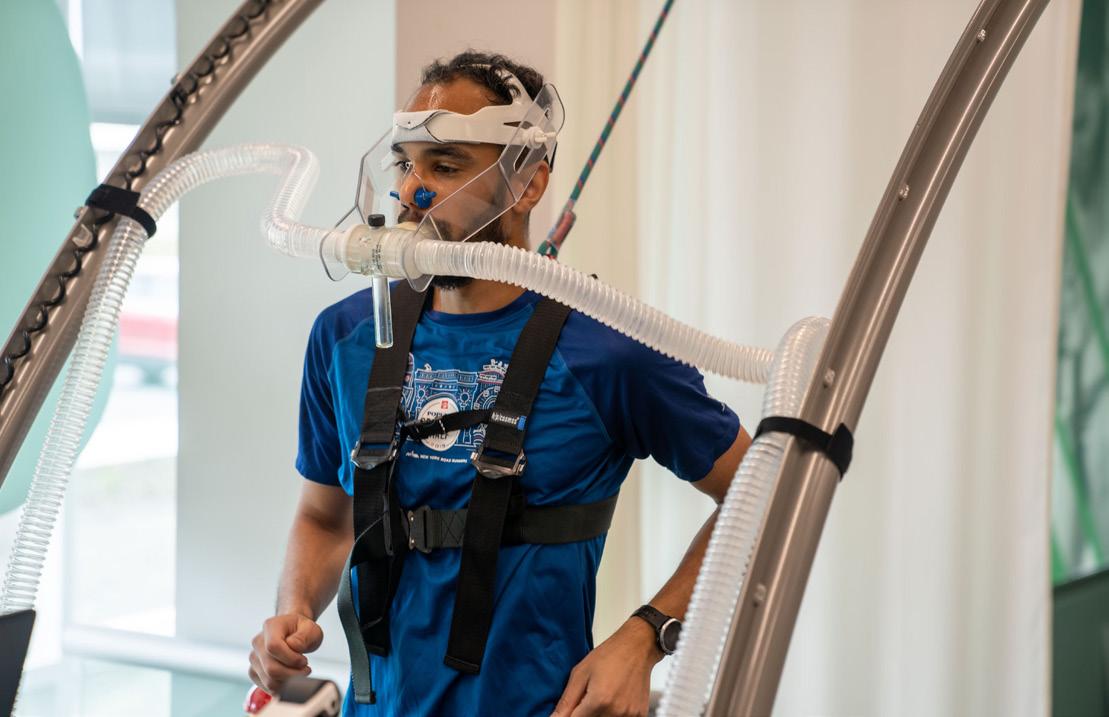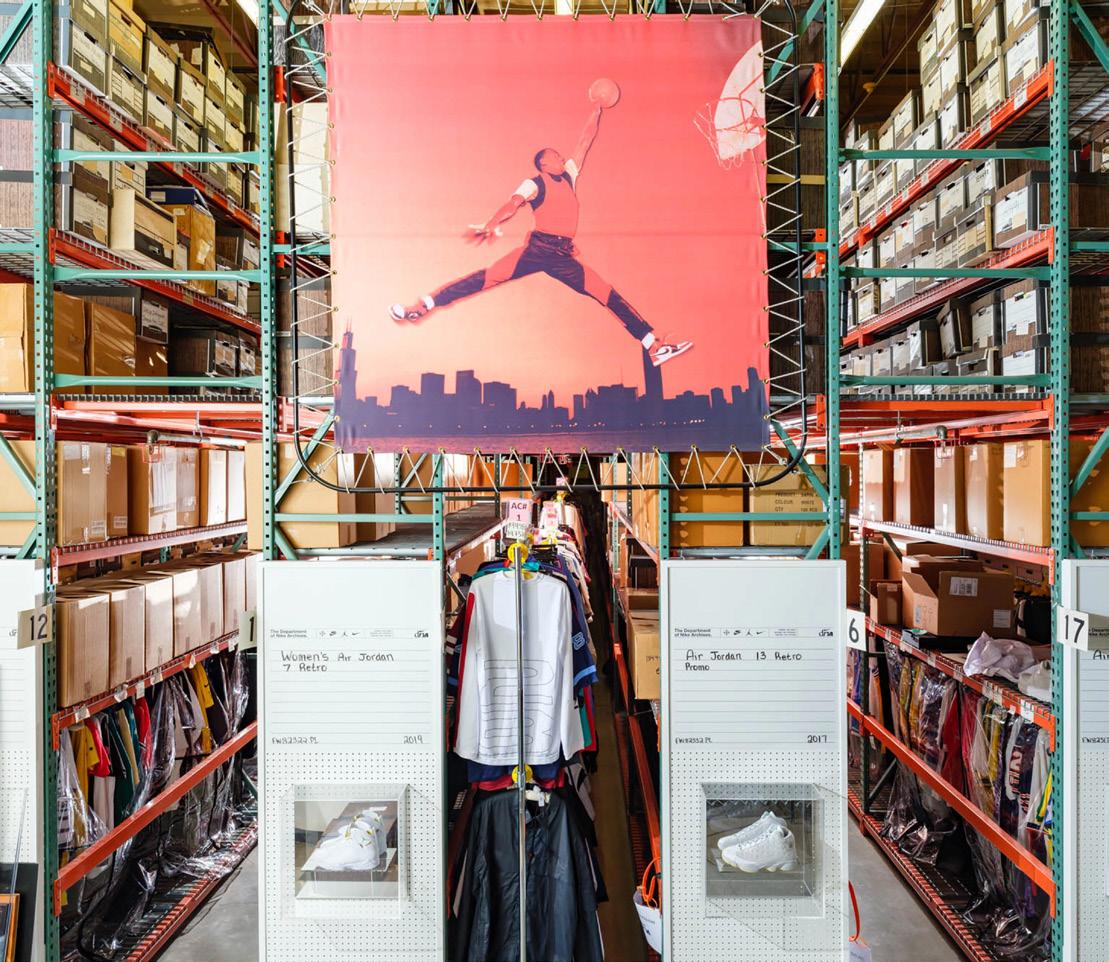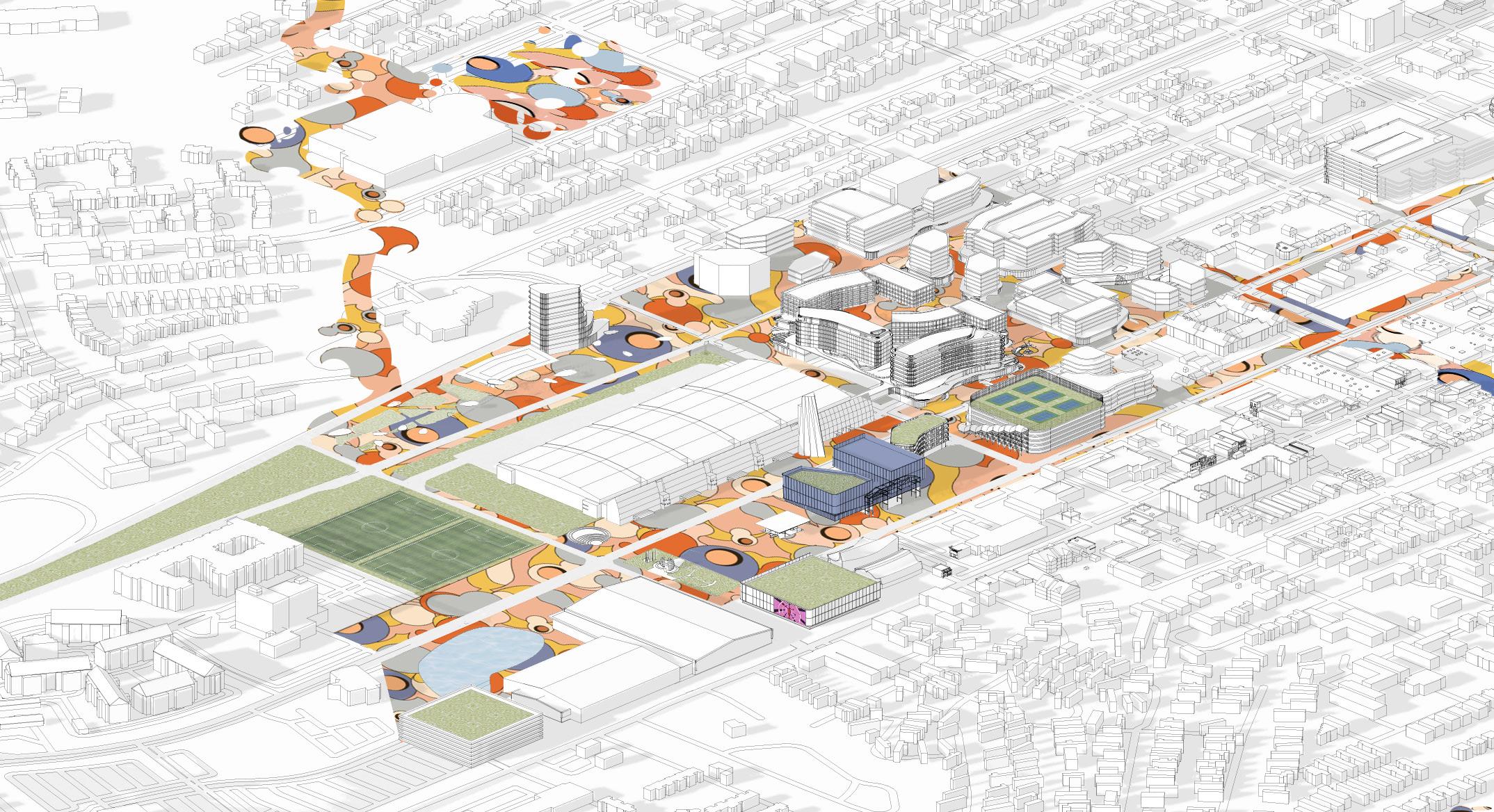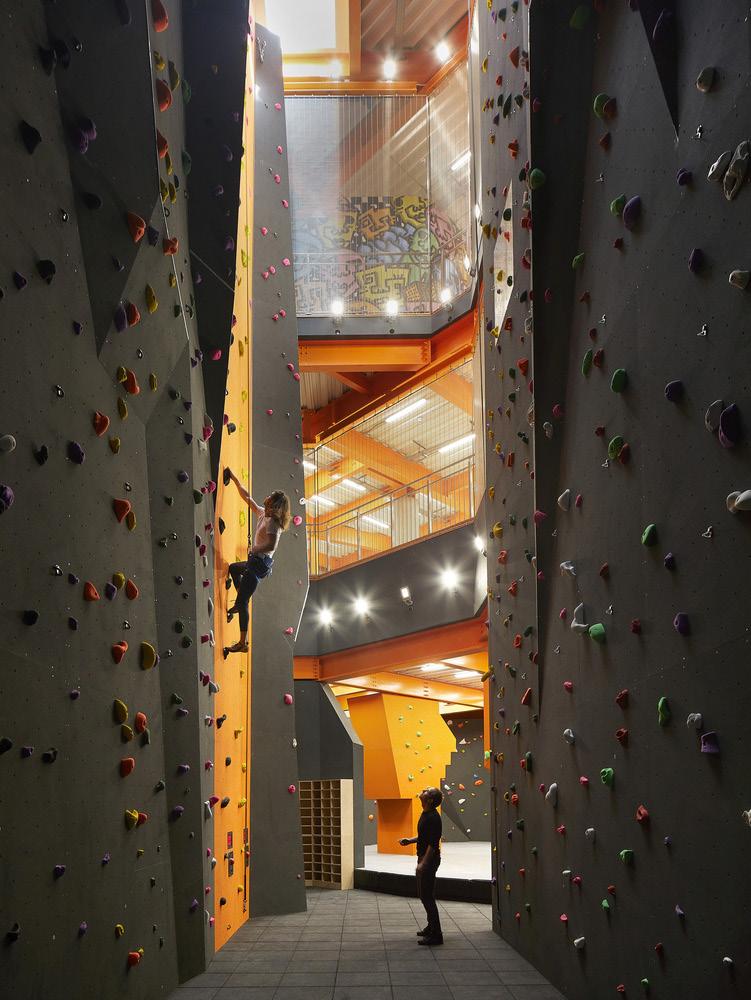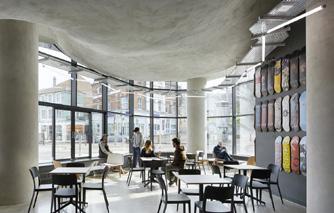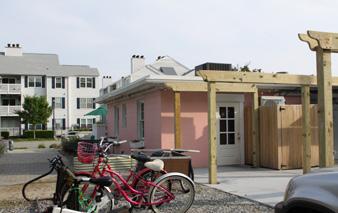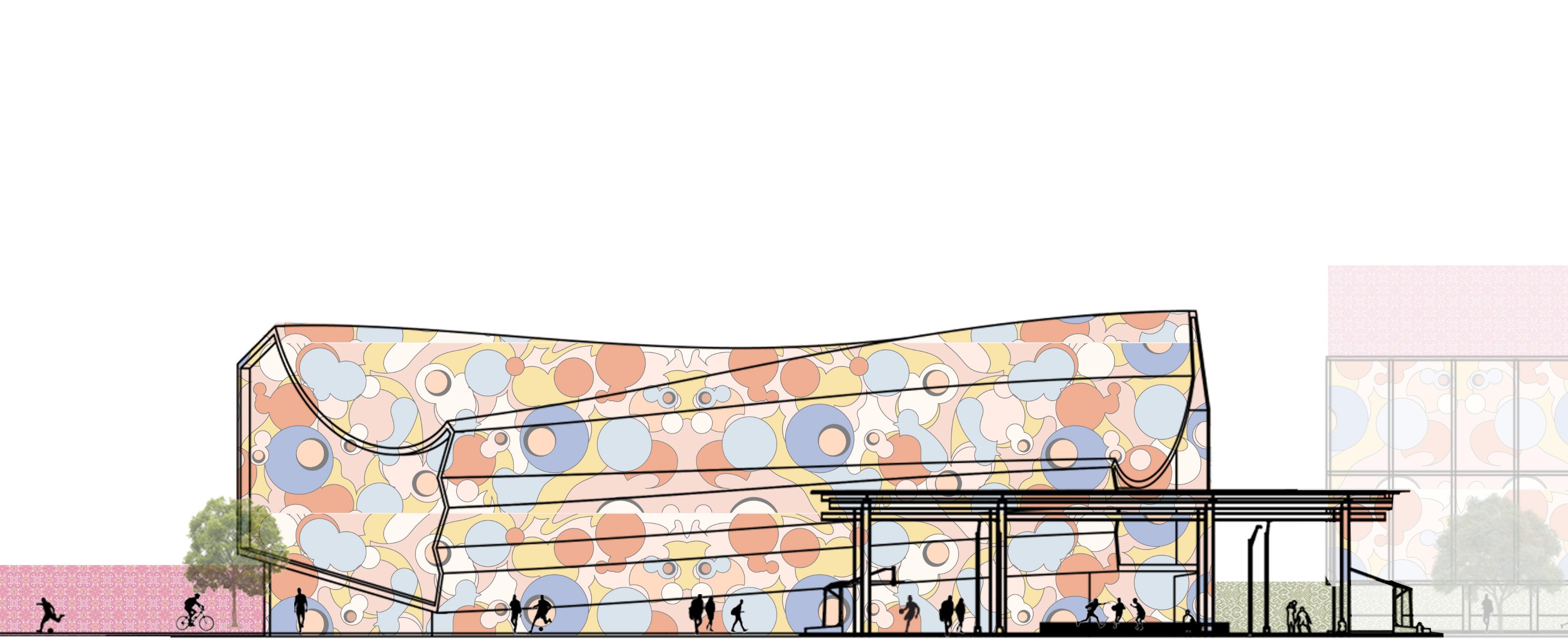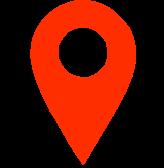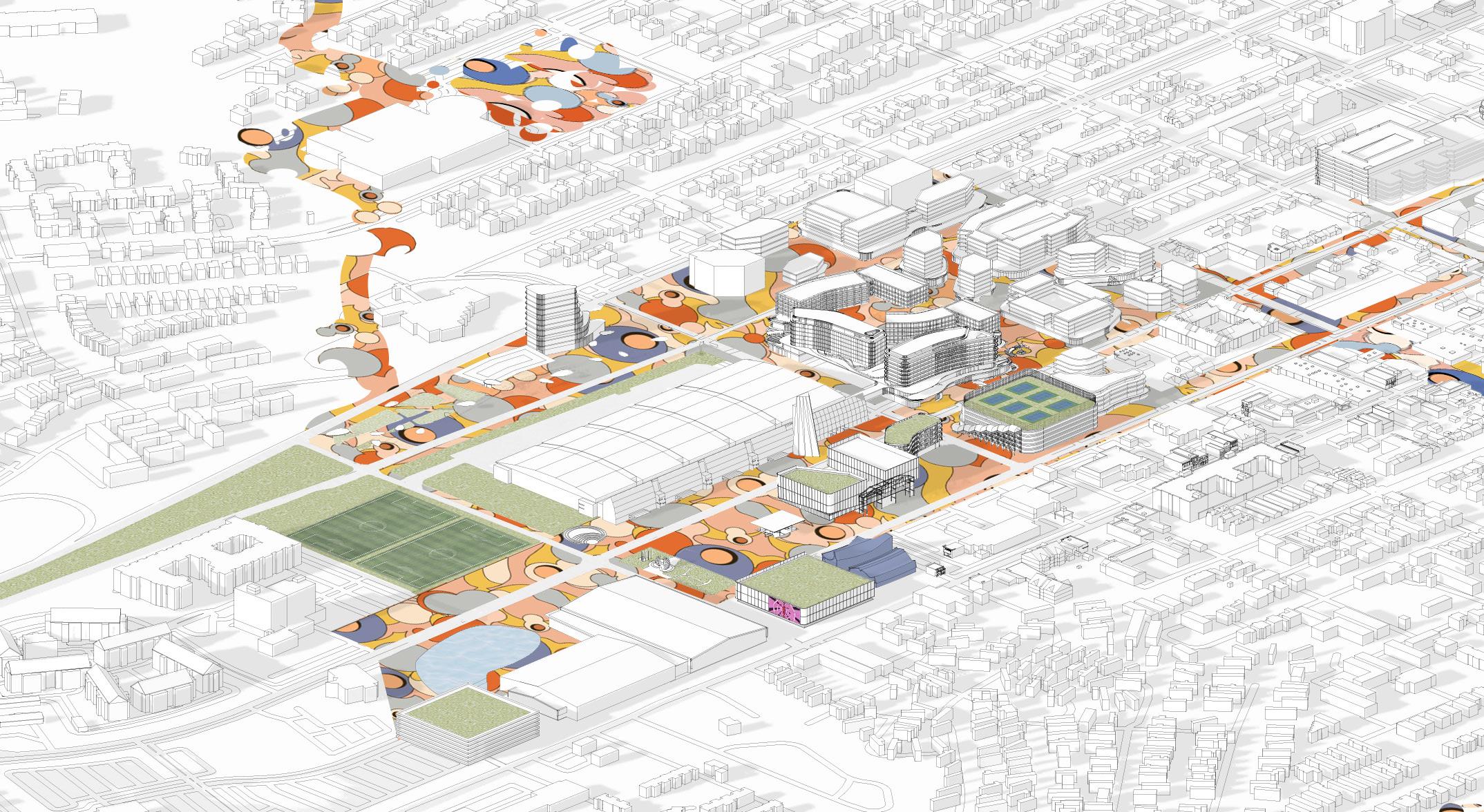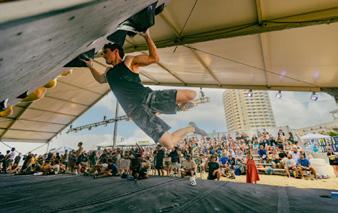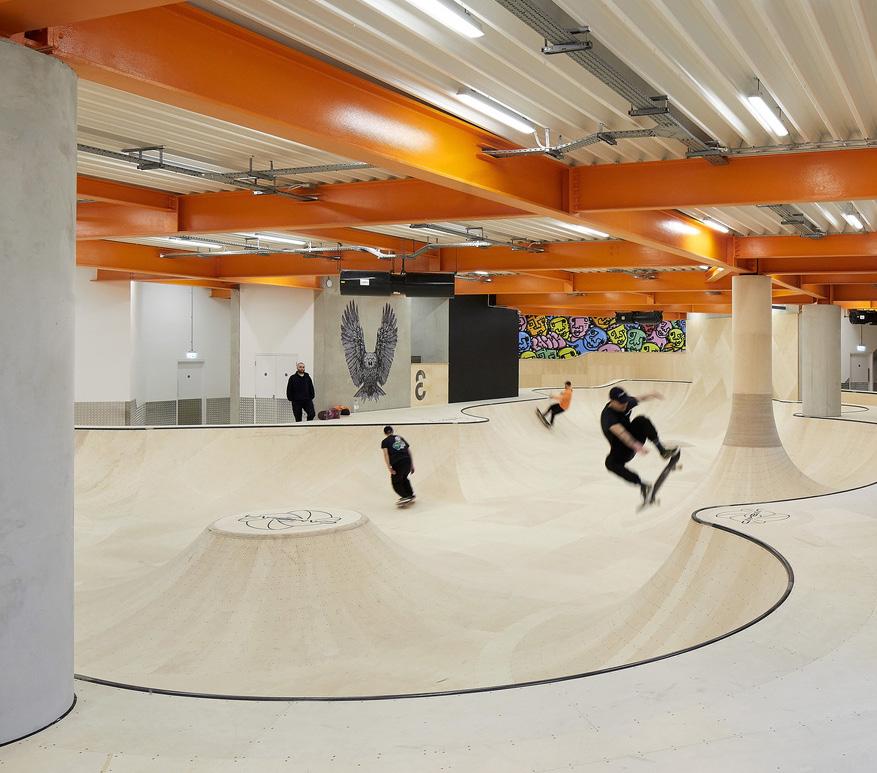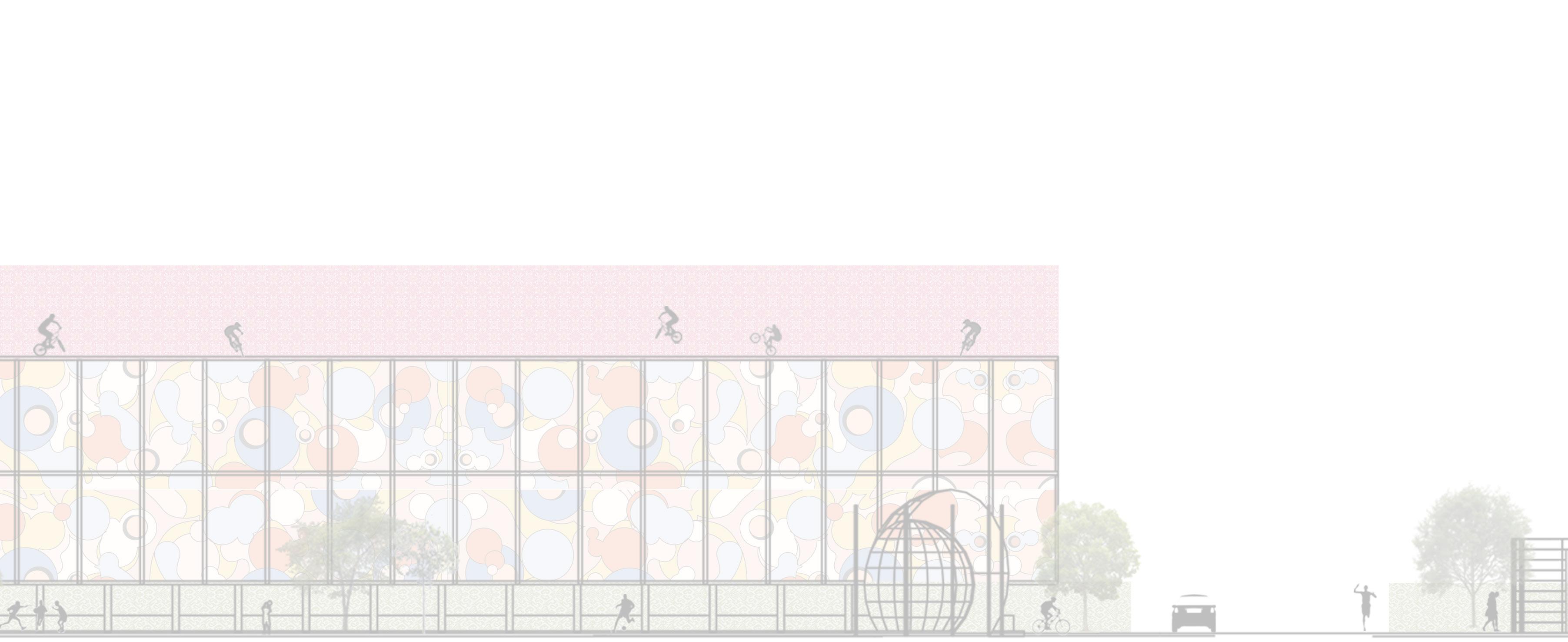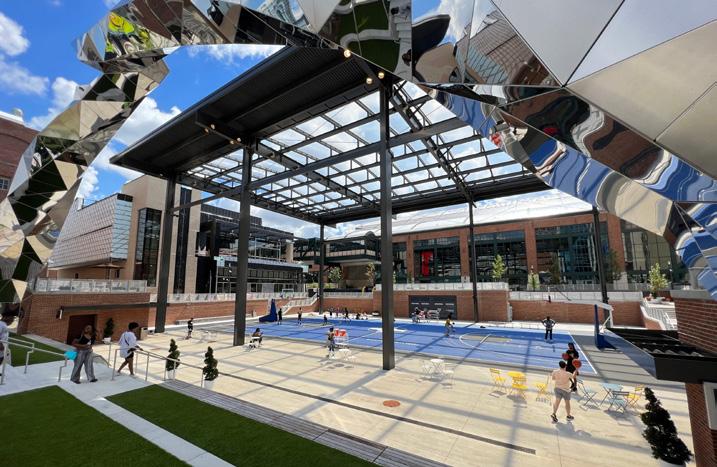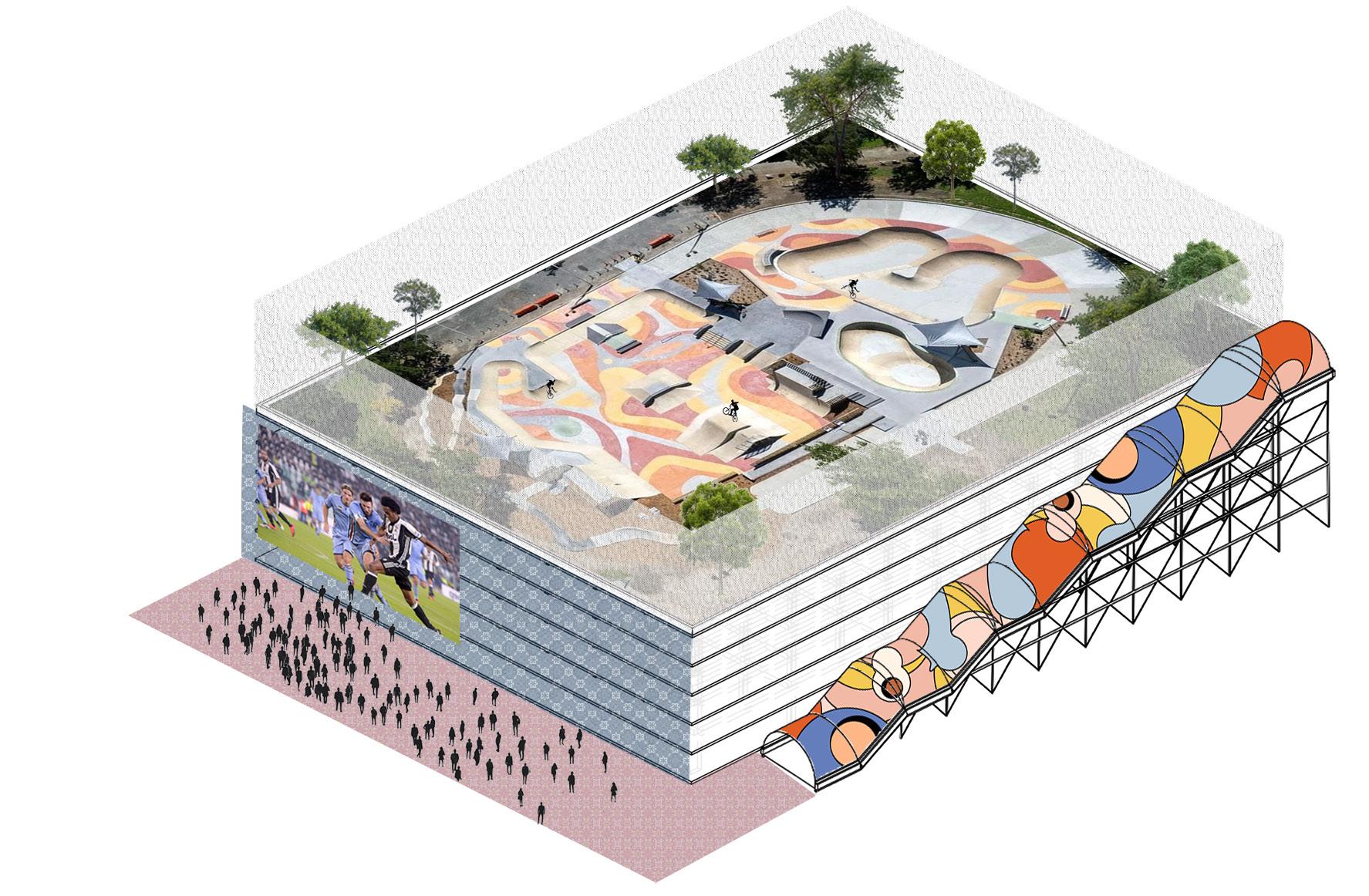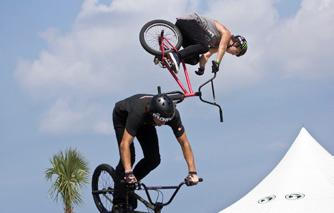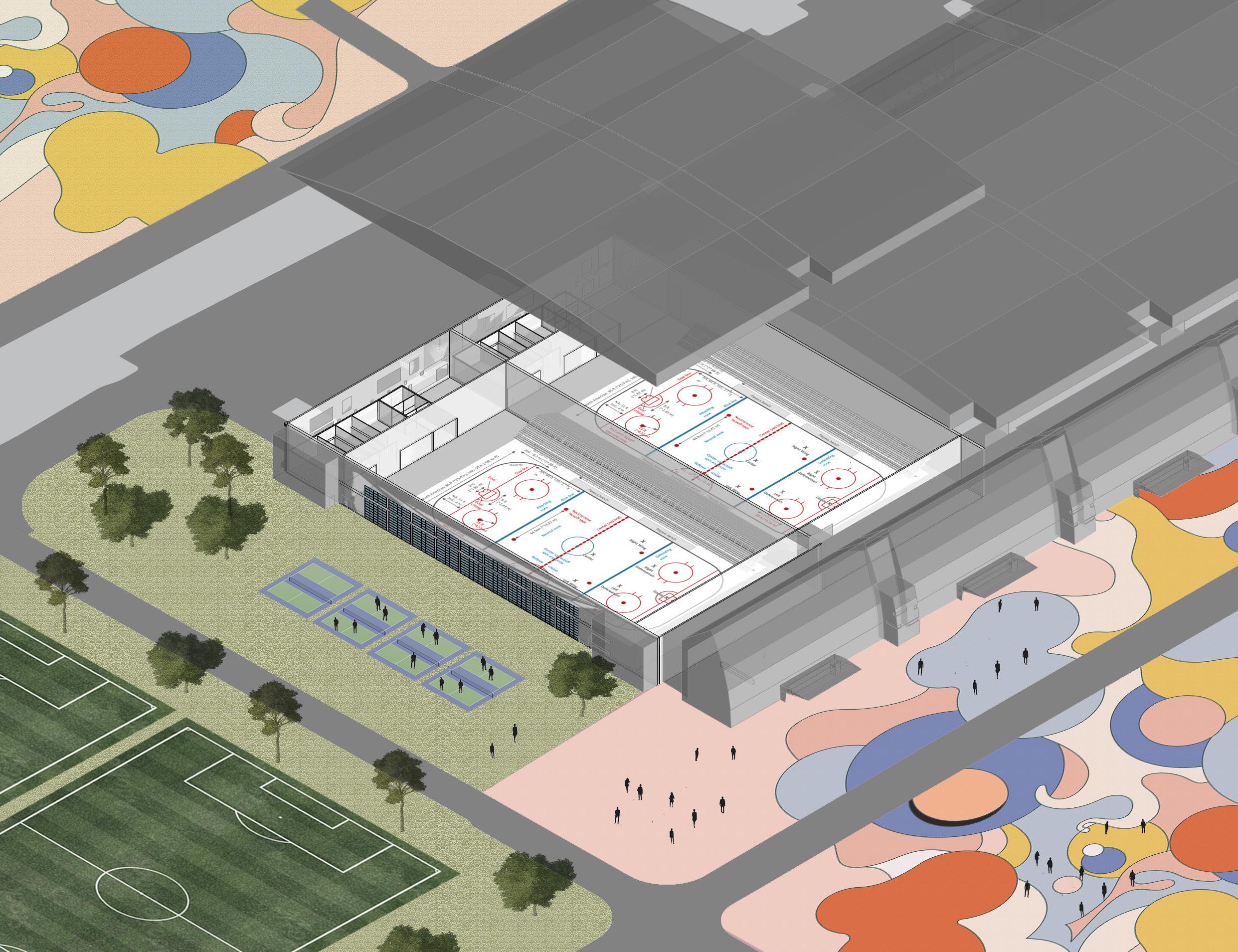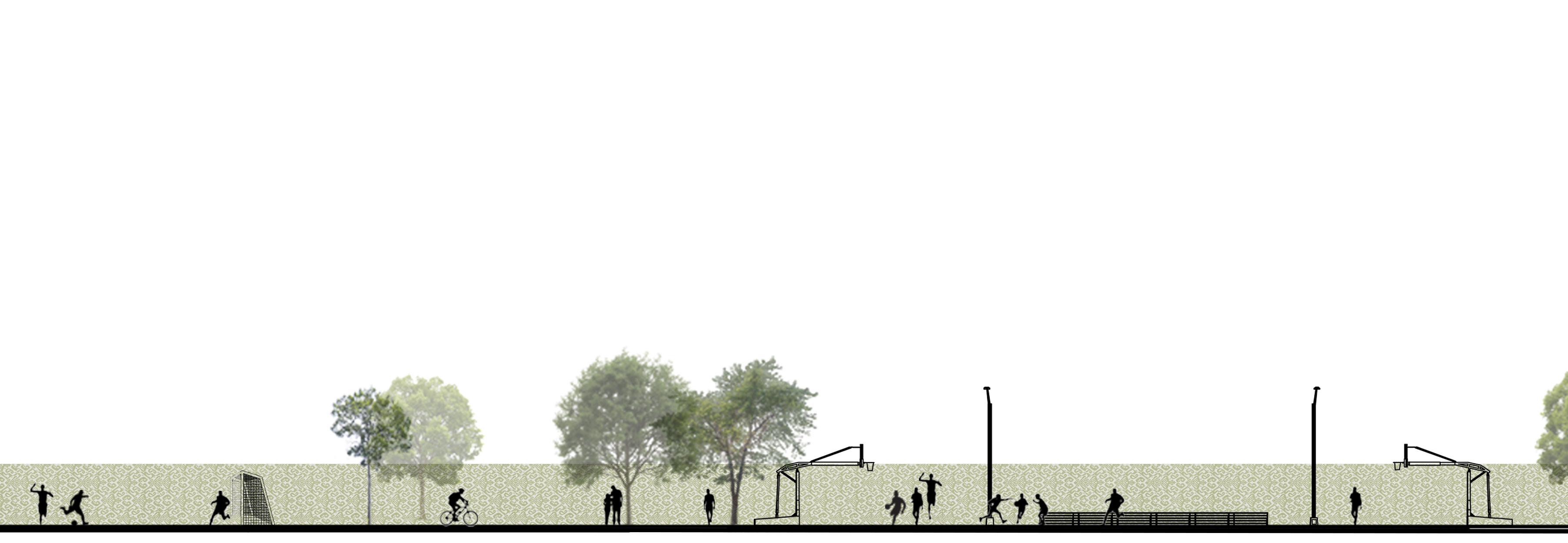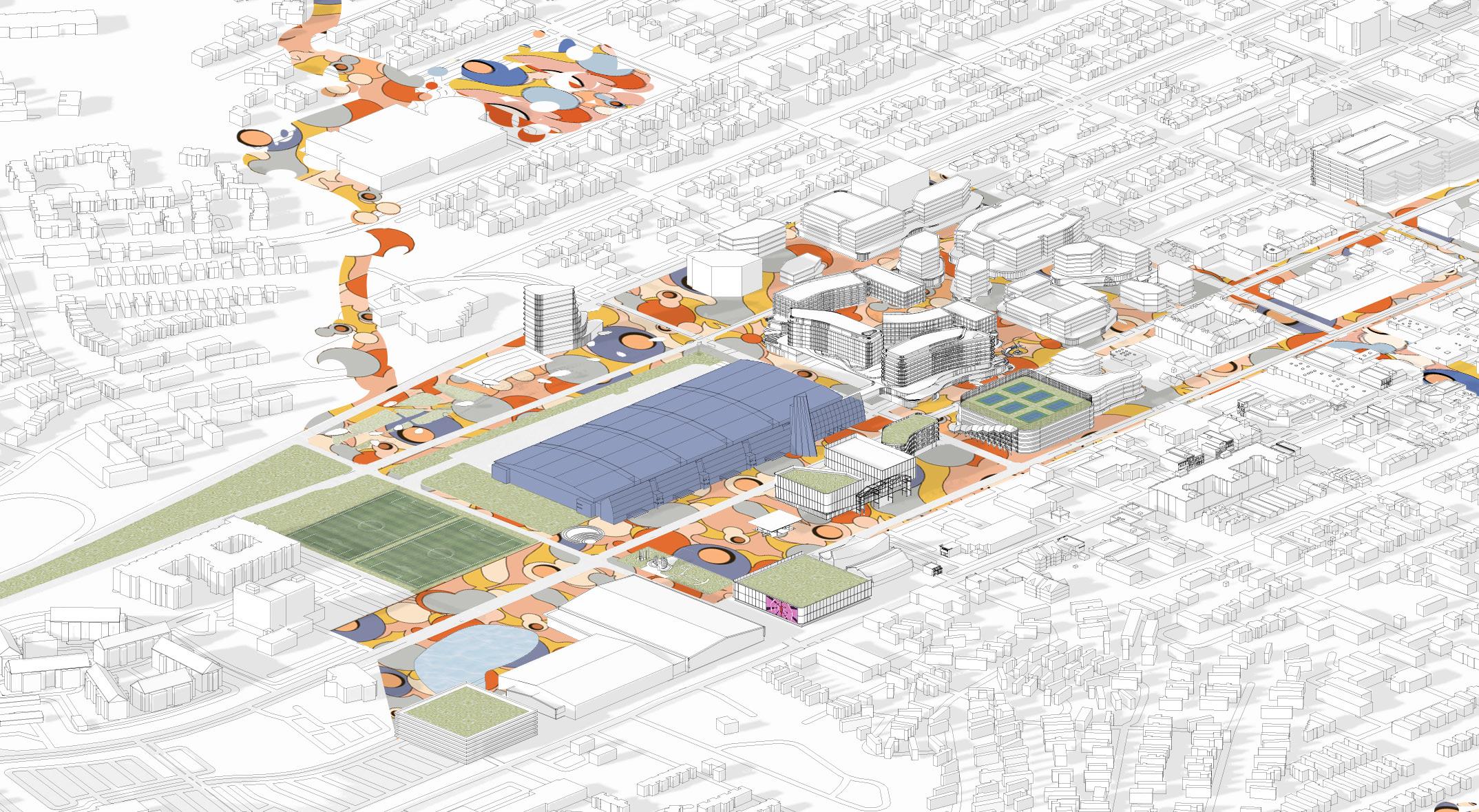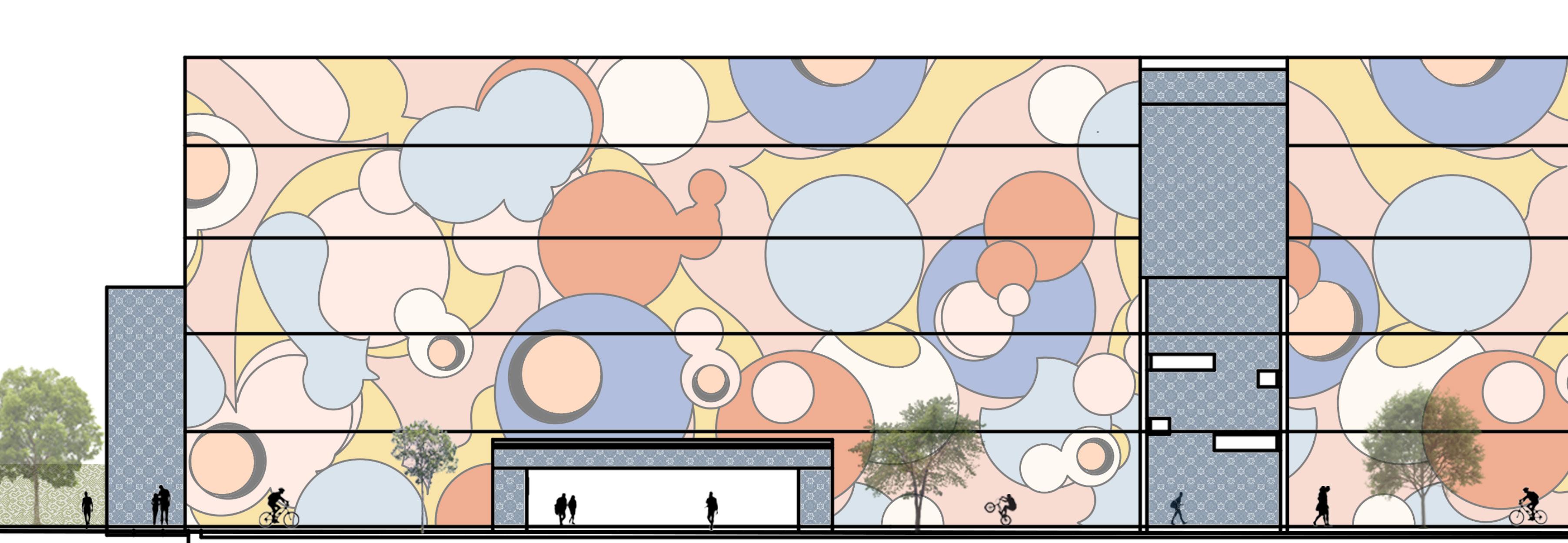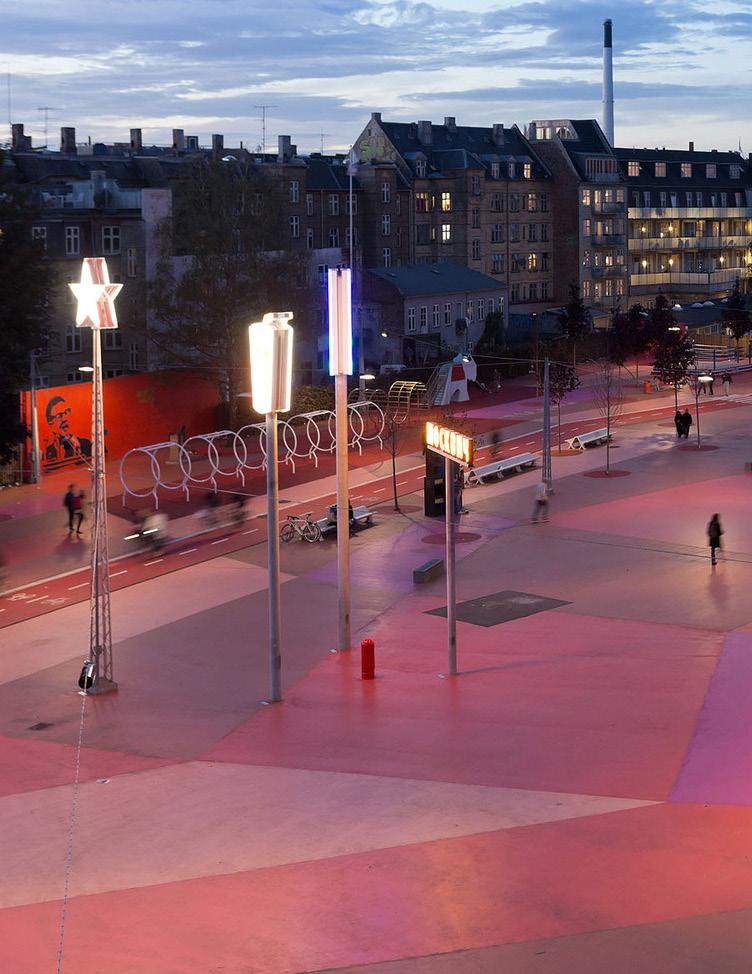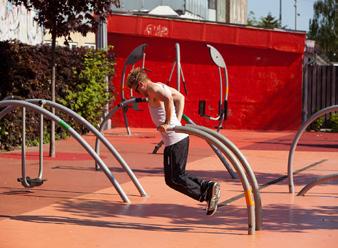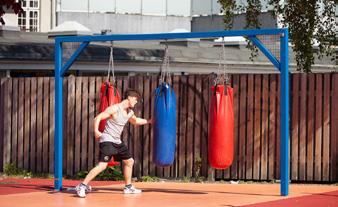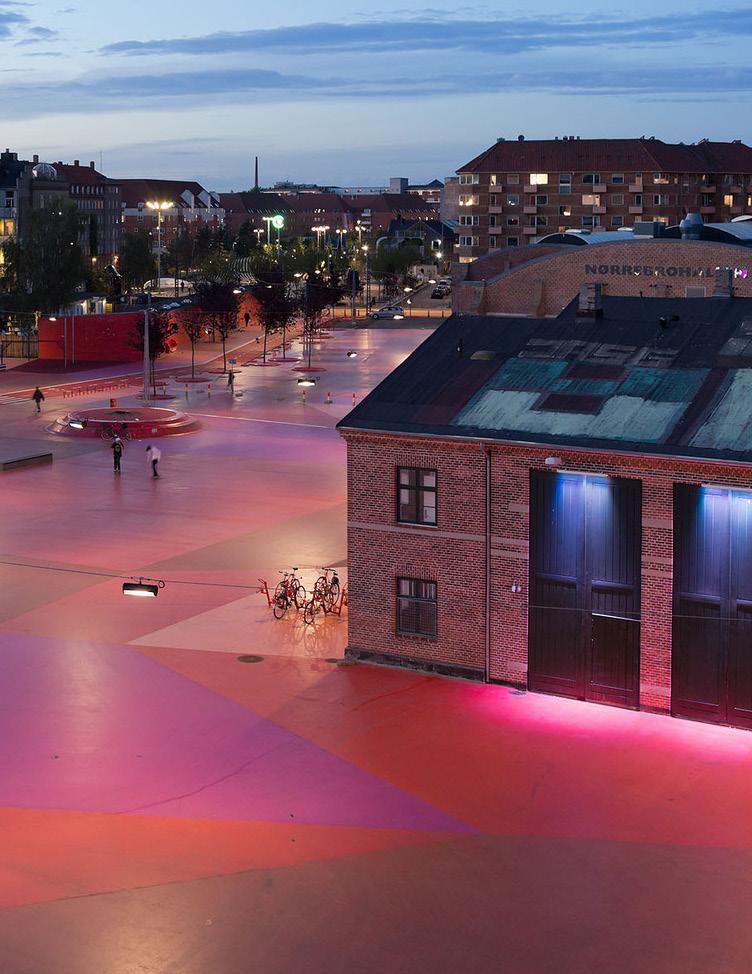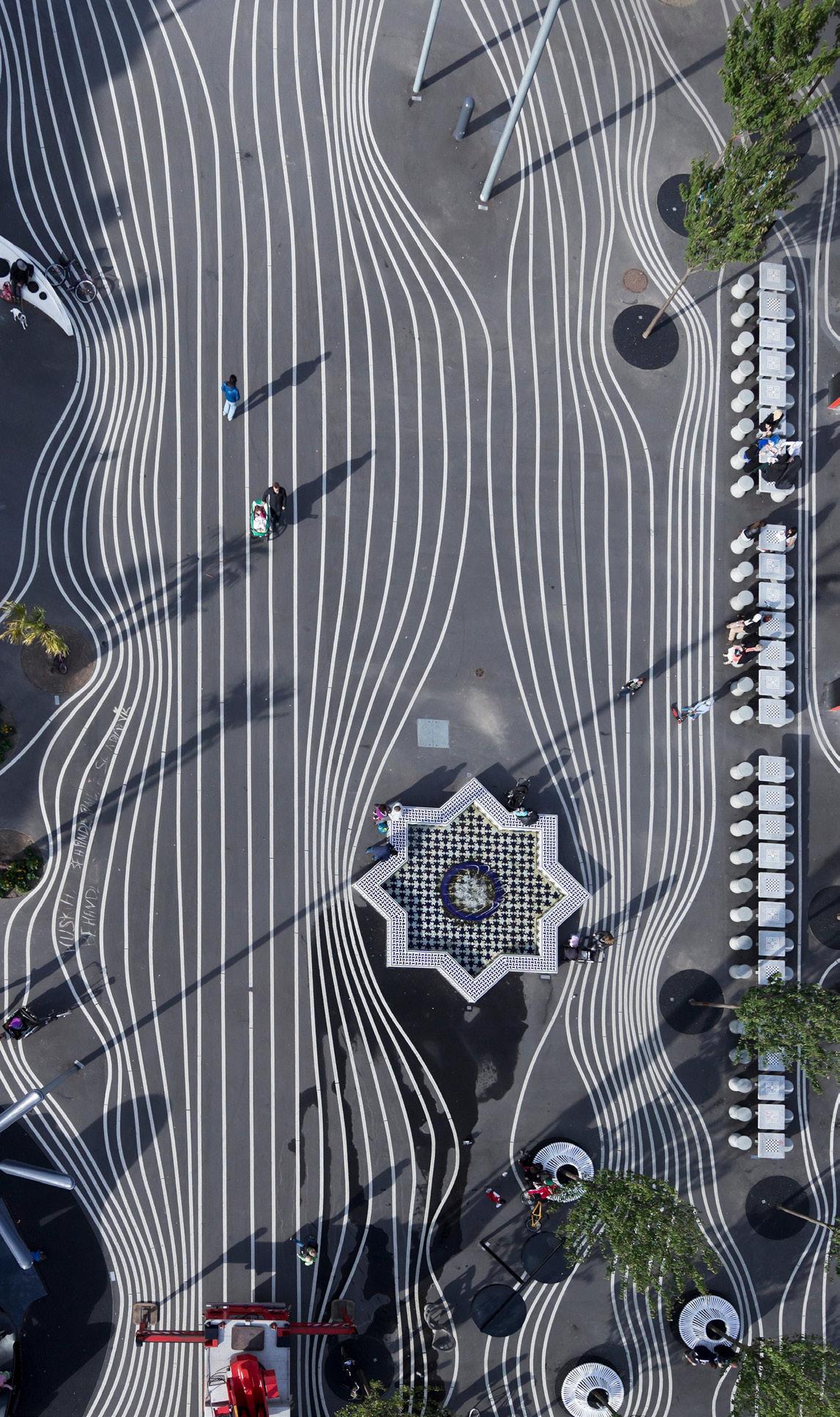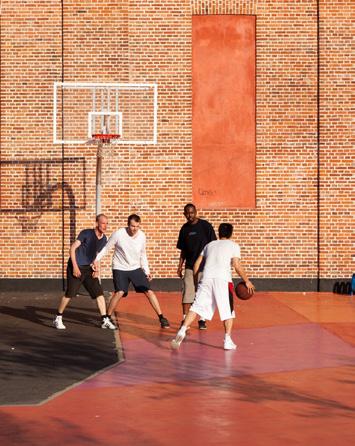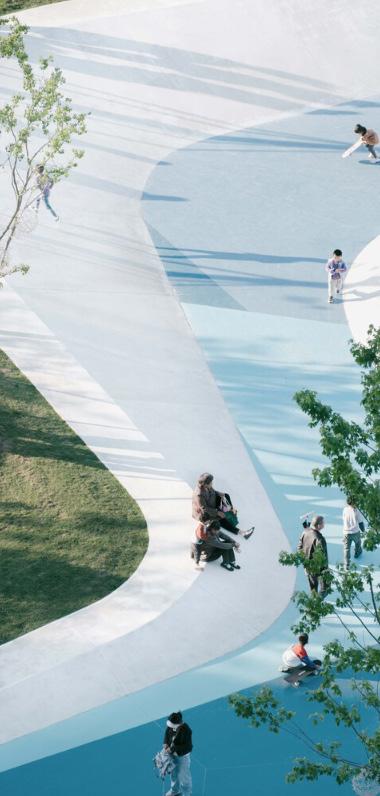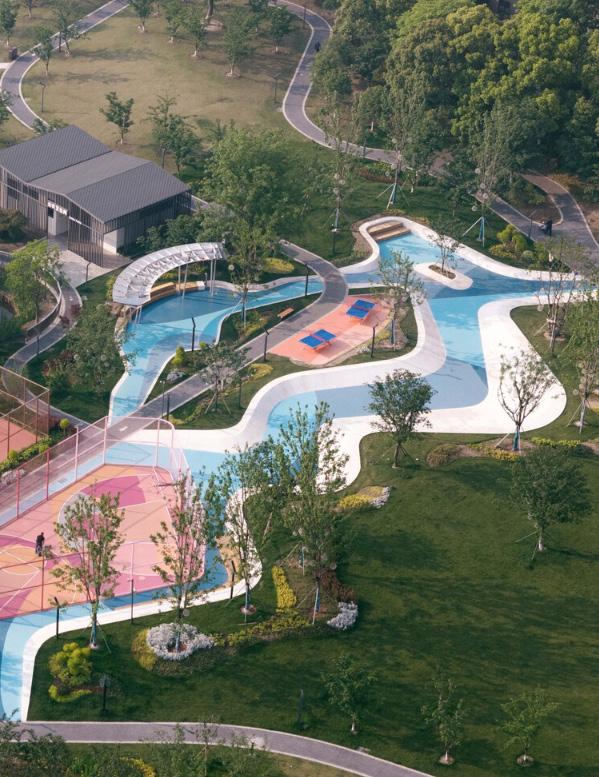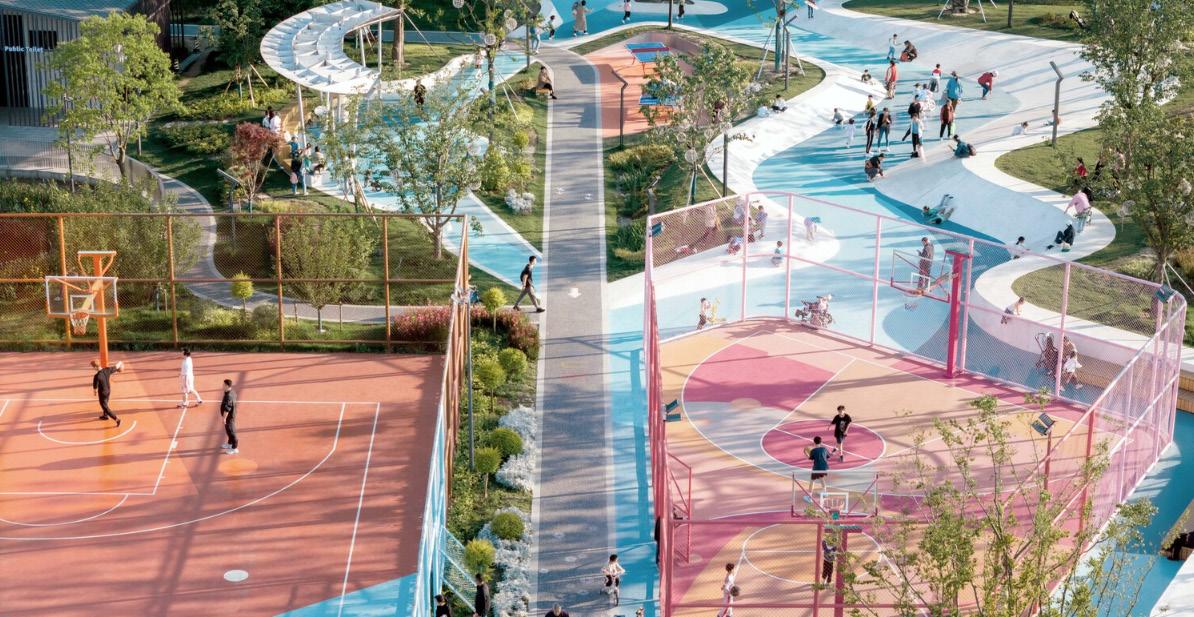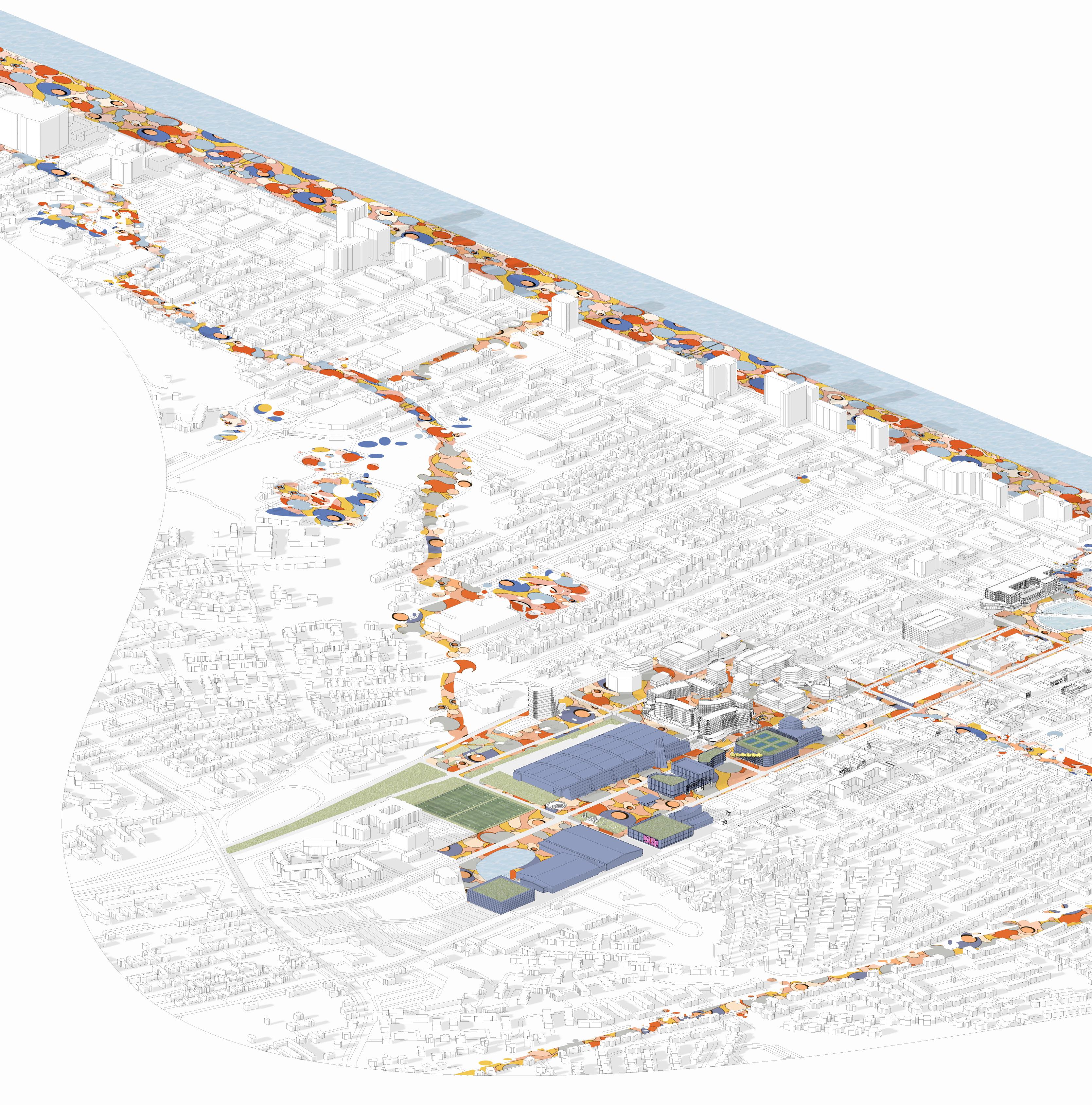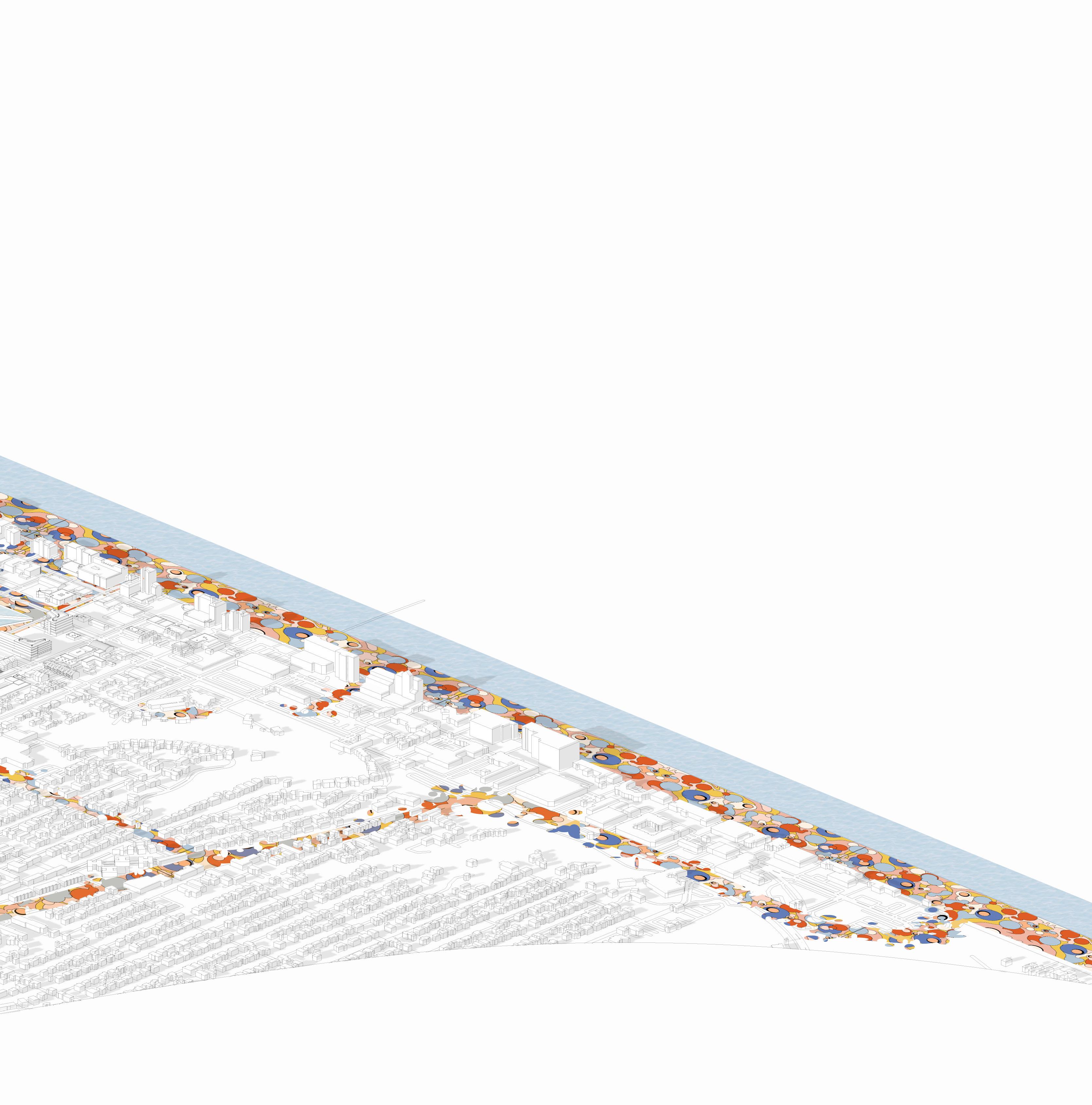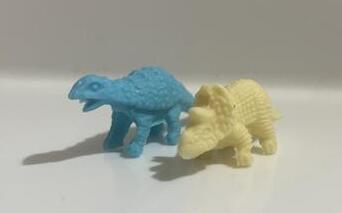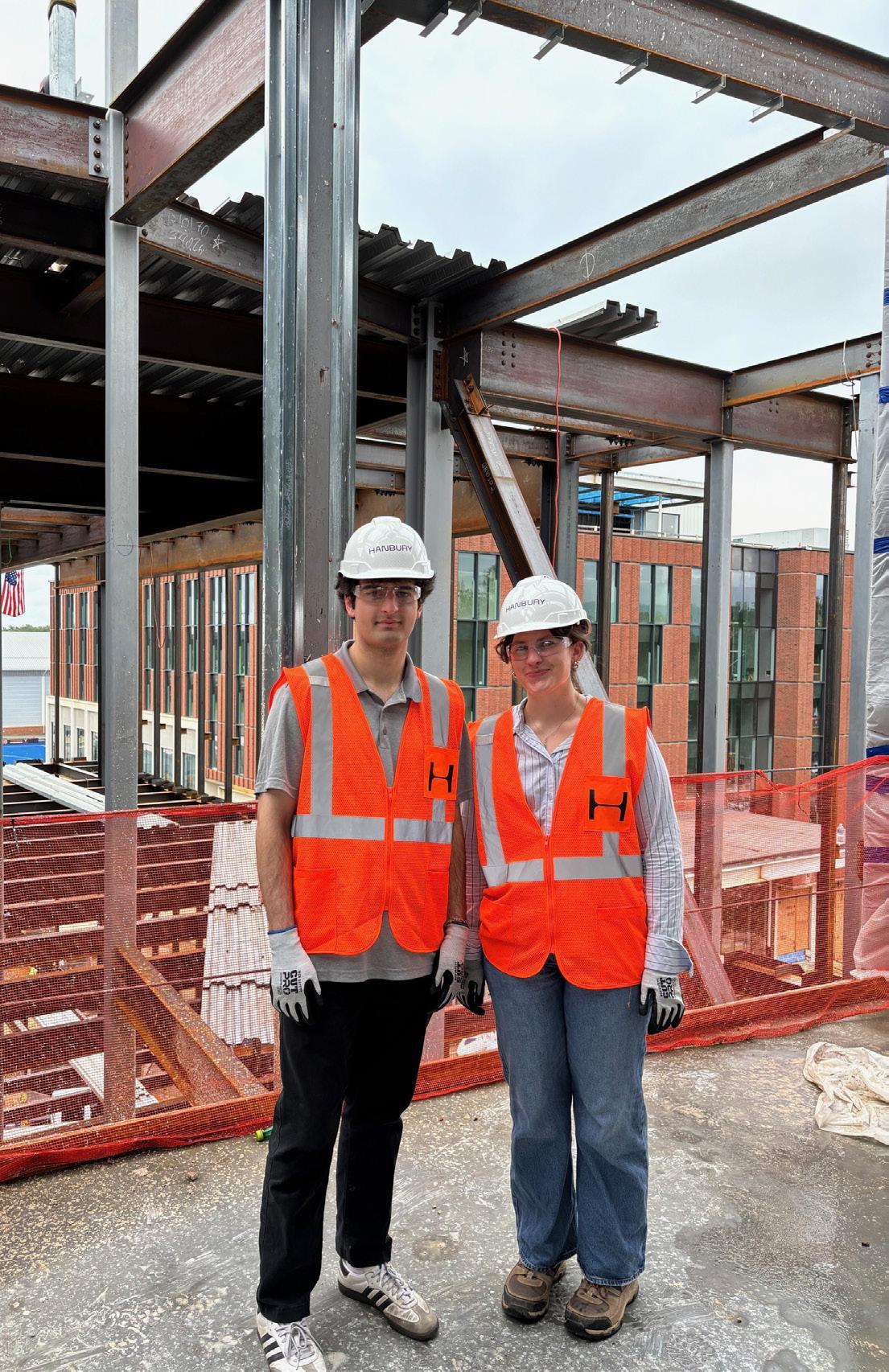HANBURY
Matthew Watson Marie Zenzie
Thank you to Hanbury and all those who have supported us and our research this summer. This proposal would not be the same without you.
Special gratitude to David Keith, Alec Yuzhbabenko, Adam Schultz, and Rob Reis.
A Frog?
History of Virginia Beach & Exploratory Findings
Our first act of research was exploration: we visited the beach, walked the boardwalk, and wandered the Resort District, all while documenting our findings.
Existing Arts Culture Existing Sports Culture Urban Planning Research
Further immersion in Virginia Beach led to discovering the city’s true culture beyond the boardwalk. We visited local restaurants, spoke with vendors at the farmers’ market, supported small businesses, and engaged with active muralists.
Sports were all around us: Jackalope Festival took place the second weekend of our research; while exploring the city, we consistently saw bikers, skateboarders, and joggers.
Experiential findings were translated into maps through urban planning research. We plotted the spaces that had grown familiar to us, understanding the borader context of Virginia Beach.
District Proposal Master Plan
Sports Facilities Programming
Streetscape: District Connectivity
From this research, we developed a district proposal, creating a centralized pedestrian hub of activity related to sports and arts, all while facilitating east-to-west connectivity with the boardwalk.
To support the district, we proposed a series of buildings with distinct programs that would sustain activity along 19th Street.
Doubling down on connectivity both within the district and reaching the boardwalk, the streetscape becomes a pedestriandominated network of plazas, fields, parks, and in-fil sapces
Oceanfront & Boardwalk:
Virginia Beach’s 35 miles of coastline and 3-mile long boardwalk attract millions of visitors each year. In 2023, the city welcomed over 14 million tourists, generating an impressive $3.8 billion for the local economy. Like many visitors new to Virginia Beach, we were initially struck by the Oceanfront—hotels dominate their respective blocks, the boardwalk seems to move with various activities, and lines of stores along Atlantic Avenue support this Resort District strip.
The Oceanfront hosts a wide variety of activity, including family gatherings, surfing competitions, and beach volleyball. The beach and boardwalk have historically served as a crossroads of Virginia Beach locals, visitors, vendors, creatives, and athletes. As the oldest cultural heart of Virginia Beach, the Oceanfront initially guided our understanding of the city’s development.
Resort District Hotel Development
Many of the millions of people drawn to this beach every year spend the majority of their time within a block or two of the Oceanfront—but it’s not their fault. Dozens of tourist-oriented souvenir stores define the corners along Atlantic Avenue. Hotels are packed on the same blocks as parking garages, restaurants, shops, bars, and parks. In peak season, cars shuffle along in search of parking as eager beachgoers look to cross to the boardwalk. It appears that the optimal strategy is to park as close to the coast as possible in the cheapest garage, spend the day on the beach, wander the boardwalk, and dine at a nearby bistro.
Part of this phenomenon is due to an invisible boundary separating these populated north-south routes from the east-west corridors. Lulls in activity along Arctic, Baltic, and Mediterranean Avenues conceal the activity of the ViBe District from would-be curious tourists.
We began to consider urban interventions that would foster connection between locals and tourists, between small businesses and the hightraffic present along the Oceanfront. As two students not from Virginia Beach, how could we create a proposal that was authentic to the existing culture?
Before the high-rise hotels that define Virginia Beach’s Resort District today, the area used to be rural land used for agriculture in the early 19th century. Following the arrival of rail travel to Princess Anne County in 1883, the Virginia Beach Hotel opened, later reopening as the Princess Anne Hotel in 1888.
In 1922, the concrete Virginia Beach Boulevard connecting Norfolk and the Oceanfront was completed, and the Cavalier Hotel was completed in 1927. These two opening attractions, combined with the popularization of the family automobile, created an influx of visitors.
In 1963, Virginia Beach and Princess Anne Country merged, encompassing a larger population. In the 1960s and 70s, increased demand led to a surge of development of new single family home neighborhoods. With the turn of the century, a new Town Center began construction; the area included the Westin hotel, restaurants, apartments, and shops.
Findings collected from pedestrian exploration in the ViBe District.
Vibrant murals bring life to the facades of primarily one-story brick buildings throughout Virginia Beach. This mural on The Pink Dinghy was painted by artist Marleigh Culver as part of the annual Mural Festival in August 2020. The ViBe Creative District makes an effort to support local artists and business through various sponsorphip and grant programs.
Public murals define the arts culture of the ViBe District and broader City of Virginia Beach.
SPORTS
SURFING
Sports History
Virginia Beach’s unique sports culture evolved through a rich history of surfing. In the 1920s and 30s, surfing was beginning to catch on from diaspora of Hawaiian culture to American coasts. The deWitt family pioneered lifeguarding and surfing in Virginia Beach, building the first boards for nearby beaches.
The East Coast Surfing Championship began in 1962 at Gilgo Beach in Long Island, New York, by a group of teenagers. The following year, it moved to Virginia Beach, where is has recurred annually since a the world’s longest-running surfing contest. Pete Smith, who had moved the contest, opened Virginia Beach’s first surf shop in 1963 with his friend Bob Holland.
Tony Hawk, the most famous skateboarder in the world, visited Virginia Beach in 1986 during the East Coast Assault vert competition. At the time, the Mount Trashmore half pipe was one of a few public skate parks in the U.S. In 2008, he returned to host Tony Hawk’s Boom Boom Huckjam, a tour of skating and motocross sports that stopped at the Virginia Beach Amphitheater. In 2023, Tony Hawk attended Jackapope Festival, a three-day summer event featuring all types of action sports.
A Hawk?
Tony Hawk photagraphed at Mount Trashmore in 1986
Jackalope Fest
A 3-day event that occurs every summer, taking over the Virginia Beach Oceanfront. Extreme sports athletes perform and compete for thousands of spectators. The sports include BASE jumping, bouldering, skateboarding, roller skating, and BMX biking.
The event also offer numerous food trucks, nearby restaurants, and surfing lessons. Live music and pop-up markets transform the event from just a sporting festival into an attraction that everyone can enjoy.
In 2023, Tony Hawk visited Virginia Beach’s Jackalope Fest.
Athletes perform for crowds of spectators at various set-up venus along the Oceanfront.
credit to watts_photos
Supporting Sports Centers
Atlantic Park’s Wavegarden and surrounding neighborhood of housing, entertainment venues, shops, restaurants, offices, and green spaces creates a community centered around Virginia Beach’s love for surfing. Atlantic Park will create a unique attraction to Virginia Beach for avid surfers, people who want to learn to surf, and curious VB locals.
With Atlantic Park’s opening devlopment of a hub centered around sport, activity, and entertainment, how can this culture expand throughout Virginia Beach?
Virginia Beach’s Convention Center hosts large events in its four bays of meeting spaces and reception ballroom. Events in the past have ranged from conferences, ceremonies, cultural events, trade shows, festivals, and fan gatherings. However, the Convention Center rarely reaches full capacity, with single events taking over all of the interior spaces. A couple of the four bays frequently remain vacant.
How can the purpose of the Convention Center be reimagined? How can an architectural renovation provide more flexibility for how the spaces are used?
A New Dome?
The Dome across from Atlantic Park reimagines the historic Virginia Beach Dome that was torn down in 1994.
Third Spaces:
‘Third spaces,’ a term coined by sociologist Ray Oldenburg, refers to median places that are not home or work; they foster community connection, warmth, and a sense of belonging. Examples of third spaces include coffee shops and parks, which encourage camaraderie, discussion, and social interaction. In Virginia Beach, the largest third space is the oceanfront and boardwalk, attracting millions of visiors each year.
Scattered Sports Centers & Shops:
Virginia Beach has a number of sports facilities and supporting shops. People surf, skateboard, bike, swim, play golf, baseball, basketball, and more.
However, these places are scattered throughout the city, lacking a pedestrianfriendly, walkable hub of activity connecting them all.
City Property:
Prospective growth of Virginia Beach was studied through mapping cityowned land. The cluster of large parcels surrounding the Convention and Sports Centers attracted attention.
In combination with other research and our direct observation, there appeared to be a disconnect between these blocks, Atlantic Park, and the Oceanfront. Focus was drawn to 19th Street as a central corridor or pedestrian activity along this east-to-west corridor.
Public & Commercial Parking:
Garages along Atlantic and Pacific Avenue often serve both reserved hotel parking as well as public oceanfront and commercial parking. Private lots supporting businesses parallel the coast and extend inland primarily along Laskin Road and 19th Street.
The parking lots and garages that are packed in the warmer months become nearly empty in the fall and winter.
District Proposal: 19th Street Steeze & ViBe District
The proposed sports district (orange) builds off of the existing ViBe Creative District (pink), creating a walkable streetscape where sports & arts will occur in collaboration.
NEPTUNE PARK
Activity on the Oceanfront & Boardwalk
The boardwalk is Virginia Beach’s largest and most attractive third space, drawing millions of visitors each year. As a continuous strip of activity, there are consistently people jogging, biking, and playing sports.
However, many tourists who visit Virginia Beach stay in a hotel on the oceanfront, remaining within a few-block distance from the beach their entire stay. Many visitors don’t get to experience all that Virginia Beach has to offer.
FISHING PIER
RUDEE LOOP
ATLANTIC
CONVENTION CENTER
SPORTS CENTER
Existing Sports Centers
Virginia Beach’s developments in the past two decades having been moving towards sports tourism, specifically around 19th Street. The Sports Center is successful in hosting a wide variety of traveling and local sporting events.
Atlantic Park will create a unique attraction to Virginia Beach for avid surfers, people who want to learn to surf, and curious VB locals.
Third Spaces
‘Third spaces’ refer to median places that are not home or work; they foster community connection and a sense of belonging. In Virginia Beach, there are many third spaces clustered around the city, such as The Pink Dinghy and surrounding small businesses.
However, many of these spaces are scattered throughout Virginia beach without proper connectivity between them. They become a destination to drive to, rather than a local business to stumble upon while walking.
VB TRAIL
GATEWAY
Proposed Mixed-Use Development
The Gateway is a proposed project of a mixed-use nieghborhood that would serve the expanded district. Public green spaces and paving bisect the blocks, carving pathways and third spaces for pedestrians.
The propsed sports district master plan builds off of the existing Sports Center and Convention Center, as well as Atlantic Park. The Gateway creates a mized-use neighborhood precedent unique to the district. The master plan is designed with respect to these buildings and projects, connecting them all to the Oceanfront.
Proposed Sports District
The sports district is woven within a greater network of pedestrian pathways, bike trails, and connected third spaces. Patterned pavers define the area and link it to the boardwalk, creating a crucial link between locals and tourists, and inviting pedestrians inland.
District Proposal Master Plan
The east-west corrdior of 19th Street is activated by public plazas and infill. Propsed buildings support sports culture in the district. Pedestrian activity occuring on the boardwalk is drawn inland, beginning with Atlantic Park and culminating in the large public plaza across from the Convention Center.
The proposed sports district for Virginia Beach grows outward from the Convention Center along 19th Street. Suggested garages support the prospective growth of this area. The district becomes a crossroads of athletes, fans, Virginia Beach locals, tourists, students, artists, and researchers.
The northwestern blocks of the district become centered around team sports: ice hockey, basketball, soccer, lacrosse, and football. Renovation of Bays C &D of the Convention Center revitalize sports, becoming the heart of the district. Interior rinks open up to a park and fields through garage doors placed on the western wall.
The 18th and 19th Street blocks reciprocal to the Convention Center are hubs for extreme sports. The proposed facilities support BMX biking, skateboarding, rock climbing, and gymnastics. Open plazas surrounding these buildings provide space for free public interaction with sports.
The eastern block features a culinary school, blending nutrition studies that go hand-in-hand with the sports district and the growing culture of local restuarants in Virginia Beach. Student housing supports this community, allowing them to live in the heart of the district.
Atlantic Park’s Wavegarden and surrounding neighborhood of housing, entertainment venues, shops, restaurants, offices, and green spaces creates a community centered around Virginia Beach’s love for surfing. Atlantic Park will create a unique attraction to Virginia Beach for avid surfers, people who want to learn to surf, and curious VB locals.
District Activity:
Building programs support sports activity along 19th Street.
By engaging sidewalks, roads, plazas, alleys, and vacant lots, street sports become the thread of public activity throughout the district.
Hospitality & Culinary Higher Education
The Culinary School would serve as a crossroads of nutrition, education, and local restaurants in Virginia Beach. Cooking labs, demonstration labs, and lecture halls would provide culinary students the necessary facilities to complete their education. Formal dining and reception would be used during culinary reviews for the students, as well as host larger formal events when not in educational use.
Parking Garage with Rooftop Fields & Courts
Rooftop parking decks provide a prime spot for maximized sport activity within the district. This parking garage is equipped with soccer fields for low-key pick-up games and athletes practing or warming up.
Apartments with Rooftop Restaurants
Housing will sustain a consistent level of activity in the sports district. Residents will be able to participate in various events, festivals, games, and public activities. By building up a local neighborhood, the public plaza will be bustling with activity: parents taking their children outside to play, students taking a break between classes, athletes recovering from a game, and sports fans grabbing a bite to eat.
Wellness & Physcial Therapy Center
The Wellness & Physical Therapy Center will be become the crossroads of a diverse group of althetes, researchers, designers, and students. By serving a wide variety of people in the district, the building forms a symbiotic relationship with the higher education hospitality, culinary, & nutrition programs, local housing, restaurants, and sporting facilities.
Extreme Sports Warehouse with Public Plaza
Jackalope Festival is a crucial example of the culture of extreme sports in Virginia Beach. The 18th and 19th Street blocks reciprocal to the Convention Center will be hubs to allow these types of extreme sports to occur. The proposed facilities support BMX biking, skateboarding, rock climbing, and gymnastics. Open plazas surrounding these buildings provide space for free public interaction with sports.
Parking Garage with Rooftop BMX Biking
This parking garage is located next to the extreme sports gym and large open plaza, making it the prime spot to be incoporated into extreme sports. A freestyle track on the roof of the garage will allow for BMX biking to occur. The wall of the garage can be used as a projection screen at night for sports watch parties, public move nights, or festival events.
Sports Center
The Virginia Beach Sports Center will continue to host large sporting events, populating activity within the district. The surrounding areas will be revitalized with green space and connecting to the public plaza.
Pedestrian Movement:
Vast lots that support the Sports and Convention Centers often remain vacant, while Oceanfront parking is consistently competitive in the summer. While 19th Street provides generous sidewalks along some stretches of pavement, the pedestrian experience is still destination based: car to restaurant to shop to car. Pedestrians move in a grid, following the streets.
When considering our observations of pedestrian movement within the ViBe District, inlcuding our own, we began to plan how it could be altered.
Patterned paving and murals connect the district. The ground floors of buildings open up to the public. Pedestrians are naturally encouraged to meander, rather than travel on a pre-determined path. In this manner, the district becomes a true thrid space: one that fosters long-term community.
Masterplanning attractive sports facilities is only a piece of the proposed district. Where can a sports team dine after a game? Where can parents take thier children to play? Where can students live and interact with researchers? Where can someone join a pickup backetball game, or learn to surf? Where can artists create work on a public scale?
Streetscape: Public Plazas & In-Fill
By engaging sidewalks, roads, plazas, alleys, and vacant lots, street sports become the thread of public activity throughout the district.
The large public plaza provides open space with scattered green areas for pedestrians to roam and pick-up games to happen naturally. A central covered pavilion will host a basketball court in the summer, and will be transformed into an ice-skating rink in the winter.
The patterned pavers create artistic connectivity throughout the district. Public plazas, sidewalks, and in-fill areas alike are drawn together through these defining colors. Local muralists are invited to participate in the creation of the district “brand.” If residents can identify with their shared public space, it becomes a self-sustaining place of culture and identity.
Students living in nearby higher education housing take a break between classes. Parents bring their children to play outside. Friends meet up to play basketball. A curious tourist follows the path from the boardwalk. A traveling soccer team gets dinner after a tournament.
Multi-Use Garages:
The proposed district will see an influx of people, inlcuding athletes, students, tourists, artists, new residents, and researchers.
Parking garages are a necessary aspects of the master plan in order to support this new influx of activity along 19th Street. However, a parking garage does not have to be merely concrete decks stacked with a column grid. The top slab deck and facades can be utilized in ways that are useful to the district’s sports culture.
Potential programs include rooftop basketball courts, soccer fields, parks, restaurants, tennis courts, rock climbing, and projection screens.
A public stair on the side of the garages encourgaes curious pedestrians to explore the rooftop.
Hospitality & Culinary Higher Education
Incorporated student housing on upper floors would allow students to be integrated into the Virginia Beach sports district area, where they can collaborate with the nutrition programs and research.
Rooftop restaurants and bars would create a hub of local businesses for both locals and tourists to enjoy.
Incorporated student housing on upper floors would allow students to be integrated into the Virginia Beach sports district area, where they can collaborate with the nutrition programs and research.
Rooftop restaurants and bars would create a hub of local businesses for both locals and tourists to enjoy.
Parking Garage & Rooftop Sports
Rooftop parking decks provide a prime spot for maximized sport activity within the district. This parking garage is equipped with soccer fields for low-key pick-up games and athletes practing or warming up.
The stair on the side of the garage provides public access to the rooftop, encouraging pedestrians to walk up. By transforming the top deck of the garage, it becomes a crucial part of the districted, integrated into the sports and arts culture.
Apartments & Restaurants
Housing will sustain a consistent level of activity in the sports district. Residents will be able to participate in various events, festivals, games, and public activities. By building up a local neighborhood, the public plaza will be bustling with activity: parents taking their children outside to play, students taking a break between classes, athletes recovering from a game, and sports fans grabbing a bite to eat.
By creating a typology of including restaurants on the lower levels of the buildings, pedestrians are more likely to engage with the sports programs inside as well as support local cuisine.
Rooftop restaurants will maximize surface area of buildings, while providing residents of the apartments, locals, tourists, and athletes a unique dining experience. By activating the rooftops of all district buildings, the upper floors become a secondary city scape of activity.
Wellness & Physical Therapy Center
The Wellness & Physical Therapy Center will be become the crossroads of a diverse group of althetes, researchers, designers, and students. By serving a wide variety of people in the district, the building forms a symbiotic relationship with the higher education hospitality, culinary, & nutrition programs, local housing, restaurants, and sporting facilities.
Programs would include commercial gyms, wellness facilities, sports stores, prototyping labs, physical therapy labs, lecture halls, rooftop yoga, and restaurants.
Wellness & Physical Therapy Center
The LeBron James Innovation Center at Nike World Headquarters indcludes design studios, offices, prototyping labs, an indoor sports research facility, and a highfunctioning sport technology workshop. The four-story atrium unites all of these various programs, fostering spontaneous interactions and a culture of collaboration between athletes, researchers, and designers.
Extreme Sports Gym
Jackalope Festival is a crucial example of the culture of extreme sports in Virginia Beach. The 18th and 19th Street blocks reciprocal to the Convention Center will be hubs to allow these types of extreme sports to occur. The proposed facilities support BMX biking, skateboarding, rock climbing, and gymnastics. Open plazas surrounding these buildings provide space for free public interaction with sports.
Hollaway Studio’s F51 is multi-story skate park in Folkstone, England. The building features two concrete skate bowls, a boxing gym, and obstacles of stairs, railings, and benches. Additionally, an Olympic level climbing speedwall links all of the floors. The ground floor of F51 inlcudes a cafe space.
Parking Garage, Rooftop
BMX Biking & Plaza
The large public plaza provides open space with scattered green areas for pedestrians to roam and pick-up games to happen naturally. A central covered pavilion will host a basketball court in the summer, and will be transformed into an ice-skating rink in the winter.
Bicentennial Unity Plaza in Indianapolis is situated next to Gainbridge Fieldshouse, an indoor arena. The open community space features interactive sculptures , large-scale art, and a basketball court that transforms seasonally into an iceskating rink. The large gateway stainless steel centerpiece is designed by artist Herman Mejia, spanning the width of the plaza and marking an entrance. Open spaces support individually programmed community events.
Parking Garage, Rooftop BMX Biking, & Plaza
This parking garage is located next to the extreme sports gym and large open plaza, making it the prime spot to be incoporated into extreme sports. A freestyle track on the roof of the garage will allow for BMX biking to occur. The wall of the garage can be used as a projection screen at night for sports watch parties, public move nights, or festival events.
Convention Center Renovation
Renovation of Bays C&D of the Convention Center allow for ice hockey, basketball, tennis, and other indoor sports to occur.
Garage doors open the side wall to a park with outdoor courts and soccer fields.
Superkilen Copenhagen, Denmark
Huachiao Vibrant Sports Park
Su Zhou Shi, China
A Dino?


